Brother LS-2125i: ИНСТРУКЦИИ ПО ТЕХНИКЕ БЕЗОПАСНОСТИ
ИНСТРУКЦИИ ПО ТЕХНИКЕ БЕЗОПАСНОСТИ: Brother LS-2125i

ИНСТРУКЦИИ ПО ТЕХНИКЕ БЕЗОПАСНОСТИ
При эксплуатации швейной машины следует всегда соблюдать перечисленные ниже основные меры безопасности.
Прочтите все инструкции перед использованием
ВНИМАНИЕ!
Для предотвращения возможности поражения электрическим током
:
1.
Никогда не оставляйте швейную машину без присмотра при вставленной в розетку вилке сетевого шнура. Сразу же
после использования швейной машины или перед ее чисткой всегда вынимайте вилку сетевого шнура из розетки.
2.
Всегда отключайте сетевой шнур перед заменой лампы подсветки. Заменяйте лампы на однотипные, мощностью 15 Вт
ПРЕДУПРЕЖДЕНИЕ !
Для снижения возможности получения ожогов, возгорания, поражения
электрическим током или травм:
1.
Не допускайте использования машины в качестве игрушки. Необходимо быть особенно внимательным, когда машина
используется детьми или когда во время работы на машине рядом находятся дети.
2.
Используйте машину только по ее прямому назначению, как описано в настоящем руководстве. Используйте только те
принадлежности, которые рекомендованы изготовителем и указаны в данном руководстве.
3.
Никогда не используйте швейную машину, если у нее поврежден сетевой шнур или вилка, если машина плохо
работает, если ее уронили или повредили, если в машину попала вода. В этих случаях машину следует отправить
официальному дилеру компании BROTHER вашего региона или в уполномоченный сервисный центр для проверки,
ремонта и наладки ее электрической или механической части.
4.
Никогда не работайте на машине при закрытых вентиляционных отверстиях. Содержите вентиляционные отверстия
машины и педаль в чистоте, своевременно очищайте их от пыли, грязи, обрывков ткани и ворса.
5.
Не роняйте в отверстия машины и не вставляйте в них никаких посторонних предметов.
6.
Не используйте машину для работы вне помещения.
7.
Не используйте машину в помещениях, в которых распыляют те или иные аэрозоли или применяют чистый кислород.
8.
Для отключения машины от электрической сети установите сетевой выключатель в положение, обозначенное
символом «О», соответствующее выключению, а затем выньте вилку сетевого шнура из розетки.
9.
При отключении машины от сети не вытягивайте вилку за шнур. Возьмитесь за вилку и выньте ее из электрической
розетки.
10. Держите пальцы вдали от движущихся частей машины. Особенная осторожность требуется в непосредственной
близости к игле машины.
11. Применяйте только соответствующую игольную пластину. Использование неподходящей игольной пластины может
привести к поломке иглы.
12. Не пользуйтесь погнутыми иглами.
13. Не тяните и не подталкивайте ткань во время шитья. Это может привести к отклонению иглы и ее поломке.
14. При выполнении любых операций в районе иглы, например при заправке нити в иглу, замене иглы или шпульки или
смене прижимной лапки и т. п., выключите машину, установив сетевой выключатель в положение, обозначенное
символом «О».
15. При снятии крышек, смазке или выполнении любых других регулировок, разрешенных пользователю и описанных в
данном руководстве, всегда отключайте машину от электрической сети.
16. Малолетним детям, а также физически или умственно неполноценным людям пользоваться швейной машиной без
присмотра не разрешается.
17. Следите за детьми. Не допускайте, чтобы они играли со швейной машиной.
СОХРАНИТЕ ЭТО РУКОВОДСТВО Эта машина предназначена только для бытового применения

Подключение соединителей и выключатель питания/ лампочки подсветки
1.
Вставьте трехконтактный разъем сетевого шнура в
гнездо на машине.
2.
Вставьте вилку сетевого шнура в настенную розетку.
-
Перед тем как оставить машину без присмотра,
выключите ее сетевым выключателем или выньте
вилку сетевого шнура из настенной розетки.
Переключатель для включения или выключения сетевого
питания и лампочки подсветки.
1
Включение
2
Выключение
-
При выполнении технического обслуживания
швейной машины, снятии крышек и замене лампочки,
машина должна быть обесточена отключением
сетевого шнура от розетки.
1
2

CONTENTS
Page
PRINCIPAL PARTS.................................................................... 1
PRINCIPAL PARTS.................................................................... 2
ACCESSORIES .......................................................................... 3
OPERATING YOUR SEWING
MACHINE ................................................................................ 4
Connecting Plugs ............................................................ 4
Main Power and Sewing Light Switches .......................... 5
Foot Controller ................................................................ 5
Inserting the Needle ........................................................ 6
Checking the Needle....................................................... 6
Changing the Presser Foot ............................................... 7
Converting to Free-Arm Style........................................... 8
Steadying the Machine .................................................... 8
VARIOUS CONTROLS ............................................................. 9
Pattern Selection Dial ...................................................... 9
PATTERNS AND STITCH NAMES........................................... 10
Reverse Sewing Lever .................................................... 12
THREADING THE MACHINE ................................................. 12
Winding the Bobbin ...................................................... 12
Lower (bobbin) Threading ............................................. 14
Upper (Needle) Threading............................................. 15
Drawing Up Lower (bobbin) Thread .............................. 17
Twin-Needle Sewing ..................................................... 18
Thread Tension ............................................................. 20
RELATIVE CHART OF SEWING FABRICS,
NEEDLES AND THREADS COMBINATIONS.......................... 22
Straight Stitching .......................................................... 24
Zigzag Stitching............................................................. 26
Blind Hem Stitching ...................................................... 27
Elastic Stitching ............................................................. 28
Shell Tuck Stitching....................................................... 29
Making a Buttonhole ..................................................... 30
Buttonhole Fine Adjustment .......................................... 34
Button Sewing ............................................................... 35
Zipper Insertion............................................................. 36
Gathering ...................................................................... 37
Darning......................................................................... 38
Appliques ...................................................................... 39
Monogramming and Embroidering .............................. 40
Changing the Bulb......................................................... 42
Oiling............................................................................ 43
Cleaning........................................................................ 43
Performance Checklist................................................... 45
PERFORMANCE CHECK LIST........................................ 46
Repacking the Machine................................................. 54
INDEX.............................................................................................. 55
TABLE DES MATIÉRES
Page
PIECES PRINCIPALES ................................................................1
PIÉCES PRINCIPALES ................................................................2
ACCESSOIRES ...........................................................................3
FONCTIONNEMENT DE LA
MACHINE A COUDRE..............................................................4
Raccordement..................................................................4
Interrupteur principal et de la lampe ................................5
Pédale..............................................................................5
Pour mettre l’aiguille en place..........................................6
Vérification de l’aiguille ...................................................6
Changement de pied-de-biche .........................................7
Modèle bras libre .............................................................8
Pour stabiliser la machine ................................................8
DESCRIPTIF DES DIFFERENTES COMMANDES ........................9
Sélecteur de modèle de point...........................................9
MOTIFS ET NOMS DES POINTS .............................................10
Levier de couture en marche arrière...............................12
ENFILAGE DE LA MACHINE ...................................................12
Remplissage de la canette ..............................................12
Mise en place du fil inférieur (canette) ...........................14
Mise en place du fil supérieur
(fil de l’aiguille) ..............................................................15
Remontée du fil inférieur (canette) .................................17
Couture avec l’aiguille jumelée......................................18
Tension des fils ..............................................................20
TABLEAU DES COMBINAISONS TISSU/AIGUILLE/FIL ..........22
Point droit ......................................................................24
Points zigzag..................................................................26
Point élastique invisible .................................................27
Point élastique ...............................................................28
Point picot .....................................................................29
Création d’une boutonnière ...........................................30
Equilibrage des boutonnières .........................................34
Pour coudre un bouton ..................................................35
Insertion de fermeture à glissière ....................................36
Pour froncer un tissu ......................................................37
Reprisage .......................................................................38
Appliques ......................................................................39
Monogrammes et broderies............................................40
Remplacement de l’ampoule..........................................42
Graissage .......................................................................43
Nettoyage ......................................................................43
Liste de vérification en cas de défaillances .....................45
LISTE DE VERIFICATION EN CAS DE DEFAILLANCES ...48
Emballage de la machine ...............................................54
INDEX .............................................................................................. 56

INDICE
Página
ELEMENTOS PRINCIPALES ......................................................... 1
ELEMENTOS PRINCIPALES ......................................................... 2
ACCESORIOS.................................................................................... 3
FUNCIONAMIENTO DE LA MÁQUINA DE COSER .................. 4
Conexión de los enchufes ......................................................... 4
Interruptor principal y de luz .................................................. 5
Pedal ......................................................................................... 5
Inserción de la aguja ................................................................ 6
Comprobación de la aguja ....................................................... 6
Cambio del prensatelas ............................................................ 7
Conversión en modalidad de brazo libre.................................. 8
Para estabilizar la máquina ..................................................... 8
DISTINTOS MANDOS ..................................................................... 9
Selector de puntadas ................................................................ 9
DIBUJO Y NOMBRE DE LOS PUNTOS ...................................... 11
Palanca de retroceso .............................................................. 12
ENHEBRADO DE LA MÁQUINA................................................. 13
Bobinado de la canilla ........................................................... 13
Enhebrado inferior (de la canilla) ......................................... 14
Enhebrado superior (de la aguja) .......................................... 15
Para sacar el hilo de la canilla .............................................. 17
Costura con aguja doble ........................................................ 19
Tensión de los hilos ................................................................ 20
TABLA DE RELACIÓN ENTRE TEJIDOS, HILOS Y AGUJAS 23
Puntada recta ......................................................................... 24
Puntadas zigzag...................................................................... 26
Puntadas invisibles ................................................................. 27
Puntada elástica ..................................................................... 28
Puntada ondas ........................................................................ 29
Para coser ojales .................................................................... 30
Ajuste fino de los ojales.......................................................... 34
Coser botones ......................................................................... 35
Poner de cremalleras.............................................................. 36
Fruncido ................................................................................. 37
Zurcido ................................................................................... 38
Aplicaciones ........................................................................... 39
Monogramas y bordados ........................................................ 40
Cambio de la bombilla ........................................................... 42
Engrasado .............................................................................. 43
Limpieza ................................................................................. 44
Listado de posibles incidencias .............................................. 45
LISTADO DE POSIBLES INCIDENCIAS.............................. 50
Embalaje de la máquina......................................................... 54
INDICE ............................................................................................ 57
СОДЕРЖАНИЕ
Стр.
ОСНОВНЫЕ ЧАСТИ........................................................... 1
ОСНОВНЫЕ ЧАСТИ........................................................... 2
ПРИНАДЛЕЖНОСТИ......................................................... 3
РАБОТА НА ШВЕЙНОЙ МАШИНЕ ................................... 4
Подключение электропитания ...................................... 4
Выключатель питания и лампочки подсветки .............. 5
Педаль ............................................................................. 5
Установка иглы ............................................................... 6
Проверка иглы ................................................................ 6
Замена прижимной лапки .............................................. 7
Переоборудование машины для работы с функцией
«свободный рукав».......................................................... 8
Обеспечение устойчивости машины ............................. 8
ОРГАНЫ УПРАВЛЕНИЯ..................................................... 9
Ручка выбора вида строчки ............................................ 9
НАИМЕНОВАНИЯ СТРОЧЕК И СООТВЕТСТВУЮЩИЕ
ИМ ПОЗИЦИИ ПЕРЕКЛЮЧАТЕЛЯ ................................ 10
Клавиша шитья в обратном направлении ................... 12
ЗАПРАВКА НИТИ В МАШИНУ ........................................ 12
Намотка шпульки ......................................................... 14
Заправка нижней нити (шпульки) ............................... 14
Заправка верхней нити (в иглу).................................... 15
Вытягивание нижней (шпульной) нити ...................... 17
Шитье двойной иглой .................................................. 18
Натяжение нитей .......................................................... 20
ТАБЛИЦА РЕКОМЕНДУЕМЫХ КОМБИНАЦИЙ
ТКАНЕЙ, ИГЛ И НИТЕЙ .................................................. 22
Прямая строчка............................................................. 24
Строчка «зигзаг» .......................................................... 26
Подрубка ....................................................................... 27
Эластичная строчка ...................................................... 28
Строчка-ракушка.......................................................... 29
Выметывание петель..................................................... 30
Точная настройка при выметывании петель ............... 34
Пришивание пуговиц ................................................... 35
Вшивание застежки «молния» ..................................... 36
Выполнение сборок ...................................................... 37
Штопка.......................................................................... 38
Аппликация .................................................................. 39
Выстрачивание монограмм и вышивание ................... 40
Замена лампочки подсветки......................................... 42
Смазка ........................................................................... 43
Чистка ........................................................................... 43
Порядок проверки машины при возникновении
проблем ......................................................................... 45
ПОРЯДОК ПРОВЕРКИ МАШИНЫ ПРИ
ВОЗНИКНОВЕНИИ ПРОБЛЕМ ............................... 46
Повторная упаковка машины ...................................... 54
УАЗАТЕЛЬ.......................................................................... 55

1
1
3
4
5
6
2
L
O
H
I
J
K
M
N
P
7
8
9
0
A
B
C
E
F
D
G
1
3
4
5
6
2
PRINCIPAL PARTS
* The illustrations of the sewing machine on the following pages may
differ slightly from your machine.
PIECES PRINCIPALES
* Les illustrations représentées aux pages suivantes peuvent différer
légèrement de votre machine à coudre.
ELEMENTOS PRINCIPALES
*
Las ilustraciones de la máquina de coser, representadas en las siguientes
páginas, pueden variar un poco con respecto del modelo adquirido.
ОСНОВНЫЕ ЧАСТИ
*
Изображения швейной машины на последующих страницах могут
незначительно отличаться от Вашей машины.

2
PRINCIPAL PARTS
a
Pattern selection dial
b
Buttonhole fine-adjusting screw
c
Thread take-up lever
d
Extension table with accessory storage
e
Upper tension control dial
f
Reverse sewing lever
g
Thread cutter
h
Presser foot holder assembly
i
Presser foot screw
j
Presser foot (Zigzag)
k
Needle plate (Zigzag)
l
Shuttle hook
m
Bobbin case
n
Feed dogs
o
Needle
p
Needle clamp screw
q
Shuttle cover
r
Spool pin
s
Bobbin winder
t
Balance wheel
u
Foot controller jack
v
Presser foot lever
w
Main power/sewing light switch
x
Built-in handle
y
Thread guide/bobbin winding tension disc
z
Foot controller
PIÉCES PRINCIPALES
a
Sélecteur de modèle de point
b
Vis d’équilibrage des boutonnières
c
Levier releveur de fil
d
Table d’extension avec tiroir à accessoires
e
Sélecteur de tension supérieure
f
Levier de couture en marche arrière
g
Coupe-fils
h
Support du pied-de-biche
i
Vis du pied-de-biche
j
Pied-de-biche (zigzag)
k
Plaque à aiguille (zigzag)
l
Crochet de la navette
m
Boîtier de la canette
n
Griffes d’entraînement
o
Aiguille
p
Vis de fixation de l’aiguille
q
Shytttle cuver
r
Porte-bobine
s
Dévidoir
t
Volant à main
u
Prise de la pédale
v
Levier du pied-de-biche
w
Interrupteur principal/de la lampe
x
Poignée intégrée
y
Guide-fils/Disque de tension du dévidoir
z
Pédale
ELEMENTOS PRINCIPALES
a
Selector de puntadas
b
Tornillo de ajuste fino de los ojales
c
Palanca tirahilos
d
Soporte de accesorios
e
Disco de control de la tensión superior
f
Pulsador de retroceso
g
Cortador de hilo
h
Conjunto del soporte del prensatelas
i
Tornillo del prensatelas
j
Prensatelas (zigzag)
k
Placa de agujas (zigzag)
l
Garfio de la lanzadera
m
Portacanillas
n
Alimentadores
o
Aguja
p
Tornillo de sujeción de la aguja
q
Cubierta exterior del garfio
r
Portacarretes
s
Conjunto de bobinado de la canilla
t
Ruedecilla
u
Enchufe del pedal
v
Palanca del prensatelas
w
Interruptor principal y de luz
x
Asa incorporada
y
Guía hilos/Disco de tensión para bobinado
z
Pedal
ОСНОВНЫЕ ЧАСТИ
a
Ручка выбора вида строчки
b
Винт точной настройки выметывания петель
c
Рычаг нитепритягивателя
d
Съемный столик с отделением для хранения принадлежностей
e
Дисковый регулятор натяжения верхней нити
f
Клавиша шитья в обратном направлении
g
Приспособление для обрезки нити
h
Узел адаптера прижимной лапки
i
Винт крепления адаптера прижимной лапки
j
Прижимная лапка (для строчки «зигзаг»)
k
Игольная пластина (для строчки «зигзаг»)
l
Челночный узел
m
Шпульный колпачок
n
Гребенки транспортера ткани
o
Игла
p
Винт иглодержателя
q
Крышка челночного устройства
r
Стержень для установки катушки
s
Устройство намотки шпулек
t
Маховик
u
Гнездо подключения педали
v
Рычаг прижимной лапки
w
Выключатель питания и лампочки подсветки
x
Встроенная ручка для переноски
y
Направляющая нити/регулятор натяжения нити при намотке
на шпульку
z
Педаль

3
1
X59369-251
2
X59370-051
7
XA3442-151
9
130920-051
3
X59375-051
4
129583-001
5
X57521-001
6
X52800-150
8
X55467-051
ACCESSORIES
a
Buttonhole foot (1 pc.)
b
Zipper foot (1 pc.)
c
Button sewing Foot (1 pc.)
d
Needle set (regular single needle No. 14) (3 pcs.)
e
Twin needle (1 pc.)
f
Bobbins (3 pcs.)
g
Darning plate (1 pc.)
h
Screwdriver (1 pc.)
i
Extra spool pin (1 pc.)
Parts code for zigzag presser foot: 138135-051
Foot controller: X57319-051 (110/120V Area)
XA6422-021 (220/240V Area)
XA6412-021 (U.K.)
XA6414-021 (Australia, New Zealand)
The above accessories are stored in the accessory bag inside the
extension table. These accessories have been designed to help
complete most sewing tasks.
ACCESSOIRES
a
Pied pour boutonnières (1 pc.)
b
Pied pour fermetures à glissière (1 pc.)
c
Pied pour boutons (1 pc.)
d
Jeu d’aiguilles (aiguille normale No. 14) (3 pcs.)
e
Aiguille jumelée (1 pc.)
f
Canettes (3 pcs.)
g
Plaque à repriser (1 pc.)
h
Tournevi (1 pc.)
i
Porte-bobine supplémentaire (1 pc.)
Code des éléments pour le pied Zigzag: 138135-051
Pédale du rhéostat:X57319-051 (Zones 110/120V)
XA6422-021 (Zones 220/240V)
XA6412-021 (R.U.)
XA6414-021 (Australie, Nouvelle Zélande)
Les accessoires mentionnés ci-dessus se trouvent dans un sac, à
l’intérieur de la table d’extension. Ils ont été conçus pour vous
permettre de réaliser la plupart des tâches de couture. Pour de
plus amples renseignements les concernant, veuillez vous
reporter aux pages indiquées.
ACCESORIOS
a
Prensatelas para ojales (1 pza)
b
Pata de cremalleras (1 pza)
c
Prensatelas para la costura de botones (1 pza)
d
Paquete de agujas (agujas simples normales No 14) (3 pzas)
e
Aguja doble (1 pza)
f
Canillas (3 pzas)
g
Placa de zurcir (1 pza)
h
Destornilladore (1 pza)
i
Portacarretes extra (1 pza)
Código del prensatelas para la puntada zigzag: 138135-051
Pedal:
X57319-051 (zona con 110/120V)
XA6422-021 (zona con 220/240V)
XA6412-021 (Reino Unido)
XA6414-021 (Australia, Nueva zelanda)
Los accesorios mencionados arriba se encuentran en la bolsa de
accesorios, dentro del soporte de accesorios. Han sido concebidos
para poder realizar la mayoría de las operaciones de costura.
ПРИНАДЛЕЖНОСТИ
a
Лапка для выметывания петель (1 шт.)
b
Лапка для вшивания застежки «молния» (1 шт.)
c
Лапка для пришивания пуговиц (1 шт.)
d
Набор игл (обычная одиночная игла № 14) (3 шт.)
e
Двойная игла (1 шт.)
f
Шпульки (3 шт.)
g
Штопальная пластина (1 шт.)
h
Отвертка (1 шт.)
i
Дополнительный стержень для катушки (1 шт.)
Код изделия для прижимной лапки для строчки «зигзаг»:
138135*051
Педаль: XA6422*021
Перечисленные выше принадлежности хранятся в
специально предназначенном для них футляре внутри
столика*приставки. Эти принадлежности предназначены для
облегчения выполнения большинства швейных задач.

4
OPERATING YOUR SEWING MACHINE
Connecting Plugs
1. Insert the foot controller plug, located between the foot
controller and the power supply plug on the cord, into the
jack on the machine.
2. Insert the power supply plug into an electrical outlet.
CAUTION:
1. When changing the light bulb or when the sewing machine is
not in use, the power supply plug must be disconnected from
the wall socket to avoid electrical hazards.
2. For U.S.A. only
This appliance has a polarized plug (one blade wider than the
other). To reduce the risk of electric shock, this plug is
intended to fit in a polarized outlet only one way.
If the plug does not fit completely in the outlet, reverse the
plug.
If it still does not fit, contact a qualified electrician to install
the proper outlet.
Do not modify the plug in any way.
FONCTIONNEMENT DE LA MACHINE A COUDRE
Raccordement
1. Brancher la fiche qui se trouve sur le cordon d’alimentation
entre la pédale et la fiche d’alimentation dans la machine.
2. Brancher la fiche d’alimentation à une prise secteur.
PRECAUTION:
1. Lors du remplacement de l’ampoule, de la canette, de
l’aiguille ou lorsque la machine n’est pas utilisée, il est
recommandé de la débrancher de la prise secteur pour éviter
toute décharge électrique.
2. Uniquement pour les Etats-Unis
Pour certains pays, cette machine est équipée d’une fiche polarisée
pour courant alternatif, c’est-à-dire d’une fiche qui possède une
lame plus grande que l’autre pour les zones où le voltage est de
120V. Par mesure de sécurité, il existe une seule manière
d’introduire la fiche dans une prise de courant. Si l’on ne parvient
pas à insérer la fiche à fond dans la prise, essayer dans l’autre sens.
Si malgré cela, il est toujours impossible de la brancher, veuillez
contacter un électricien pour qu’il vienne remplacer la prise. Ne
jamais passer outre cette mesure de sécurité des fiches polarisées.
FUNCIONAMIENTO DE LA MÁQUINA DE COSER
Conexión de los enchufes
1. Conecte el enchufe a la máquina, el cordón, se encuentra situado
entre el pedal y el enchufe destinado a la alimentación de corriente.
2. Conecte el enchufe de alimentación a una toma de corriente.
ATENCIÓN:
1. Cuando se cambia una aguja, la canilla o la bombilla de luz, o
cuando se deja la máquina sin funcionar, se recomienda siempre
retirar el enchufe de la toma de corriente para evitar choques
eléctricos.
2. Sólo para EE.UU.
Esta máquina está provista de un enchufe polarizado para
corriente alterna (un enchufe con un borne mas ancho que el
otro) para las zonas con corriente eléctrica de 120V. Como medida
de seguridad, existe una sola manera de adaptar ese enchufe a
una toma de corriente. Si no puede introducir la clavija a fondo en
el enchufe, intente cambiar la clavija de lado. Si la clavija no se
introduce aún, póngase en contacto con un electricista para que le
cambie el enchute, que debe ser antigua. No descuide nunca de
esta medida de seguridad del enchufe polarizado.
РАБОТА НА ШВЕЙНОЙ МАШИНЕ
Подключение электропитания
1. Подключите педаль, вставив разъем, расположенный на
сетевом шнуре между педалью и сетевой вилкой, в гнездо
на машине.
2. Вставьте вилку сетевого шнура в электрическую розетку.
ВНИМАНИЕ!
1.
Во избежание поражения электрическим током во время
замены лампы подсветки, или когда швейная машина не
используется, сетевой шнур должен быть отсоединён от
электрической розетки.

5
1
2
1
Main Power and Sewing Light Switches
This switch turns the main power and sewing light on or off. (See
fig. A
.)
a
Turn on (toward the “I” mark)
b
Turn off (toward the “O” mark)
Foot Controller
When the foot controller is depressed lightly, the machine will
run at a low speed. When the pressure on the foot controller is
increased, the machine’s speed will increase. When pressure on
the foot controller is released, the machine will stop. (See
fig. B
.)
NOTE:
1. Be sure that nothing is placed on the foot controller when the
machine is not being used.
2. A new sewing machine or one that has not been in use for a
long period of time should be oiled as described on page 43.
After oiling, be sure to wipe off any excess oil.
Note (For U.S.A. only):
This foot controller can be used for sewing machine model
LS-2220/2720.
a
Foot controller: Model N
Interrupteur principal et de la lampe
Cet interrupteur permet d’allumer et d’éteindre la machine ainsi
que la lampe de couture. (Voir
fig. A
.)
a
Allumer (pousser vers la marque “I”)
b
Eteindre (pousser vers la marque “O”)
Pédale
Lorsque l’on appuie légèrement sur la pédale, la machine va
fonctionner à faible vitesse. Si l’on augmente la pression, la
vitesse de couture de la machine va augmenter également. La
machine s’arrête lorsque la pression sur la pédale est relâchée.
(Voir
fig. B
.)
REMARQUE:
1. S’assurer de ne rien placer sur la pédale lorsque la machine
n’est pas utilisée.
2. Il est nécessaire d’huiler une nouvelle machine ou une
machine n’ayant pas été utilisée pendant une longue période
de temps selon les instructions page 43. Après l’avoir huilée,
essuyer tout excédent d’huile.
a
Pédale du rhéostat
Interruptor principal y de luz
Este interruptor permite apagar y encender la máquina y la luz.
(Véase
fig. A
.)
a
Encender (hacia la marca “I”)
b
Apagar (hacia la marca “O”)
Pedal
Al presionar ligeramente el pedal, la máquina funcionará a baja
velocidad. Al aumentar la presión, se incrementa también la velocidad
de la máquina. Al soltar el pedal, la máquina se para. (Véase
fig. B
.)
NOTA:
1. Asegúrese siempre de no dejar ningún objeto sobre el pedal
cuando la máquina no está utilizada.
2. Una nueva máquina de coser o que no haya sido utilizada por
mucho tiempo debe ser lubricada tal como se indica en la página
43. Después de la lubricación, asegúrese siempre de limpiar todo
el excedente de aceite.
a
Pedal
Выключатель питания и лампочки
подсветки
Этот выключатель служит для включения и выключения
машины и лампочки подсветки. (См.
рис. A
.)
a
Включен (нажата сторона с символом «I»)
b
Выключен (нажата сторона с символом «O»)
Педаль
При слабом нажатии на педаль машина будет работать на
низкой скорости. При усилении нажима на педаль скорость
машины возрастёт. Если нажим на педаль прекратить,
машина остановится. (См.
рис. B
.)
ПРИМЕЧАНИЕ:
1. Следите за тем, чтобы на педали не находились никакие
предметы, когда машина не используется.
2. Новую швейную машину или машину, которая не
использовалась в течение длительного времени,
необходимо смазать в соответствии с инструкциями на
стр.43. После смазки протрите машину для удаления
излишков масла.
a
Педаль
A
B

6
1
1
Inserting the Needle
Turn power switch to “O”.
1. Remove the power supply plug from the electrical outlet.
2. Raise the needle bar to its highest position.
3. Lower the presser foot.
4. If a needle is already installed, remove the needle by
loosening the needle clamp with a coin and pulling the
needle down.
5. With the flat side toward the back, insert the new needle as far
as possible up against the needle stopper.
6. Tighten the needle clamp.
a
Coin
Checking the Needle
1. The sewing needle must always be straight and sharp for
smooth sewing.
2. To check if the needle is bent, place the flat side of the needle
down as shown in the illustration.
3. Replace the needle if it is bent or dull.
Pour mettre l’aiguille en place
Mettre l’interrupteur d’alimentation sur “O”.
1. Retirer la fiche de la prise de courant.
2. Remonter complètement l’aiguille.
3. Abaisser le pied-de-biche.
4. Retirer l’aiguille éventuellement présente en dévissant la fixation
avec une pièce de monnaie et en tirant l’aiguille vers le bas.
5. Introduire une autre aiguille côté plat vers l’arrière, en
l’enfonçant au maximum jusqu’à ce qu’elle vienne heurter le
butoir.
6. Resserrer la fixation.
a
Pièce de monnaie
Vérification de l’aiguille
1. L’aiguille doit toujours être droite et pointue pour piquer
correctement.
2. Pour vérifier si l’aiguille n’est pas tordue, placer le côté plat de
l’aiguille vers le bas, comme le montre l’illustration.
3. Remplacer l’aiguille si elle est tordue ou usée.
Inserción de la aguja
Coloque el interruptor principal en “O”.
1. Retire el enchufe de alimentación de la toma de corriente.
2. Levante la barra de la aguja a su posición más alta.
3. Baje el prensatelas.
4. En caso de que ya esté una aguja instalada, retírela aflojando el
tornillo con una moneda y tirándola hacia abajo.
5. Introduzca otra aguja, con la parte redonda cara a usted. Hay que
meterla lo más adentro posible hasta que toque arriba con el
pasador.
6. Vuelva a apretar el tornillo de la aguja.
a
Moneda
Comprobación de la aguja
1. La aguja siempre ha de estar bien recta y afilada para un perfecto
cosido.
2. Para comprobar que la aguja no está doblada, coloque la parte
plana de la aguja hacia abajo como se muestra en el dibujo.
3. Cambie la aguja si está doblada o gastada.
Установка иглы
Переведите сетевой выключатель в положение «О»
1. Выньте вилку сетевого шнура из электрической розетки.
2. Поднимите игловодитель в крайнее верхнее положение.
3. Опустите прижимную лапку.
4. Если игла уже установлена, выньте ее, ослабив винт
иглодержателя монетой и потянув иглу вниз.
5. Вставьте новую иглу, плоской стороной обращённую к
задней части машины, задвигая её как можно выше до
упора в стопор.
6. Затяните винт иглодержателя.
a
Монета
Проверка иглы
1. Для ровного шитья швейная игла обязательно должна быть
прямой и острой.
2. Для проверки прямизны иглы расположите её плоской стороной
вниз на ровной поверхности, как показано на рисунке.
3. Если игла погнута или затупилась, замените ее.

7
Changing the Presser Foot
It may be necessary to change the presser foot according to your
sewing needs.
SNAP-ON TYPE
Turn power switch to “O”.
1. Raise the needle to its highest position by turning the balance
wheel toward you (counterclockwise), and raise the presser
foot lever.
2. Release the foot by raising the lever located at the back of the
presser foot holder assembly.
3. Place a different presser foot on the needle plate so that the
bar on the presser foot is in line with the slot on the shank.
4. Lower the presser foot lever and fix the presser foot onto the
shank. If the presser foot is in the correct location, the bar
should snap in.
Changement de pied-de-biche
En fonction des besoins, il peut s’avérer nécessaire de changer le
pied-de-biche.
MODELE A CLIQUET
Mettre l’interrupteur principal sur “O”.
1. Remonter complètement l’aiguille en tournant le volant vers
soi (dans le sens opposé aux aiguilles d’une montre) et
remonter le levier du pied-de-biche.
2. Libérer le pied en levant le levier situé à l’arrière du support.
3. Placer un pied différent sur la plaque à aiguille de telle
manière que la tige du pied-de-biche s’aligne avec la fente de
la fixation.
4. Abaisser le levier du pied-de-biche et fixer le pied sur l’axe. Si
le pied-de-biche est mis correctement, la tige devrait se mettre
en place d’elle même avec un déclic.
Cambio del prensatelas
Según sus necesidades de costura, puede ser necesario cambiar el
prensatelas.
MODELO A PRESIÓN
Coloque el interruptor principal en “O”.
1. Levante la aguja a su posición más alta, girando la ruedecilla
hacia usted (en el sentido contrario al de las manecillas de un
reloj) y levante la palanca del prensatelas.
2. Suelte el prensatelas levantando la palanca que hay en la parte
trasera del soporte.
3. Coloque otro prensatelas en la placa de agujas de tal forma que la
barra del prensatelas quede alineada con la ranura del soporte.
4. Baje la palanca del prensatelas y fije el prensatelas en el soporte.
Si el prensatelas está bien colocado, la barra se entra a presión.
Замена прижимной лапки
В зависимости от вида вашей работы, бывает нужно заменить
прижимную лапку.
ФИКСАЦИЯ ЛАПКИ ОСУЩЕСТВЛЯЕТСЯ ПУТЕМ
ЗАЩЕЛКИВАНИЯ НА СТЕРЖНЕ
Переведите сетевой выключатель в положение «О»
1. Поднимите иглу в крайнее верхнее положение, повернув
маховик на себя (против часовой стрелки), затем
поднимите рычаг прижимной лапки.
2. Отсоедините прижимную лапку, подняв рычажок на
задней стороне узла адаптера лапки.
3. Разместите другую прижимную лапку на игольной
пластине таким образом, чтобы поперечный стерженёк
прижимной лапки находился прямо под пазом в нижней
части адаптера лапки.
4. Опустите рычаг прижимной лапки и зафиксируйте лапку в
адаптере. Если прижимная лапка находиться в правильном
положении, ее стерженек защелкнется в адаптере.

8
1
Converting to Free-Arm Style
Free-Arm sewing is convenient for sewing tubular and hard-to-
reach areas on garments. To change your machine to the free-arm
style, lift up on the extension table and pull it out.
a
Lift the bottom of the extension table up toward you.
b
Pull the extension table out to remove it.
a
Extension table
Steadying the Machine
When the sewing machine is placed on an uneven surface, turn
the rubber cushion on the front right-hand side of the base plate
to adjust its height until the sewing machine is stable.
Modèle bras libre
La couture à bras libre s’impose pour des coutures tubulaires ou
pour des endroits difficiles à atteindre sur des vêtements. Pour
obtenir la configuration à bras libre, il suffit de soulever et de
retirer la table d’extension.
a
Soulever le bas de la table d’extension vers soi.
b
Tirer la table d’extension vers l’extérieur pour l’enlever.
a
Table d’extension
Pour stabiliser la machine
Lorsque la machine à coudre est installée sur une surface inégale,
tourner le coussin en caoutchouc sur le côté avant droit de la
plaque de base pour régler sa hauteur jusqu’à ce que la machine
soit stable.
Conversión en modalidad de brazo libre
La costura con brazo libre es práctica para coser en redondo y en
partes del tejido de dificil acceso. Para transformar su máquina en
esa modalidad, sólo hace falta levantar el soporte de los accesorios y
sacarlo tirando de él.
a
Levante la parte inferior del soporte de accesorios hacia usted.
b
Tíre hacia afuera para sacarlo.
a
Soporte de accesorios
Para estabilizar la máquina
Si se instala la máquina de coser en una superficie desigual, puede
ajustar su altura girando el cojinete de goma que se encuentra en la
parte anterior derecha de la placa de base hasta que la máquina
quede estable.
Переоборудование машины для работы с
функцией «свободный рукав»
Функция «свободный рукав» удобна для обработки
цилиндрических деталей одежды и шитья в труднодоступных
частях изделия. ля переоборудования машины для работы с
функцией «свободный рукав» поднимите столик*приставку и
снимите его с машины
a
Приподнимите нижнюю часть столика*приставки по
направлению вверх и к себе.
b
Потяните столик*приставку и снимите его с машины.
a
Столик*приставка
Обеспечение устойчивости машины
Если машина установлена на неровной поверхности, то
добейтесь ее устойчивого положения путем вращения
резиновой ножки в правой передней части основания
машины.

9
b
ac
1
d
2
c
a
3
4
5
12
14
13
11
1
6
7
8
9
10
VARIOUS CONTROLS
Pattern Selection Dial
To select a stitch, simply turn the pattern selection dial in either
direction. Stitch widths and lengths are shown on the following
page.
a
Pattern selection dial
DESCRIPTIF DES DIFFERENTES COMMANDES
Sélecteur de modèle de point
Pour sélectionner un modèle de point, tourner le sélecteur de
modèle dans l’un ou l’autre sens. Sur la page suivante, vous
trouverez une liste avec les longueurs et les largeurs de points en
fonction du modèle choisi.
a
Sélecteur de modèle de point
DISTINTOS MANDOS
Selector de puntadas
Para seleccionar una puntada, sólo hace falta girar el disco en
cualquier dirección. En la siguiente página, encontrará los largos y
anchos de puntadas.
a
Selector de puntadas.
ОРГАНЫ УПРАВЛЕНИЯ
Ручка выбора вида строчки
Для выбора желаемой строчки просто поворачивайте ручку
выбора вида строчки в том или ином направлении. Значения
ширины строчки и длины стежка приведены на следующей
странице.
a
Ручка выбора вида строчки

10
PATTERNS AND STITCH NAMES
PATTERN
STITCH NAME
PAGE IN
INSTRUCTIONS
1(a-b-c-d)
4-STEP AUTOMATIC BUTTONHOLE
30
2
ZIGZAG STITCH
26
3
ZIGZAG STITCH
26
4
ZIGZAG STITCH
26
5
ZIGZAG (SATIN) STITCH
26
6-10
STRAIGHT STITCH
24
11
STRAIGHT STITCH (Left needle position)
24
12
STRETCH BLIND STITCH
27
13
SHELL TUCK STITCH
29
14
ELASTIC STITCH
28
MOTIFS ET NOMS DES POINTS
MODÈLE
NOM DU POINT
PAGE DU
MANUEL
1(a-b-c-d)
BOUTONNIÈRE AUTOMATIQUE EN 4 TEMPS
30
2
POINT ZIGZAG
26
3
POINT ZIGZAG
26
4
POINT ZIGZAG
26
5
POINT ZIGZAG (POINT DE BOURDON)
26
6-10
POINT DROIT
24
11
POINT DROIT (aiguille placée à gauche)
24
12
POINT ÉLASTIQUE INVISIBLE
27
13
POINT PICOT
29
14
POINT ÉLASTIQUE
28

11
НАИМЕНОВАНИЯ СТРОЧЕК И СООТВЕТСТВУЮЩИЕ ИМ ПОЗИЦИИ ПЕРЕКЛЮЧАТЕЛЯ
ПОЗИЦИЯ
НАИМЕНОВАНИЕ СТРОЧКИ
СТРАНИЦЫ С
ИНСТРУКЦИE
ЯМИ
1(a*b*c*d)
Автоматическое выметывание петель за четыре приема
30
2
Строчка «ЗИГЗАГ»
26
3
Строчка «ЗИГЗАГ»
26
4
Строчка «ЗИГЗАГ»
26
5
Строчка «ЗИГЗАГ» (атласная)
26
6*10
Прямая строчка
24
11
Прямая строчка (левое положение иглы)
24
12
Эластичная потайная строчка
27
13
Строчка*ракушка
29
14
Эластичная строчка
28
DIBUJO Y NOMBRE DE LOS PUNTOS
PUNTADA
NOMBRE
PÁGINA DEL
manual
1(a-b-c-d)
OJAL AUTOMÁTICO DE 4 PASOS
30
2
PUNTADA ZIGZAG
26
3
PUNTADA ZIGZAG
26
4
PUNTADA ZIGZAG
26
5
PUNTADA ZIGZAG (DE REALCE)
26
6-10
PUNTADA RECTA
24
11
PUNTADA RECTA (aguja a la izquierda)
24
12
PUNTADA INVISIBLE ELÁSTICA
27
13
PUNTADA ONDAS
29
14
PUNTADA ELÁSTICA
28

12
Reverse Sewing Lever
To sew in reverse, press down the reverse sewing lever as far as
possible and hold it in that position while lightly stepping on the
foot controller. To sew forward, release the reverse sewing lever.
Reverse sewing is used for locking and reinforcing seams.
THREADING THE MACHINE
Winding the Bobbin
1. Place the spool of thread on the spool pin and pass the thread
around the bobbin winding tension disc.
a
Bobbin winding tension disc
b
Bobbin winding
2. Pass the end of the thread through the hole in the bobbin from
the inside.
2. Place the bobbin onto the bobbin winding shaft and slide the
shaft to the right. Turn the bobbin clockwise, by hand, until
the spring on the shaft slides into the slit on the bobbin.
c
Spring
d
Slit
4. While holding the end of the thread, gently press on the foot
controller to wind the thread around the bobbin a few times,
then stop the machine.
3. Trim the excess thread sticking out from the top of the bobbin
and continue winding the thread onto the bobbin by pressing
down on the foot controller.
NOTE:
The machine stops automatically when the bobbin is full.
6. When the machine stops, cut the thread between bobbin and
spool, push the shaft to the left and remove the full bobbin
from the shaft.
CAUTION:
Although the needle bar does not move when the bobbin
winding shaft is slid toward the bobbin presser, the balance
wheel will continue to turn. Therefore, do not touch the balance
wheel while the bobbin is being wound.
Levier de couture en marche arrière
Pour coudre en arrière, abaisser au maximum le levier de couture
en marche arrière, et le maintenir dans cette position tout en
appuyant légèrement sur la pédale. Pour coudre à nouveau vers
l’avant, relâcher le levier. Utiliser la couture en marche arrière
pour arrêter ou renforcer une couture.
ENFILAGE DE LA MACHINE
Remplissage de la canette
1. Placer la bobine de fil sur le porte-bobine et faire passer le fil
par le disque de tension du dévidoir.
a
Disque de tension du dévidoir
b
Remplissage de la canette
2. Passer l’extrémité du fil dans l’orifice de la canette, par
l’intérieur.
3. Placer la canette sur le dévidoir et glisser celui-ci vers le
droite. Tourner la canette dans le sens des aiguilles d’une
montre, à la main, jusqu’à ce que le ressort de la broche se
place dans la rainure de la canette.
c
Ressort
d
Rainure
4. Tout en tenant l’extrémité du fil, appuyer doucement sur la
pédale pour enrouler le fil autour de la canette. Arrêter la
machine au bout de quelques tours.
5. Couper le bout de fil dépassant au-dessus de la canette puis
continuer à enrouler le fil sur la canette en appuyant sur la
pédale du rhéostat.
REMARQUE:
La machine s’arrête automatiquement lorsque la canette est pleine.
6. Lorsque la machine s’arrête, couper le fil entre la canette et la
bobine, pousser le dévidoir vers la gauche et en retirer la
canette pleine.
PRECAUTION:
Bien que la barre à aiguille ne fonctionne pas lorsque la broche
du dévidoir est glissée pour maintenir la canette, le volant à main
va continuer à tourner. Dès lors, éviter de toucher le volant lors
du remplissage de la canette.
Palanca de retroceso
Para coser hacia atrás, baje completamente la palanca de retroceso y
manténgala en esa posición mientras presiona ligeramente el pedal.
Para volver a coser hacia adelante, vuelva a subir la palanca de
retroceso. La costura hacia atrás se usa para terminar y reforzar
costuras.
Клавиша шитья в обратном направлении
Для шитья в обратном направлении нажмите до упора
клавишу шитья в обратном направлении и удерживайте ее в
данном положении, слегка нажимая в это время на педаль.
Для шитья в прямом направлении отпустите клавишу шитья в
обратном направлении. Шитьё в обратном направлении
используется для закрепления и усиления швов.

13
2
3
4
ENHEBRADO DE LA MÁQUINA
Bobinado de la canilla
1. Coloque un carrete de hilo en el porta carretes y pase el hilo por el
disco de tensión de bobinado de la canilla
a
Disco de tensión de bobinado de la canilla
b
Bobinado de la canilla
2. Pase el extremo del hilo por el orificio de la canilla a partir del
interior.
3. Coloque la canilla en el eje de bobinado y deslice dicho eje hacia
la derecha. Gire la canilla con la mano en el sentido de las
manillas de un reloj, hasta que el muelle impulsor del eje se
deslice dentro de la ranura de la canilla.
c
Muelle
d
Ranura
4. Sujetando el extremo del hilo, presione suavemente el pedal para
que el hilo dé un par de vueltas alrededor de la canilla y pare la
máquina.
5. Deshaga el exceso de hilo arriba de la canilla. Siga bobinando el
hilo en la canilla presionando el pedal.
NOTA:
La máquina se para automáticamente cuando la canilla está llena.
6. Cuando la máquina se pare, corte el hilo entre la canilla y el
carrete, empuje el eje hacia la izquierda y retire la canilla llena
del eje.
ATENCIÓN:
Aunque la barra de la aguja no se desplaza cuando el eje de bobinado
de la canilla está empujado hacia el apretador de canilla, la
ruedecilla va a seguir girando. Por lo tanto, no se puede tocarla
mientras la canilla está bobinando.
ЗАПРАВКА НИТИ В МАШИНУ
Намотка шпульки
1. Установите катушку с нитью на предназначенный для нее
стержень и проведите нить вокруг регулятора натяжения
нити при намотке на шпульку.
a
Регулятор натяжения нити при намотке на шпульку
b
Намотка шпулек
2. Пропустите конец нити сквозь отверстие в шпульке с
внутренней ее стороны.
3. Установите шпульку на вал устройства намотки и сдвиньте
вал вправо. Вручную вращайте шпульку по часовой
стрелке до тех пор, пока пружина на валу не попадет в
предназначенный для нее паз на шпульке.
c
Пружина
d
Паз
4. Удерживая конец нити, плавно нажмите на педаль, чтобы
несколько оборотов нити намотались на шпульку. Затем
остановите машину.
5. Обрежьте излишек нити над шпулькой и, нажимая на
педаль, продолжите намотку нити на шпульку.
ПРИМЕЧАНИЕ:
Когда шпулька заполняется нитью, машина автоматически
останавливается.
1. После остановки машины разрежьте нить между шпулькой
и катушкой, сдвиньте вал влево и снимите намотанную
шпульку с вала.
ВНИМАНИЕ:
Когда вал устройства намотки шпульки сдвинут в сторону
прижимного ролика, игловодитель неподвижен, но маховик
продолжает вращаться. Поэтому не прикасайтесь к маховику
во время намотки шпульки.

14
Lower (bobbin) Threading
Turn power switch to “O”.
1. Raise the needle to its highest position by turning the balance
wheel toward you (counterclockwise) and raise the presser
foot lifter.
2. Open the shuttle cover behind the extension table on the front
of the machine and remove the bobbin case by pulling its
latch toward you and pulling it out from the shuttle race (
fig.
A
).
3. Unwind about 10 cm (4") of thread from a full bobbin and
insert the bobbin into the bobbin case. (See
fig. B-1
.) Pull the
trailing thread into the slot, down and to the left, as shown in
fig. B-2
, until it enters the delivery eye under the tension
spring (
fig. B-3
).
4. Holding the bobbin case by the latch, fully insert the bobbin
case into the shuttle race and release the latch. Make sure the
bobbin case finger fits into the notch at the top of the race as
shown in
fig. C
.
NOTE:
If the bobbin case is not properly placed back into the machine, it
will fall out from the shuttle immediately after starting to sew.
a
Bobbin case latch
b
Bobbin case finger
c
Tension spring
d
Notch
Mise en place du fil inférieur (canette)
Mettre l’interrupteur principal sur “O”.
1. Remonter complètement l’aiguille en tournant le volant vers
soi (dans le sens opposé aux aiguilles d’une montre) et relever
le levier du pied-de-biche.
2. Ouvrir le couvercle de la navette, derrière la table
d’extension, à l’avant de la machine, et retirer le boîtier de la
canette en tirant la languette métallique vers soi pour le sortir
de la coursière. (
fig. A
)
3. Dévider environ 10 cm de fil de la canette pleine et insérer la
canette dans le boîtier (voir
fig. B-1
). Faire passer le fil qui
dépasse dans la fente, en bas et vers la gauche, comme illustré
sur la
fig. B-2
, jusqu’à ce qu’il s’insère dans l’orifice de sortie
sous le ressort de tension (
fig.B-3
).
4. Tout en tenant le boîtier par le loquet métallique, l’enfoncer à
fond dans la navette et relâcher la languette métallique. Bien
veiller à ce que la languette métallique du boîtier s’introduise
dans l’encoche en haut de la glissière, comme le montre la
fig. C
ci-dessous.
REMARQUE:
Si le boîtier n’est pas placé correctement, il va s’échapper de la
navette dès qu’on commence à coudre.
a
Loquet du boîtier
b
Languette du boîtier
c
Ressort tenseur
d
Encoche
Enhebrado inferior (de la canilla)
Coloque el interruptor principal en “O”.
1. Levante la aguja a su posición más alta, girando la ruedecilla
hacia usted (en el sentido contrario al de las manecillas de un
reloj) y levante la palanca del prensatelas.
2. Abra la tapa del soporte para accesorios, en la parte delantera de
la máquina, y retire el portacanillas de la máquina, tirando la uña
metálica (pestillo) hacia usted y sacándola de la lanzadera (
fig.
A
).
3. Tire unos 10 cm (4") de hilo de una canilla llena e inserte la
canilla en el portacanillas. (Véase
fig. B-1
.) Tire del hilo suelto y
páselo por la hendidura, abajo y hacia la izquierda, tal como se
indica en la
fig. B-2
, hasta que quepa dentro del fleja de presión.
(
fig. B-3
).
4. Sujetando el portacanillas por la uña metálica, introdúzcalo en la
lanzadera y suelte el pestillo. Asegúrese de que la uñeta metálica
del portacanillas se encaje en la ranura arriba tal como se indica
en la
fig. C
a continuación.
NOTA:
Si el portacanillas no se encuentra bien colocado en la máquina, se
saldrá de su alojamiento inmediatamente después de empezar a coser.
a
Pestillo del portacanillas
b
Uñeta del portacanillas
c
Resorte tensor
d
Hendidura
Заправка нижней нити (шпульки)
Переведите сетевой выключатель в положение «О»
1. Поднимите иглу в крайнее верхнее положение, повернув
маховик на себя (против часовой стрелки), затем
поднимите рычаг прижимной лапки.
2. Откройте крышку челночного устройства за столиком*
приставкой с передней стороны машины, извлеките
шпульный колпачок, потянув его защелку на себя и
извлекая его из челнока (
рис. A
).
3. Отмотайте приблизительно 10 см нити с полностью
намотанной шпульки и вставьте шпульку в шпульный
колпачок. (См.
рис. BE1
.) Проденьте отмотанный конец
нити в щель, затем вниз и влево, как показано на
рис. BE2
,
до тех пор, пока нить не попадет в отверстие под пружиной
регулировки натяжения (
рис. BE3
).
4. Держа шпульный колпачок за защелку, вставьте его до
упора в челнок, после чего отпустите защелку. Следите за
тем, чтобы палец шпульного колпачка вошел в
предназначенный для него паз в верхней части челнока,
как показано на
рис. C
.
ПРИМЕЧАНИЕ:
Если неправильно вставить шпульный колпачок в машину, то
сразу после начала шитья он выпадет из челнока.
a
Защелка шпульного колпачка
b
Палец шпульного колпачка
c
Пружина регулировки натяжения нити
d
Паз

15
1
2
3
2
4
2
3
4
1
Upper (Needle) Threading
Mise en place du fil supérieur
(fil de l’aiguille)
Enhebrado superior (de la aguja)
Заправка верхней нити (в иглу)
A
B-1
B-2
C
B-3

16
1. Raise the presser foot using the presser foot lifter and turn the
balance wheel toward you (counterclockwise) to raise the
thread take-up lever to its highest position.
2. Pull up the spool pin and place a spool of thread on this pin.
3. Pass the thread through both thread guides: the rear one first,
then the front one. (
fig. A
)
a
Spool pin
b
Thread guide (rear)
c
Thread guide (front)
d
Thread take-up lever
4. Pull the thread down and around the upper tension control
dial from the right to the left so the thread picks up the thread
check spring. (See
fig. B
.) While holding the thread as shown
in
fig. C
, pull it between the tension discs.
e
Upper tension control dial
f
Thread check spring
5. Guide the thread to the back of the thread take-up lever and
around to the left (
fig. D
). Bring the thread through the slit by
pulling it toward you and into the eyelet.
g
Thread take-up lever
6. Bring the thread down and pass it behind the thread guide.
h
Thread guide
7. Thread the needle from front to back and pull out about 5 cm
(2") of thread as shown in
fig. E
.
NOTE:
If the thread is incorrectly fed, the thread may break, cause
stitches to be skipped or cause the fabric to wrinkle.
1. Lever le pied-de-biche à l’aide du levier correspondant et
tourner le volant à main vers soi (dans le sens contraire aux
aiguilles d’une montre) pour remonter complètement le levier
releveur.
2. Lever le porte-bobine et y placer une bobine de fil.
3. Faire passer le fil par les deux guide-fils: d’abord l’arrière puis
l’avant. (
fig. A
)
a
Porte-bobine
b
Guide-fils (arrière)
c
Guide-fils (avant)
d
Levier releveur de fil
4. Tirer le fil vers le bas et le faire passer par le disque de
contrôle de tension supérieure de droite à gauche afin que le
fil attrape le ressort de vérification (voir
fig. B
). Tirer le fil entre
les disques de tension, tout en le tenant comme le montre la
fig. C
.
e
Disque de tension du fil
f
Ressort de vérification du fil
5. Guider le fil vers l’arrière du levier releveur puis autour vers la
gauche (
fig. D
). Amener le fil vers la fente en le tirant vers soi
et le faire passer par le chas.
g
Levier releveur
6. Tirer le fil vers le bas et le faire passer derrière le guide-fils.
h
Guide-fils
7. Enfiler l’aiguille de l’avant vers l’arrière et tirer environ 5 cm
(2") de fil comme le montre la
fig. E
.
REMARQUE:
Si le fil n’est pas installé correctement, il peut se rompre, causer
des sauts de points ou des fronces dans le tissu.
1. Levante el prensatelas con la palanca y gire la ruedecilla hacia
usted (en el sentido contrario al de las manecillas de un reloj)
para subir la palanca tirahilos a su posición más alta.
2. Levante el porta carretes y coloque un carrete en el eje.
3. Pase el hilo a través de ambas guías: la de atrás primero y luego la
de delante. (
fig. A
)
a
Porta carretes
b
Guía hilo (trasera)
c
Guía hilo (delantera)
d
Palanca tirahilos
4. Tire del hilo hacia abajo, pasando por el disco de control de la
tensión superior de derecha a izquierda de tal forma que el hilo
enganche el resorte de comprobación del hilo. (Véase
fig. B
).
Mientras sujeta el hilo tal como indica la
fig. C
, páselo por los
discos de tensión.
e
Disco de tensión del hilo
f
Resorte de comprobación del hilo.
5. Guíe el hilo por detrás de la palanca tirahilos y por la izquierda
(
fig. D
). Lleve el hilo por la ranura, tirándolo hacia usted y
pasándolo por el agujero.
g
Palanca tirahilos
6. Baje el hilo y páselo por detrás de la guía.
h
Guía
7. Enhebre la aguja de delante hacia atrás y saque unos 5 cm (2") de
hilo tal como indica la
fig. E
.
NOTA:
Si el hilo está mal enhebrado, puede romperse, saltar puntadas o
fruncir el tejido.
1. Поднимите рычаг прижимной лапки, пользуясь
соответствующим рычагом, и поверните маховик на себя
(против часовой стрелки), чтобы поднять рычаг
нитепритягивателя в крайнее верхнее положение.
2. Выяните вверх стержень для катушки и наденьте на него
катушку с нитью.
3. Пропустите нить через оба нитенаправителя: сначала через
задний, а потом через передний. (
рис. A
.)
a
Стержень для установки катушки
b
Нитенаправитель (задний)
c
Нитенаправитель (передний)
d
Рычаг нитепритягивателя
4. Протяните нить вниз и вокруг регулятора натяжения
верхней нити справа налево так, чтобы нить зацепила
ограничительную пружину. (См.
рис. B
.) Придерживая
нить, как показано на
рис. C
, протяните ее между
натяжными дисками.
e
Дисковый регулятор натяжения верхней нити
f
Ограничительная пружина
5. Направьте нить к задней части рычага нитепритягивателя
и далее вокруг него справа налево. Проведите нить через
прорезь, вытянув ее на себя, до попадания ее в ушко
нитепритягивателя (cм.
рис. D
.).
g
Рычаг нитепритягивателя
6. Опустите нить вниз и проведите ее за нитенаправителем.
h
Нитенаправитель
7. Заправьте нить в ушко иголки спереди назад и вытяните
около 5 см нити, как показано на
рис. E
.
ПРИМЕЧАНИЕ:
Если нить заправлена неправильно, она может оборваться, а
также могут пропускаться стежки или морщиться ткань.

17
1
2
1
2
3
4
5
6
7
7
8
3
1
Drawing Up Lower (bobbin) Thread
1. Raise the presser foot and the needle to their highest positions.
2. With your left hand, hold the end of the upper thread. With
your right hand, turn the balance wheel toward you
(counterclockwise) until the needle moves down and back up
again to its highest position.
3. The upper thread should have caught the lower thread in a
loop. Pull the upper thread toward you and the lower thread
will come up from the bobbin in a large loop.
4. Pull out about 15 cm (6") of both threads and place them
toward the back of the machine straight behind the presser
foot. The upper thread should pass between the toes of the
presser foot.
a
Upper thread
b
Lower thread loop
c
Lower thread
Remontée du fil inférieur (canette)
1. Lever au maximum le pied-de-biche et l’aiguille.
2. Avec la main gauche, tenir l’extrémité du fil supérieur. Avec
la main droite, tourner le volant vers soi (dans le sens
contraire aux aiguilles d’une montre) jusqu’à ce que l’aiguille
descende puis remonte à nouveau complètement.
3. Le fil supérieur doit alors former une boucle avec le fil
inférieur. Tirer vers soi le fil supérieur: le fil inférieur va se
dérouler de la canette et former une boucle de plus en plus
large.
4. Tirer environ 15 cm de chacun des deux fils et les placer vers
l’arrière de la machine, juste derrière le pied-de-biche. Le fil
supérieur doit passer entre les branches du pied-de-biche.
a
Fil supérieur
b
Boucle du fil inférieur
c
Fil inférieur
Para sacar el hilo de la canilla
1. Levante el prensatelas y la aguja a sus posiciones más elevadas.
2. Con la mano izquierda, sujete el extremo del hilo superior. Con la
mano derecha, gire la ruedecilla hacia usted (en el sentido
contrario al de las manecillas de un reloj) hasta que la aguja vaya
hacia abajo y suba a su posición más alta.
3. El hilo superior debe haber enganchado el hilo inferior y hacer
una lazada. Tire del hilo superior hacia usted y el hilo inferior
saldrá de la canilla en una baga larga.
4. Tire unos 15 cm (6") de ambos hilos y colóquelos hacia la parte
atrás de la máquina, justo detrás del prensatelas. El hilo superior
debe pasar entre los salientes del prensatelas.
a
Hilo superior
b
Bagas en el hilo inferior
c
Hilo inferior
Вытягивание нижней (шпульной) нити
1. Поднимите прижимную лапку и иглу в крайнее верхнее
положение.
2. Левой рукой удерживайте конец верхней нити. Правой
рукой вращайте маховик по направлению к себе (против
часовой стрелки), пока игла не опустится вниз и вновь не
займет крайнее верхнее положение.
3. Верхняя нить должна захватить нижнюю нить в петлю.
Потяните верхнюю нить на себя, и нижняя нить вытянется
из шпульки в виде большой петли.
4. Вытяните порядка 15 см обеих нитей и разместите их
прямолинейно по направлению к задней части машины за
прижимной лапкой. Верхнюю нить следует пропустить в
прорезь в прижимной лапке.
a
Верхняя нить
b
Петля нижней нити
c
Нижняя нить
E
C
B
A
D
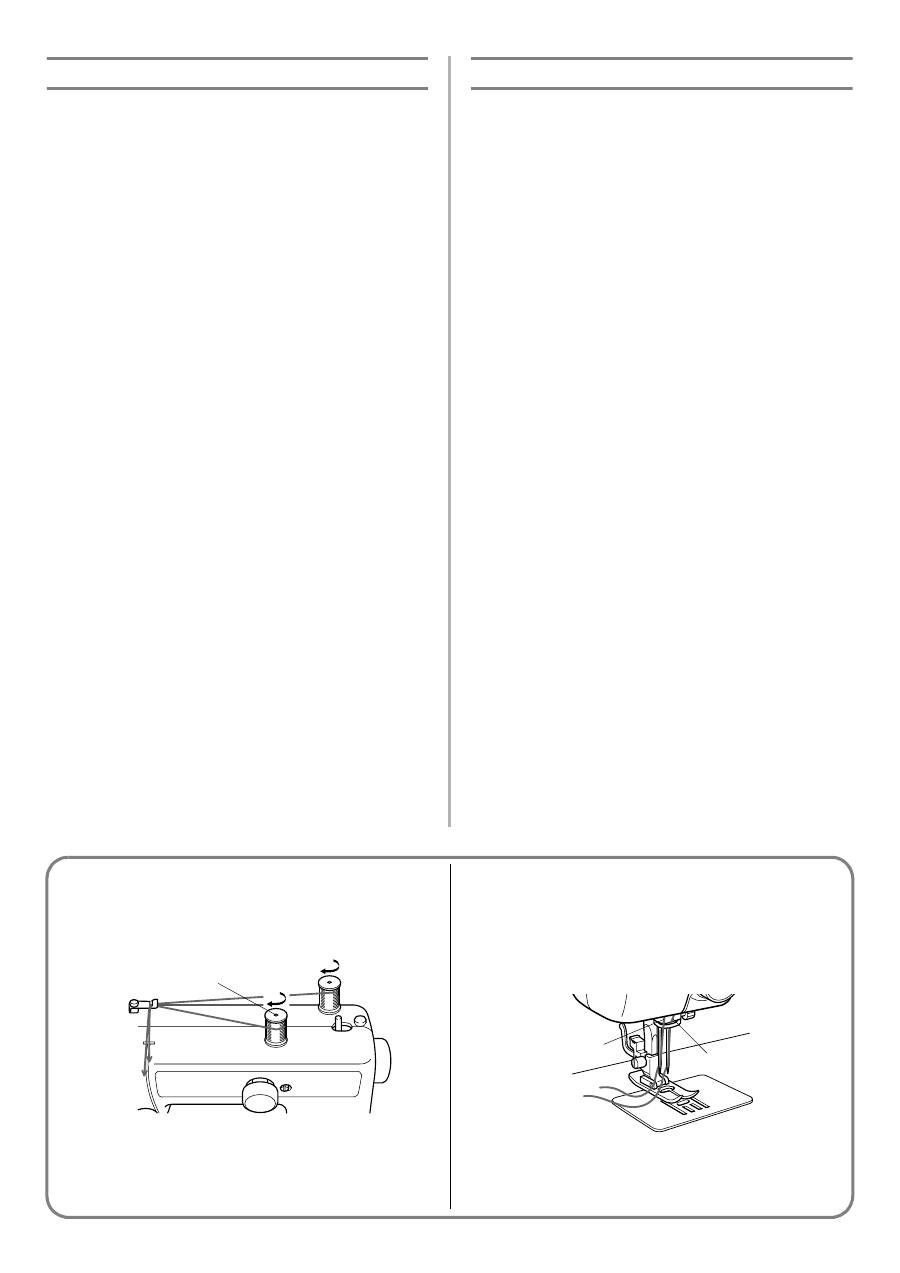
18
1
3
2
Twin-Needle Sewing
Your sewing machine is designed for twin-needle sewing which
allows you to sew using two upper threads. You can use the same
color or two different colors of thread for decorative stitches.
Twin-needle sewing works well with these stitches: the Straight
Stitch (6-10)-and the Zigzag Stitch (2). Be sure that the two upper
threads used for threading the twin needle have the same weight.
If the threads do not have the same weight, the stitching may not
be consistent.
INSERTING THE TWIN NEEDLE
Insert the twin needle in the same way that a single needle is
inserted. (Refer to page 6.) The flat side of the needle should face
toward the back and the rounded side should face toward you.
SETTING THE EXTRA SPOOL PIN
Place the extra vertical spool pin in the hole found on the top
right-hand side of the machine. Place the second spool of thread
on this pin as shown in
fig. A
.
a
Extra spool pin
TWIN NEEDLE THREADING
Each needle should be threaded separately.
1. Threading the Right Needle
Follow the same instructions for single needle threading. See
page 15 for more details.
2. Threading the Left Needle
Thread the left needle in the same way as the right needle was
threaded, but do not pass the thread through the thread guide
above the needle before passing it through the eye of the left
needle as shown in
fig. B
.
b
Right needle thread passes through this guide.
c
Left needle thread passes in front of this guide.
Couture avec l’aiguille jumelée
Cette machine à coudre a été conçue pour pouvoir être utilisée
avec une aiguille jumelée, permettant ainsi de coudre avec deux
fils supérieurs. Il est possible d’utiliser la même couleur de fil ou
deux fils de couleurs différentes pour obtenir des points fantaisie
décoratifs. Les coutures à l’aide d’une aiguille jumelée donnent
d’excellents résultats avec les points suivants: le point droit (6-10)
et le point zigzag (2). S’assurer que les deux fils supérieurs utilisés
avec l’aiguille jumelée sont de la même épaisseur. Dans le cas
contraire, les points ne seronts pas nécessairement égaux.
MISE EN PLACE DE L’AIGUILLE JUMELEE
Introduire l’aiguille comme pour une aiguille normale (veuillez
vous référer à la page 6). Le côté plat de l’aiguille doit être tourné
vers l’arrière et l’arrondi doit se situer face à l’utilisateur.
MISE EN PLACE DU PORTE-BOBINE SUPPLEMENTAIRE
Placer le porte-bobine vertical supplémentaire dans l’orifice qui
se trouve au-dessus de la machine, du côté droit. Placer la
seconde bobine de fil sur cet axe comme le montre la
fig. A
.
a
Porte-bobine supplémentaire
ENFILAGE DE L’AIGUILLE JUMELEE
Chaque aiguille doit être enfilée séparément.
1. Enfilage de l’aiguille de droite
Suivre les mêmes instructions que pour l’enfilage d’une
aiguille normale. Voir page 15 pour de plus amples détails.
2. Enfilage de l’aiguille de gauche
Enfiler l’aiguille de gauche de la même manière que l’aiguille
de droite mais sans passer le fil par le guide-fils situé au-
dessus de l’aiguille. Passer directement le fil par le chas de
l’aiguille gauche, comme le montre la
fig. B
.
b
Le fil de l’aiguille droite passe par le guide-fils.
c
Le fil de l’aiguille gauche passe devant le guide-fils.
A
B

19
Costura con aguja doble
Su máquina de coser ha sido concebida para poder utilizar una aguja
doble y permitir la costura con dos hilos superiores. Puede usar el
mismo color de hilo o dos hilos de colores distintos para puntadas
decorativas. Las costuras con aguja doble dan muy buenos resultados
con las siguientes puntadas: la puntada recta (6-10) y la puntada
zigzag (2). Sin embargo, debe asegurarse de que los dos hilos usados
para enhebrar la aguja doble sean del mismo peso. Si los hilos son de
pesos distintos, las puntadas resultarán erróneas.
PARA INTRODUCIR LA AGUJA DOBLE.
Introdúzcala de la misma manera que una aguja simple (véase página
6). La parte plana de la aguja debe estar cara hacia atrás mientras
que la parte redonda está cara a usted.
PARA INSTALAR EL PORTA CARRETES EXTRA
Coloque el porta carretes vertical extra en el orificio previsto arriba
de la máquina, en la parte derecha. Coloque el segundo carrete de
hilo en el eje tal como indica la
fig. A
.
a
Porta carretes extra
ENHEBRADO DE LA AGUJA DOBLE
Cada una de las agujas debe ser enhebrada por separado.
1. Enhebrado de la aguja derecha
Siga las mismas instrucciones que para el enhebrado de una sola
aguja (véase página 15 para mayores detalles al respecto).
2. Enhebrado de la aguja izquierda
Enhebre la aguja izquierda de la misma manera que la aguja
derecha. Sin embargo, no hay que pasar el hilo por la guía que se
sitúa arriba de la aguja. Conviene pasarlo directamente por el ojo
de la aguja izquierda, tal como ilustrado arriba en la fig. B.
b
El hilo de la aguja derecha pasa por la guía.
c
El hilo de la aguja izquierda pasa delante de la guía.
Шитье двойной иглой
Швейная машина поддерживает шитье двойной иглой, то есть
можно шить с использованием двух верхних нитей. Можно
использовать нити одинаковых или двух разных цветов для
выполнения декоративных строчек. Шитьё двойной иглой
подходит для следующих строчек: прямая строчка (6*10) и
строчка «Зигзаг» (2). Обе верхние нити, используемые для
заправки двойной иглы, должны иметь одинаковый номер
(толщину). В противном случае трудно обеспечить требуемое
качество строчки.
УСТАНОВКА ДВОЙНОЙ ИГЛЫ
Установите двойную иглу тем же способом, которым
устанавливалась одиночная игла. (Подробную информацию
см. на стр.6.) Плоская сторона иглы должна быть повернута к
задней стороне машины, а полукруглая – к Вам.
УСТАНОВКА ДОПОЛНИТЕЛЬНОГО СТЕРЖНЯ
КАТУШКИ
Вставьте дополнительный стержень для катушки в
предназначенное для него отверстие, расположенное сверху в
правой части машины. На этот стержень наденьте вторую
катушку с нитью, как показано на
рис. A
.
a
Дополнительный стержень для установки катушки
ЗАПРАВКА ДВОЙНОЙ ИГЛЫ НИТЬЮ
Каждую нить следует заправлять в иглу по отдельности.
1. Заправка правой нити в иглу
Следуйте тем же инструкциям, что и для заправки нити в
одиночную иглу. Подробную информацию см. на стр. 15.
2. Заправка левой нити в иглу
Заправляйте левую нить в иглу так же, как и правую, но
при этом не надо пропускать нить через нитенаправитель
над иглой перед тем как продеть её в ушко левой иглы
(см
рис. B
).
a
Нить правой иглы пропущена через нитенаправи*
тель.
b
Нить левой иглы проходит перед нитенаправителем.
1
3
2
A
B

20
Thread Tension
Thread tension will affect the quality of your stitches. It may need
to be adjusted when you change fabric or thread type.
NOTE:
It is recommended that a test sample be made on a fabric scrap
before sewing on your project.
The basic thread tension setting is “5”.
Possible problems and how to correct them.
A
Upper tension is too tight.
Locks appear on the surface of the fabric.
A-1 Upper tension control dial
Decrease the tension by turning the dial to a lower number.
B
Upper tension is too loose.
Locks appear on the reverse side of the fabric.
B-1 Upper tension control dial
Increase the tension by turning the dial to a higher number.
a
Reverse
b
Surface
Tension des fils
La tension des fils va affecter directement la qualité des points et
il se peut qu’elle doive être réglée lors du changement de tissu
ou de fil.
REMARQUE:
Il est conseillé d’effectuer une couture d’essai sur une chute de
tissu avant de coudre sur l’ouvrage proprement dit.
La tension du fil est réglée par défaut sur “5”.
Problèmes possibles et leurs remèdes.
A
La tension supérieure est excessive.
Formation de boucles sur l’endroit du tissu.
A-1 Sélecteur de tension supérieure
Diminuer la tension en mettant le sélecteur sur un chiffre
inférieur.
B
La tension supérieure est insuffisante.
Formation de boucles sur l’envers du tissu.
B-1 Sélecteur de tension supérieure
Augmenter la tension en plaçant le sélecteur sur un chiffre
plus élevé.
a
Envers
b
Endroit
Tensión de los hilos
La tensión de los hilos es muy importante para la calidad de las
puntadas y puede requerir cierto ajuste al cambiar de tejido o de hilo.
NOTA:
Le recomendamos hacer una prueba en un pedazo de tela antes de
empezar a coser con el tejido de trabajo.
El parámetro inicial de tensión del hilo es “5”.
Problemas posibles y sus soluciones
A
El hilo superior esta demasiado tirante
Aparecen bagas en la superficie del tejido.
A-1 Disco de control de la tensión superior
Disminuya la tensión al poner el disco en un número inferior.
B
La tensión superior es insuficiente
Aparecen bagas en el revés del tejido.
B-1 Disco de control de la tensión superior
Aumente la tensión al poner el disco en un número superior.
a
Revés
b
Derecho
Натяжение нитей
Натяжение нитей оказывает воздействие на качество строчки.
При смене ткани или нити может потребоваться настройка
натяжения нитей.
ПРИМЕЧАНИЕ:
Рекомендуется до начала работы над изделием осуществлять
пробную строчку на лоскуте аналогичной ткани.
Базовая позиция натяжителя нити – «5».
Возможные затруднения и методы их разрешения.
A
Слишком сильное натяжение верхней нити
На поверхности ткани появляются петли.
AE1 Дисковый регулятор натяжения верхней нити
Уменьшите натяжение, повернув регулятор к меньшей
цифре.
B
Слишком слабое натяжение верхней нити
На обратной стороне ткани появляются петли.
BE1 Дисковый регулятор натяжения верхней нити
Увеличьте натяжение, повернув регулятор к большей
цифре.
a
Изнаночная сторона ткани
b
Лицевая сторона ткани
B-1
B
2
1
2
1
0
1
2
3
4
5
6
7
8
9
A-1
A
2
1
2
1
0
1
2
3
4
5
6
7
8
9
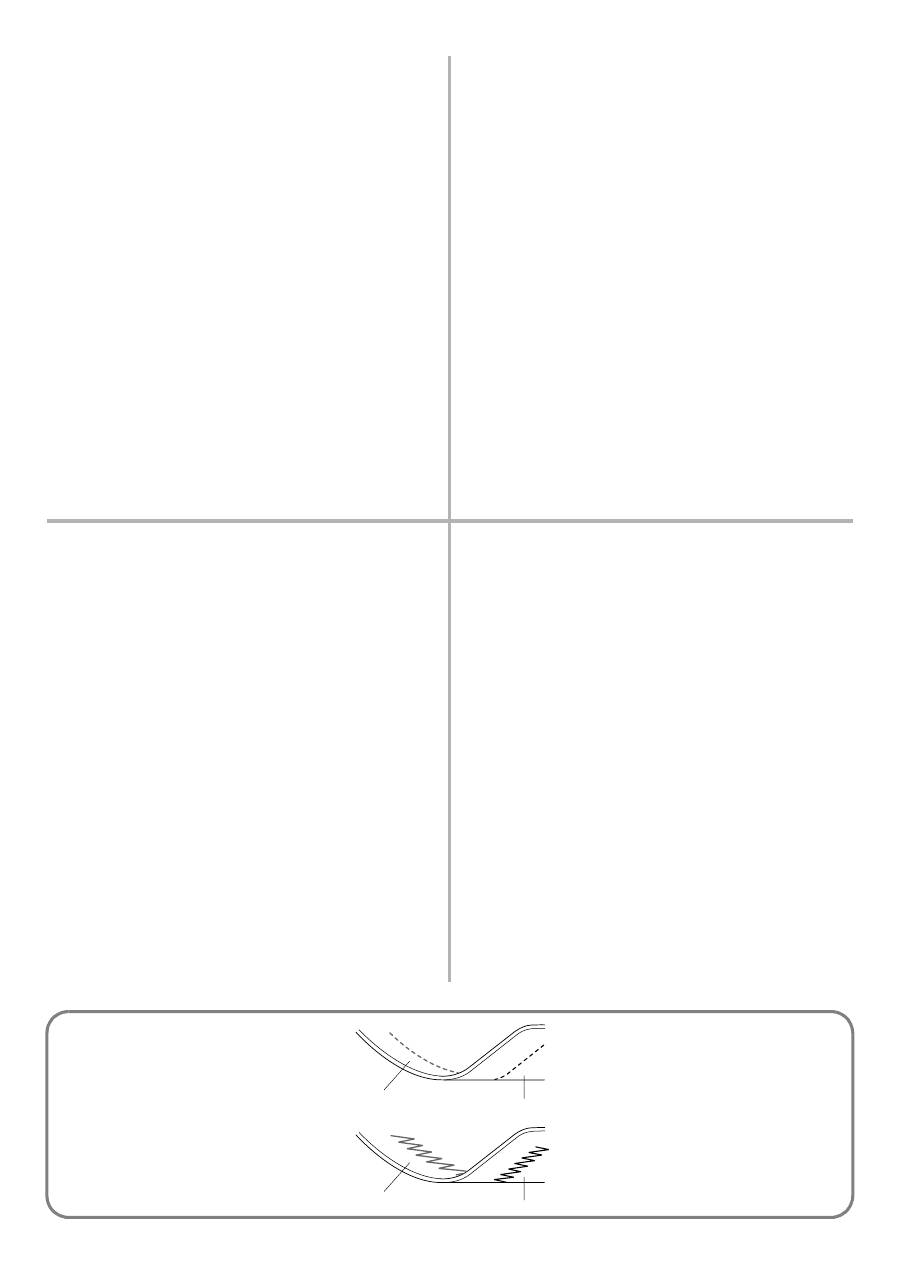
21
2
1
2
1
NOTE:
The bobbin thread tension has already been adjusted at the
factory for general use. For most sewing applications, no
adjustment is needed.
When sewing with thin thread on thin fabrics, the thread tension
may not be adjusted adequately with the upper tension control
dial. Therefore, the thread tension must be adjusted according to
the procedure described below.
C
Bobbin tension is too loose.
Locks appear on the surface of the fabric.
Decrease the thread tension by turning the dial to a lower
number. If the result is still not satisfactory, then adjust the
bobbin thread tension as explained in
C-1
C-1 Bobbin
Increase the tension in the bobbin by turning the screw with
a small screwdriver in a clockwise direction. However, do
not turn the screw more than one full turn.
Remember to return the screw to its original setting before
starting your next project.
D
Correct tension
Correct tension is important since too much or too little tension
will weaken your seams or cause puckers in your fabric.
a
Reverse
b
Surface
REMARQUE:
La tension du fil inférieur a déjà été réglée d’usine pour une
utilisation normale. Pour la plupart des applications de couture, il
ne sera dès lors pas nécessaire de la régler.
Cependant, lors de la couture avec du fil fin sur des tissus légers,
les réglages de tension du fil effectués à l’aide du disque de
contrôle de la tension supérieure sont insuffisants. Dans ce cas,
régler la tension du fil selon la méthode décrite ci-dessous.
C
La tension inférieure est insuffisante.
Formation de boucles à l’endroit du tissu.
Diminuer la tension du fil en mettant le disque sur un chiffre
inférieur. Si le résultat n’est pas encore concluant, régler la
tension du fil de la canette comme expliqué au point
C-1
.
C-1 Canette
A l’aide d’un petit tournevis, augmenter la tension de la
canette en tournant la vis dans le sens des aiguilles d’une
montre, sans effectuer plus d’un tour complet.
Ne pas oublier de remettre la vis à sa position originale avant
d’entamer un nouvel ouvrage.
D
Tension correcte
Il est essentiel de procéder à un réglage correct de la tension du
fil pour avoir des coutures solides sans que le tissu ne fronce.
1
Envers
2
Endroit
NOTA:
La tensión del hilo inferior ya se ha ajustado en fábrica para los usos
comunes. Por lo tanto, para la mayoría de las costuras, no se
requerirá ningún ajuste adicional.
Sin embargo, al coser con hilo delgado en tejidos finos, no se puede
ajustar correctamente la tensión del hilo mediante el disco de control
de la tensión superior. En esos casos, la tensión del hilo ha de ser
ajustada de acuerdo con el proceso descrito a continuación.
C
La tensión del hilo inferior es insuficiente.
Aparecen bagas en la superficie del tejido.
Disminuya la tensión del hilo al girar el disco hacia un número
inferior. Si el resultado no le conviene aún, ajuste la tensión del
hilo de la canilla tal como se indica en
C-1
.
C-1 Canilla
Aumente la tensión en la canilla girando el tornillo, con un pequeño
destornillador, en el sentido de las manecillas de un reloj. Sin
embargo, no conviene dar más de una vuelta completa al tornillo.
No olvide volver a colocar el tornillo en su posición original
antes de empezar otro tipo de costura.
D
Tensión correcta
Es importante tener una tensión correcta dado que una tensión
insuficiente o demasiada tirante va a debilitar sus costuras o
fruncir el tejido.
a
Revés
b
Derecho
ПРИМЕЧАНИЕ:
Натяжение нижней нити уже настроено на заводе*
изготовителе для общих задач шитья. Для большинства
швейных применений настройка натяжения не требуется.
При шитье тонкой нитью тонких тканей натяжение нитей не
может быть адекватно настроено с помощью дискового
регулятора верхней нити. В этом случае натяжение нитей
необходимо настроить в соответствии с описанной ниже
процедурой
C
Слишком слабое натяжение нижней нити.
На поверхности ткани появляются петли.
Уменьшите натяжение верхней нити, повернув регулятор к
меньшей цифре. Если не удается добиться
удовлетворительного результата, то настройте натяжение
нити шпульки (нижней нити) в соответствии с пунктом
CE1
.
D
Шпулька
Увеличьте натяжение в шпульке, повернув маленькой
отверткой регулировочный винт в направлении по
часовой стрелке. Однако не проворачивайте винт более
чем на один полный оборот.
Перед началом своего следующего швейного проекта не
забудьте вернуть этот винт в первоначальное положение.
E
Правильное натяжение
Правильное натяжение нитей является очень важным
фактором, поскольку слишком сильное или слишком
слабое натяжение приводит к ослаблению швов или к
образованию сборок на ткани.
a
Изнаночная сторона ткани
b
Лицевая сторона ткани
D

22
RELATIVE CHART OF SEWING FABRICS, NEEDLES AND THREADS COMBINATIONS
NOTE:
1.Select the correct needle and thread size from the above chart.
2.Use the same size thread for the upper (spool) and lower (bobbin) threads.
SEWING FABRICS
NEEDLE SIZES
THREAD SIZES
VERY THIN
Fine tricot, Fine lace, Thin linen, Silk,
Organza, Chiffon
#65/9
Cotton: 80
Synthetic/ Polyester Long Fiber
Fine Mercerized Cotton
LIGHTWEIGHT
Voile, Taffeta, Synthetics, Silk, Batiste
#75/11
Cotton: 60-80
Silk: “A”
Synthetic/ Polyester Long Fiber
Mercerized 50
MEDIUM WEIGHT
Cotton, Gingham, Poplin, Percale, Pique,
Satin, Velvet, Lightweight wool,
Fine corduroy, Suitings, Linen, Muslin
#90/14
(Supplied with your
machine.)
Cotton: 50-60
Silk: “A”
Synthetic/ Polyester Long Fiber
Mercerized 50-60
HEAVYWEIGHT
Denim, Gabardine, Tweed, Corduroy,
Canvas, Duck
#100/16
Cotton: 40-50
Mercerized Heavy Duty
Polyester Long Fiber
KNITS
Single knit, Double knit, Jersey, Tricot
#90/14
(Ball point)
Cotton Wrapped Polyester
Polyester Long Fiber
TABLEAU DES COMBINAISONS TISSU/AIGUILLE/FIL
REMARQUE:
1.Sélectionner selon le tableau ci-dessus la taille de fil et le calibre d’aiguille adéquats.
2.Utiliser la même taille de fil pour les fils inférieur (canette) et supérieur (bobine).
TISSUS
CALIBRES
D’AIGUILLES
TAILLES DE FILS
TRES FINS
Tricot léger, passementerie fine, lin délicat,
soie, tulle, crêpe
#65/9
Coton: 80
Synthétiques/ Polyester longues
fibres Coton mercerisé fin
LEGERS
Voile, taffetas, synthétiques, soie, batiste
#75/11
Coton: 60-80
Soie: “A”
Synthétiques/ Polyester longues
fibres Mercerisé calibre 50
MOYENS
Coton, vichy, popeline, percale, piqué, satin,
velours, laine légère, velours côtelé fin, tissus
de confection, lin, mousseline
#90/14
(Livrés avec la
machine)
Coton: 50-60
Soie: “A”
Synthétiques/ Polyester longues
fibres Mercerisé calibre 50-60
LOURDS
Jeans, gabardine, tweed, velours côtelé,
canevas, coutil
#100/16
Coton : 40-50
Mercérisé très résistant
Polyester longues fibres
TRICOTS
Tricot simple, double, jersey, tricot en général
#90/14
(Pointe arrondie)
Polyester guipé coton
Polyester longues fibres

23
TABLA DE RELACIÓN ENTRE TEJIDOS, HILOS Y AGUJAS
NOTA:
1.Elija la aguja y el hilo correctos en la tabla arriba.
2.Utilice el mismo tamaño de hilo para los hilos superior (carrete) e inferior (canilla).
TEJIDOS
TAMAÑO DE
AGUJA
TAMAÑO DE HILO
MUY FINO
Punto fino, Encaje fino, Lino fino, Seda, Tul,
Gasa
n° 65/9
Algodón: 80
Sintético/ Fibra larga de poliéster
Algodón fino.
LIGERO
Velo, Tafetán, Sintéticos, Seda, Batista
n° 75/11
Algodón: 60-80
Seda: “A”
Sintético/ Fibra larga de poliéster
Mercería 50.
MEDIO
Algodón, Vichy, Popelin, Percal, Piqué, Satén,
Terciopelo, Lana ligera, Pana fina, Forros, Lino,
Muselina
n° 90/14
(Provista con la
máquina)
Algodón: 50-60
Seda “A”
Sintético/ Fibra larga de poliéster
Mercería 50-60
PESADO
Tejano, Gabardina, Tweed, Pana, Toldo, Dril
n° 100/16
Algodón: 40-50
Hilo Mercería gruesa.
Fibra larga de poliéster
PRENDAS DE
PUNTO
Prendas de punto simple, Prendas de punto
doble, Jersey, Tricot
n° 90/14
(Punta de bola)
Poliéster envuelto de algodón
Fibra larga de poliéster
ТАБЛИЦА РЕКОМЕНДУЕМЫХ КОМБИНАЦИЙ ТКАНЕЙ, ИГЛ И НИТЕЙ
ПРИМЕЧАНИЕ:
1.Подбирайте соответствующие друг другу иглу и нить исходя из приведённой выше таблицы.
2.Верхняя нить (нить катушки) и нижняя нить (нить шпульки) должны быть одинакового размера.
ТКАНИ
РАЗМЕР ИГЛЫ
ПАРАМЕТРЫ НИТИ
ОЧЕНЬ ТОНКИЕ
Тонкий трикотаж, кружево, тонкий лён,
шёлк, органза, шифон
#65/9
Хлопок: 80
Синтетика/длинноволоконный
полиэстер
Тонкий мерсеризованный
хлопок
ЛЁГКИЕ
Вуаль, тафта, синтетика, шёлк, батист
#75/11
Хлопок: 60*80Шелк: «A»
Синтетика/длинноволоконный
полиэстер
Мерсеризованная 50
СРЕДНИЕ
Хлопок, миткаль, поплин, перкаль, пике,
атлас, вельвет, тонкая шерсть,
тонкий вельвет, костюмная ткань, лён,
муслин
#90/14
(Входит в комплект
Вашей машины.)
Хлопок: 50*60
Шелк: «A»
Синтетика/длинноволоконный
полиэстер
Мерсеризованная 50*60
ТЯЖЕЛЫЕ
Джинсовая ткань, габардин, твид, вельвет,
брезент, парусина
#100/16
Хлопок: 40*50
Мерсеризованная, высокой
прочности
Длинноволоконный полиэстер
ТРИКОТАЖ
Одинарный, двойной, джерси, трико
#90/14
(Закруглённое
остриё)
Хлопок, армированный
полиэстером
Длинноволоконный полиэстер

24
Straight Stitching
The Straight Stitch (6-10 or 11) is used for top stitching and
sewing lightweight fabrics.
Starting Sewing (fig. A)
1. Set the pattern selection dial to the appropriate Straight Stitch
(6-10 or 11) with the desired length.
2. Raise the needle to its highest position and lift the presser foot lifter.
3. Pull up the bobbin thread by turning the balance wheel
toward you (counterclockwise) and place both the upper and
lower threads toward the back behind the presser foot.
4. Place the fabric under the presser foot and position the needle
1 cm (3/8") from the edge of the fabric.
5. Lower the presser foot.
6. To backtack, press the reverse sewing lever down as far as
possible and lightly touch the foot controller. Sew 5 to 10
stitches in the reverse direction.
7. Release the reverse sewing lever and start sewing in the
forward direction by applying pressure to the foot controller.
NOTE:
The backtack or reverse sewing is used for locking the end of
seams and reinforcing stitches.
Changing Sewing Direction (fig. B)
1. Stop the machine at the point where you wish to change directions with the
needle still in the fabric. If the needle ends in the up position, turn the balance
wheel toward you (counterclockwise) until the needle enters the fabric.
2. Raise the presser foot and turn the fabric to line up its new
direction using the needle as a pivot point.
3. Lower the presser foot and start sewing in the new direction.
NOTE:
For twin needle sewing, raise the needle when changing the
sewing direction.
Finishing Sewing (fig. C)
Reverse stitching is used to lock the threads at the end of the
seam or wherever reinforcement is needed.
1. Stitch to the end of the seam and stop.
2. Press the reverse sewing lever down and lightly touch the foot
controller to stitch backwards for 1 cm (3/8") from the end of
the fabric over the top of the existing stitch.
Removing the Fabric From the Machine (fig. D)
1. Stop the machine.
2. Turn the balance wheel toward you (counterclockwise) to bring
the needle and thread take-up lever to their highest position.
3. Lift the presser foot and pull the fabric out gently to the left side.
4. Cut both threads using the thread cutter located on the back of
the presser foot bar.
a
Thread cutter
5. To prepare the machine for the next seam, pull about 10 cm (4") of
both threads and place them toward the back of the machine. The
upper thread should pass between the toes of the presser foot.
Pattern
6-10
(Center needle position)
11
(Left needle position)
Point droit
Le point droit (modèle 6-10 ou 11) sert pour la “haute couture” et
pour coudre sur des tissus légers.
Pour commencer à coudre (fig. A)
1. Régler le sélecteur de modèle sur le point droit approprié (6-
10 ou 11), avec la longueur souhaitée.
2. Remonter complètement l’aiguille et relever le levier du pied-de-biche.
3. Remonter le fil inférieur en tournant le volant vers soi (dans le
sens opposé aux aiguilles d’une montre) et tirer les deux fils,
inférieur et supérieur, vers l’arrière du pied-de-biche.
4. Placer le tissu sous le pied-de-biche et mettre l’aiguille à 1 cm
du bord du tissu.
5. Abaisser le pied-de-biche.
6. Pour arrêter la couture, abaisser complètement le levier de
couture en marche arrière et appuyer légèrement sur la
pédale. Faire 5 à 10 points en marche arrière.
7. Relâcher le bouton de couture en marche arrière et
commencer à coudre en avant en appuyant sur la pédale.
REMARQUE :
La couture en marche arrière sert à terminer les coutures et à
consolider les points.
Pour modifier le sens de la couture (fig. B)
1. Arrêter la machine à l’endroit souhaité pour le changement de
direction, en laissant l’aiguille piquée dans le tissu. Si l’aiguille est en
position relevée, tourner le volant vers soi (dans le sens opposé aux
aiguilles d’une montre) jusqu’à ce que l’aiguille pénètre dans le tissu.
2. Relever le pied-de-biche et faire pivoter le tissu autour de l’axe
formé par l’aiguille, pour l’orienter dans la nouvelle direction.
3. Abaisser le pied-de-biche et commencer à coudre dans le nouveau sens.
REMARQUE:
Pour la couture avec une aiguille jumelée, relever l’aiguille pour
changer de direction de couture.
Pour terminer la couture (fig. C)
Utiliser la couture en marche arrière pour faire un noeud à la fin
d’une couture ou consolider des points.
1. Piquer jusqu’au bout de la couture puis arrêter la machine.
2. Abaisser le levier de couture en marche arrière et appuyer
légèrement sur la pédale pour coudre sur 1 cm en arrière à
partir du bord du tissu et recouvrir les points existants.
Pour retirer le tissu de la machine (fig. D)
1. Arrêter la machine.
2. Tourner le volant vers soi (dans le sens contraire des aiguilles d’une
montre) pour remonter complètement l’aiguille et le levier releveur de fil.
3. Relever le pied-de-biche et dégager doucement le tissu vers la gauche.
4. Couper les deux fils à l’aide du coupe-fils situé derrière la
barre du pied-de-biche.
a
Coupe-fils
5. Afin de préparer la machine pour la couture suivante, tirer environ
10 cm des deux fils et les placer vers l’arrière de la machine. Le fil
supérieur doit passer entre les branches du pied-de-biche.
Modèle
6-10
(Aiguille au centre)
11
(Aiguille à gauche)
Puntada recta
La puntada recta (No 6-10 ó 11) se usa para costuras de remate y
para coser materiales ligeros.
Número de puntada
6-10
(Aguja en el centro)
11
(Aguja a la izquierda)
Прямая строчка
Прямая строчка (6*10 или 11) используется для отделки
деталей одежды и шитья лёгких тканей.
Положение ручки выбора вида строчки
6*10 (Центральное
положение
иглы)
11
(Левое положение иглы)

25
1
Начало шитья (рис. A)
1. Установите ручку выбора строчки в положение,
соответствующее прямой строчке (6*10 или 11) с
требуемой длиной стежка.
2. Поднимите иглу в крайнее верхнее положение, а затем
поднимите рычаг прижимной лапки.
3. Поворотом маховика к себе (против часовой стрелки)
вытяните нижнюю нить и положите верхнюю и нижнюю
нити за прижимной лапкой в направлении задней части
машины.
4. Разместите ткань под прижимной лапкой таким образом,
чтобы игла расположилась в 1 см от края ткани.
5. Опустите прижимную лапку.
6. Для закрепления строчки нажмите до упора клавишу
шитья в обратном направлении и слегка нажмите на
педаль. Прошейте 5–10 стежков в обратном направлении.
7. Отпустите клавишу шитья в обратном направлении и
начните шить в прямом направлении, нажав на педаль.
ПРИМЕЧАНИЕ:
Закрепление строчки (шитьё в обратном направлении) используется
для фиксации концов шва и для усиления стежков.
Изменение направления шитья (рис. В)
1. Остановите машину в точке, в которой Вы желаете
изменить направление шитья, при этом игла должна
находиться в ткани. Если игла находится над тканью,
поворачивайте маховик на себя (против часовой стрелки)
до тех пор, пока игла не войдёт в ткань.
2. Поднимите прижимную лапку и поверните ткань в
положение для нового направления шитья, используя иглу
как ось поворота.
3. Опустите прижимную лапку и начинайте шить в новом
направлении.
ПРИМЕЧАНИЕ:
При шитье двойной иглой поднимайте иглу при изменении
направления шитья.
Завершение шитья (рис. С)
Для закрепления нитки в конце шва, а также если требуется
усиление шва, используется шитьё в обратном направлении.
1. Прошейте шов до конца и остановите машину.
2. Нажмите до упора вниз клавишу шитья в обратном
направлении и слегка нажмите на педаль, чтобы сделать
обратный шов на расстояние порядка 1 см от края изделия
поверх существующих стежков.
Удаление изделия с машины (рис. D)
1. Остановите машину.
2. Поворачивайте маховик на себя (против часовой стрелки)
для приведения иглы и рычага нитепритягивателя в
крайнее верхнее положение.
3. Поднимите прижимную лапку и аккуратно вытяните ткань
в левую сторону.
4. Оборвите обе нити, используя приспособление для
обрезки нити, расположенное на задней стороне стержня
прижимной лапки.
a
Приспособление для обрезки нити
5. Для подготовки машины к выполнению следующего шва
вытяните приблизительно 10 см нитей и проведите их в
прорезь прижимной лапки в направлении задней стороны
машины. Верхнюю нить следует пропустить в прорезь в
прижимной лапке.
Para empezar a coser (fig. A)
1. Colocar el selector de puntadas en la puntada derecha adecuada
(6-10 ó 11), con el largo deseado.
2. Levante la aguja a su posición más alta y suba la palanca del prensatelas.
3. Saque el hilo inferior girando la ruedecilla hacia usted (en el
sentido contrario al de las manecillas de un reloj) y tire los hilos
superior e inferior hacia la parte atrás del prensatelas.
4. Coloque el tejido debajo del prensatelas y posicione la aguja a 1
cm (3/8") de la orilla del tejido.
5. Baje el prensatelas.
6. Para retroceder, baje completamente la palanca de retroceso y
presione ligeramente el pedal para coser 5 ó 10 puntadas hacia atrás.
7. Suelte la palanca de retroceso y vuelva a coser hacia adelante,
presionando el pedal.
NOTA:
El retroceso o costura hacia atrás sirve para finalizar una costura y
reforzar las puntadas.
Cambio de sentido de costura (fig. B)
1. Pare la máquina en donde quiera cambiar de dirección, con la aguja
picada en el tejido. Si la aguja termina la puntada en la posición
levantada, gire la ruedecilla hacia usted (en el sentido contrario al de
las manecillas de un reloj) hasta que la aguja vuelva a penetrar el tejido.
2. Levante el prensatelas y gire el tejido en la dirección que debe
seguir, usando la aguja como placa giratoria.
3. Baje el prensatelas y empiece a coser en la nueva dirección tal como ilustrado.
NOTA:
Para las costuras con una aguja doble, debe levantarse la aguja para
cambiar de sentido de costura.
Para terminar las costuras (fig. C)
La puntada de retroceso se usa para trabar los hilos al final de una
costura o en cualquier punto donde sea necesario reforzarla.
1. Cosa hasta el final de la costura y pare.
2. Baje la palanca de retroceso y presione suavemente el pedal para
coser hacia atrás sobre 1 cm (3/8") a partir de la orilla del tejido,
cubriendo así las puntadas existentes.
Para retirar el tejido de la máquina (fig. D)
1. Pare la máquina.
2. Gire la ruedecilla hacia usted (en el sentido contrario al de las
manecillas de un reloj) para levantar la aguja y la palanca
tirahilos a su posición más alta.
3. Levante el prensatelas y saque suavemente el tejido por la izquierda.
4. Corte ambos hilos usando el cortador que se encuentra detrás de
la barra del prensatelas.
a
Cortador de hilos
5. Con el fin de dejar la máquina preparada para la próxima costura, tire
unos 10 cm (4") de ambos hilos y páselos hacia la parte atrás de la
máquina. El hilo superior debe pasar entre los salientes del prensatelas.
A
B
C
D
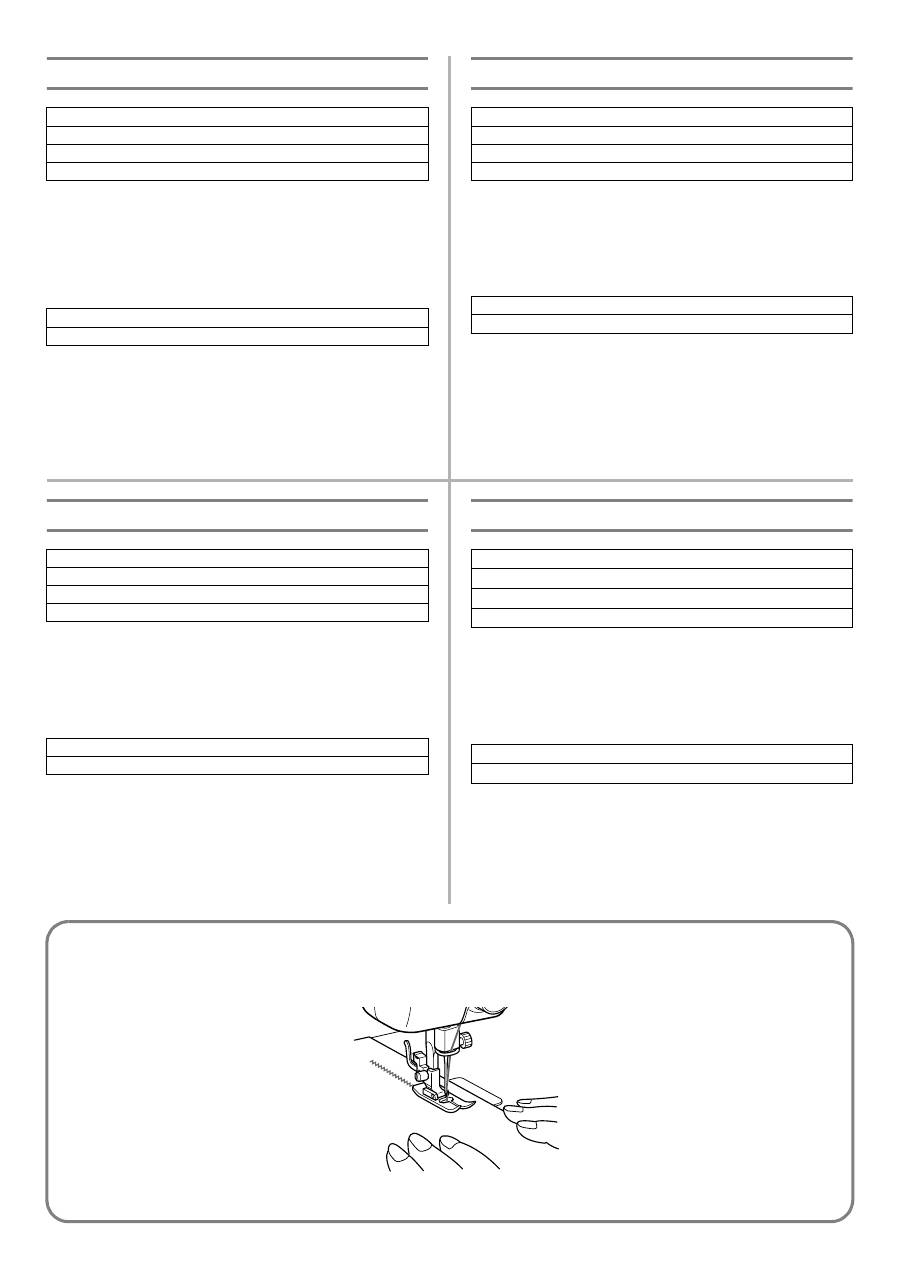
26
Zigzag Stitching
ZIGZAG STITCH
Set the pattern selection dial to the appropriate Zigzag Stitch (2, 3
or 4) with the desired width.
It is recommended to sew using the Straight Stitch at the
beginning and end of the Zigzag Stitches.
ZIGZAG (SATIN) STITCH
The Satin Stitch can be used for making decorative stitches. Set
the pattern selection dial to the Zigzag (Satin) Stitch (5).
Pattern
2 (Zigzag
Stitch)
3 (Zigzag
Stitch)
4 (Zigzag
Stitch)
Pattern
5 (Zigzag
(Satin)
Stitch)
Points zigzag
POINT ZIGZAG
Régler le sélecteur de modèle de point sur le point zigzag
approprié (2,3 ou 4), avec la largeur souhaitée.
Il est recommandé de faire quelques points droits d’arrêt au début
et à la fin d’une couture en points zigzag.
POINT ZIGZAG (POINT DE BOURDON)
Le point de bourdon peut servir comme point fantaisie décoratif.
Régler le sélecteur de modèle de point sur le point zigzag (point
de bourdon) (5).
Modèle
2
(Point zigzag)
3
(Point zigzag)
4
(Point zigzag)
Modèle
5
(Point zigzag (point de bourdon)
Puntadas zigzag
PUNTADA ZIGZAG
Coloque el selector de puntadas en la posición de puntada zigzag
adecuada (2,3 ó 4), con el ancho deseado.
Se recomienda coser con puntada recta al principio y al final de una
costura de zigzag.
PUNTADA ZIGZAG (DE REALCE)
Las puntadas de realce pueden servir como puntadas decorativas.
Coloque el selector de puntadas en la puntada zigzag (de realce) (5).
Número de puntada
2
(Puntada zigzag)
3
(Puntada zigzag)
4
(Puntada zigzag)
Número de puntada
5
Costuras zigzag (de realce)
Шитьё строчкой «зигзаг»
СТРОЧКА «ЗИГЗАГ»
1. Установите ручку выбора строчки в положение,
соответствующее строчке «зигзаг» (2, 3 или 4) с требуемой
шириной строчки.
2. Рекомендуется в начале и в конце строчек «зигзаг»
использовать шитьё прямой строчкой.
СТРОЧКА «ЗИГЗАГ» (АТЛАСНАЯ)
Атласная строчка может использоваться для выполнения
декоративных строчек. Установите ручку выбора строчки в
положение «Зигзаг» (атласная) (5).
Положение ручки выбора вида строчки
2
(Строчка «зигзаг»)
3
(Строчка «зигзаг»)
4
(Строчка «зигзаг»)
Положение ручки выбора вида строчки
5
(Строчка «зигзаг» (атласная))
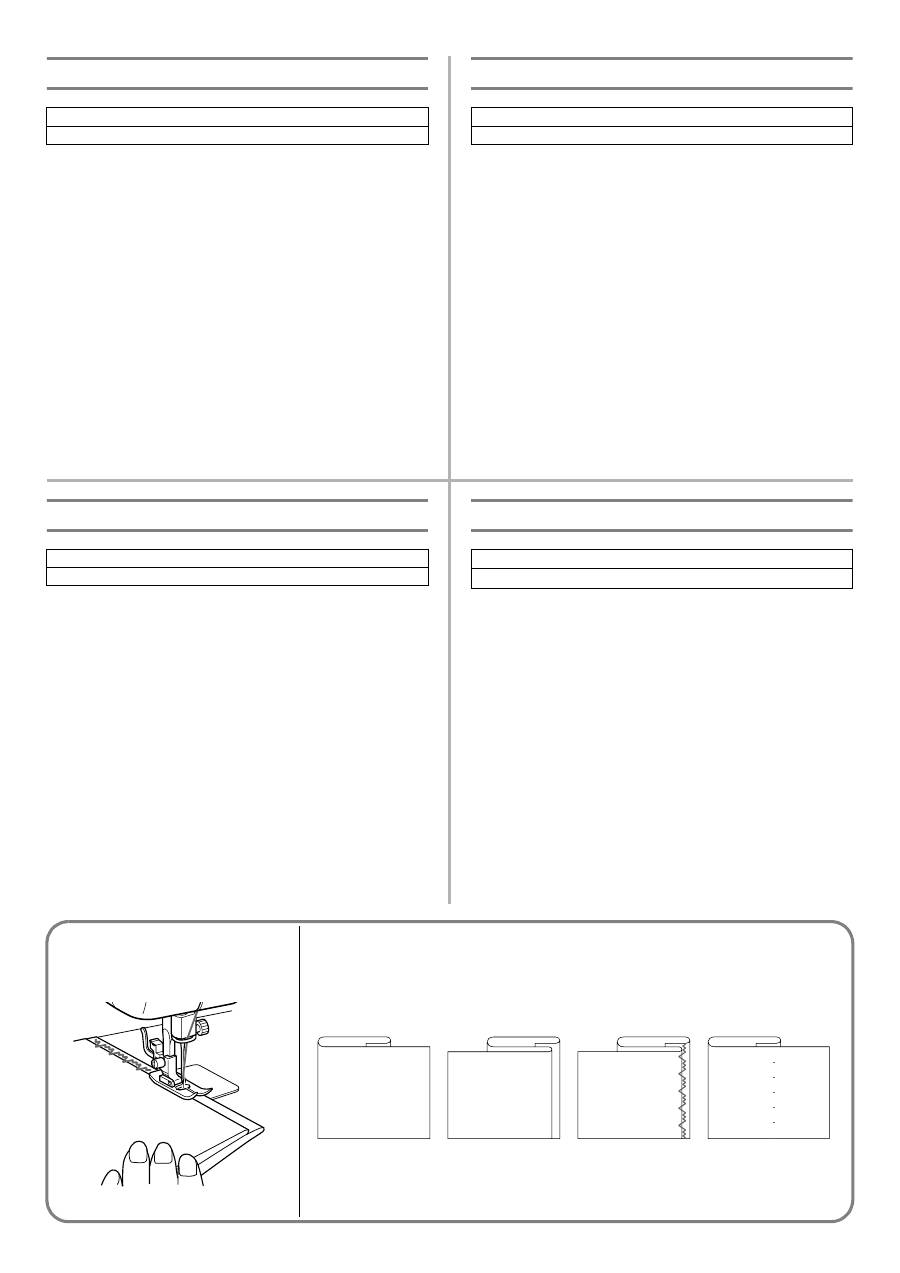
27
A
B
C
D
Blind Hem Stitching
The Stretch Blind Stitch is used to finish the edge of projects made
with stretch fabrics without the stitch showing.
1. Set the pattern selection dial to 12.
2. Both the threads should be the same color as the fabric.
3. Fold back the fabric to the desired location of the hem as
shown in
fig. A
. Then, fold the edge of the fabric as in
fig. B
.
Leave a 6 mm (1/4") overlap at the edge.
4. Sew on the fold as in
fig. C
.
5. When the fabric is unfolded you will have a Stretch Blind
Stitch hem as shown in
fig. D
.
Pattern
12
(Stretch Blind Stitch)
Point élastique invisible
Le point élastique invisible sert à terminer le bord d’ouvrages
réalisés sur des tissus élastiques (extensibles) sans que les points
n’apparaissent.
1. Mettre le sélecteur de modèle de point sur 12.
2. Les deux fils utilisés doivent être de la même couleur que le
tissu à coudre.
3. Plier le tissu à la taille souhaitée pour l’ourlet, (comme le
montre la
fig. A
) puis replier le bord en faisant chevaucher de
6 mm (voir
fig. B
.)
4. Coudre sur le repli (comme le montre la
fig.C
.).
5. Lorsque le tissu est déplié, on obtient un ourlet extensible
invisible, tel qu’indiqué dans la
fig.D
.
Modèle
12
(Point élastique invisible)
Puntadas invisibles
La puntada invisible elástica se usa para terminar la orilla de una
prenda realizada en un tejido elástico, sin que se vean las puntadas.
1. Ponga el selector de puntadas en 12.
2. Ambos hilos deben ser del mismo color que el tejido.
3. Doble el tejido según la orilla que desee hacer tal como ilustra la
fig. A
. Luego, déle la vuelta tal como indica la
fig. B
. Deje unos 6
mm (1/4") sin coser para esconderlos.
4. Cosa en el pliegue tal como muestra la
fig. C
.
5. Al desdoblar el tejido, tendrá un dobladillo con puntada invisible
elástica tal como lo muestra la
fig. D
.
Número de puntada
12
(Puntada invisible elástica)
Потайная строчкаEмережка
Эластичная потайная строчка используется для обработки
краёв изделий, выполненных из эластичной ткани, таким
образом, чтобы стежки были не заметны.
1. Установите ручку выбора строчки в положение «12».
2. Обе нити должны быть того же цвета, что и ткань.
3. Подверните изделие таким образом, чтобы кромка заняла
желаемое положение, как показано на
рис. A
. Затем
отогните край изделия, как показано на
рис. B
. Оставьте на
конце перекрытие порядка 6 мм.
4. Прошейте отвернутую кромку, как показано на
рис. C
.
5. После того как ткань будет развёрнута, вы получите
подрубленный эластичным потайным швом край, как
показано на
рис. D
.
Положение ручки выбора вида строчки
12
(Эластичная потайная строчка)
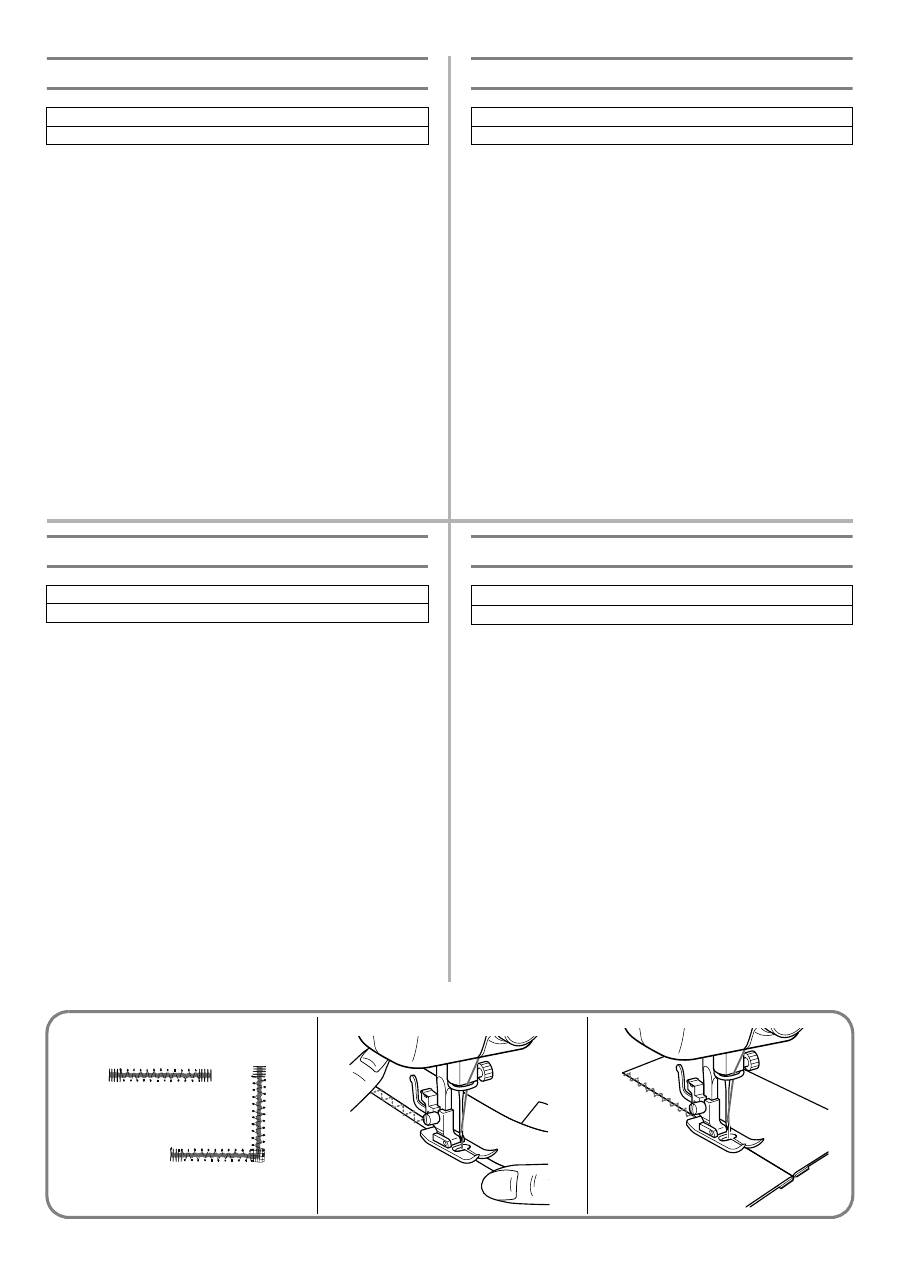
28
Elastic Stitching
The Elastic Stitch can be used in 3 ways: mending, sewing elastic
or joining fabric. Each is explained below.
Set the pattern selection dial to 14.
MENDING
1. Place the reinforcement fabric under the tear to be mended.
2. Following the line of the tear, sew using the Elastic Stitch as
illustrated in fig. A.
SEWING ELASTIC
1. Place the elastic on the fabric.
2. As you sew, stretch the elastic both in the front and behind the
presser foot as shown in
fig. B
.
JOINING FABRIC
The Elastic Stitch can be used to join two pieces of fabric together
and is very effective when sewing knitted fabrics. When nylon
thread is used, the stitch will not be visible.
1. Place the edge of the two pieces of fabric together and center
them under the presser foot.
2. Sew them together using the Elastic Stitch taking care to keep
the two fabric edges close together as shown in
fig. C
.
Pattern
14
(Elastic Stitch)
Point élastique
Le point élastique possède trois fonctions principales: le
raccommodage, la couture d’élastiques ou l’assemblage de tissus.
Chacune de ces trois fonctions se trouve détaillée ci-dessous.
Mettre le sélecteur de modèle sur 14.
REPRISAGE
1. Placer une pièce de renfort sous la déchirure à réparer.
2. Coudre en suivant la ligne de la déchirure. Coudre au point
élastique comme le montre la
fig. A
.
COUTURE D’ELASTIQUES
1. Placer l’élastique sur le tissu.
2. A mesure que l’on coud, tendre l’élastique de part et d’autre
du pied-de-biche (voir
fig. B
).
ASSEMBLAGE DE TISSUS
Le point élastique peut servir à assembler deux morceaux de
tissu. Il s’avère particulièrement efficace pour la couture de
tricots. Avec du fil nylon, la couture sera invisible.
1. Placer bord à bord les deux pièces de tissu et les centrer sous
le pied-de-biche.
2. Les assembler avec le point élastique, en prenant bien soin de
garder les deux pièces bord à bord, comme le montre la
fig.C
.
Modèle
14
(Point élastique)
Puntada elástica
Se puede usar la puntada elástica para tres operaciones: los remiendos, la
inserción de gomas elásticas y como puntada de unión para juntar dos tejidos.
Cada una de estas operaciones se detalla a continuación.
Ponga el selector de puntadas en 14.
REMIENDOS
1. Coloque una tela de refuerzo debajo de la parte a remendar.
2. Siguiendo la línea de la rasgadura, cosa con la puntada elástica
tal como ilustrado en la
fig. A
.
INSERCIÓN DE GOMAS ELÁSTICAS
1. Ponga la goma sobre el tejido.
2. A medida que esté cosiendo, estire el elástico tanto delante como
detrás del prensatelas tal como se muestra en la
fig. B
.
PUNTADA DE UNIÓN
La puntada elástica puede servir para unir dos trozos de tejido y
resulta muy eficiente para la costura de prendas de punto. Si se usa un
hilo de nylón, la puntada resultará invisible.
1. Junte las orillas de ambos trozos de tejido y céntrelas debajo del
prensatelas.
2. Cósalas juntas con la puntada elástica, teniendo sumo cuidado en mantener
las dos orillas de los tejidos muy juntas, tal como se aprecia en la
fig. C
.
Número de puntada
14
(puntada elástica)
Эластичная строчка
Эластичная строчка может быть использована в трёх случаях:
ремонт повреждённой ткани, пришивание эластичной тесьмы
или стачивание кусков ткани. Каждое из этих применений
объяснено ниже.
Установите ручку выбора строчки в положение «14».
РЕМОНТ ТКАНИ
1. Под место разрыва, требующее ремонта, поместите
подходящий по размеру укрепляющий кусок ткани.
2. Шейте по линии разрыва, используя эластичную строчку,
как показано на
рис. А
.
ПРИШИВАНИЕ ЭЛАСТИЧНОЙ ТЕСЬМЫ
1. Положите эластичную тесьму (резинку) на ткань.
2. В процессе шитья растягивайте резинку одновременно
спереди и сзади прижимной лапки как показано на
рис. B
.
СТАЧИВАНИЕ ТКАНЕЙ
Эластичный шов может быть использован для стачивания
двух кусков ткани и очень эффективен при работе с вязаными
полотнами. При использовании нейлоновой нити шов будет
незаметным.
1. Сложите кромками два полотна ткани и разместите место
их стыка под прижимной лапкой.
2. Сшейте их, используя эластичный шов, стараясь сохранять
кромки кусков ткани сомкнутыми, как показано на
рис. C
.
Положение ручки выбора вида строчки
14
(Эластичная строчка)
A
B
C
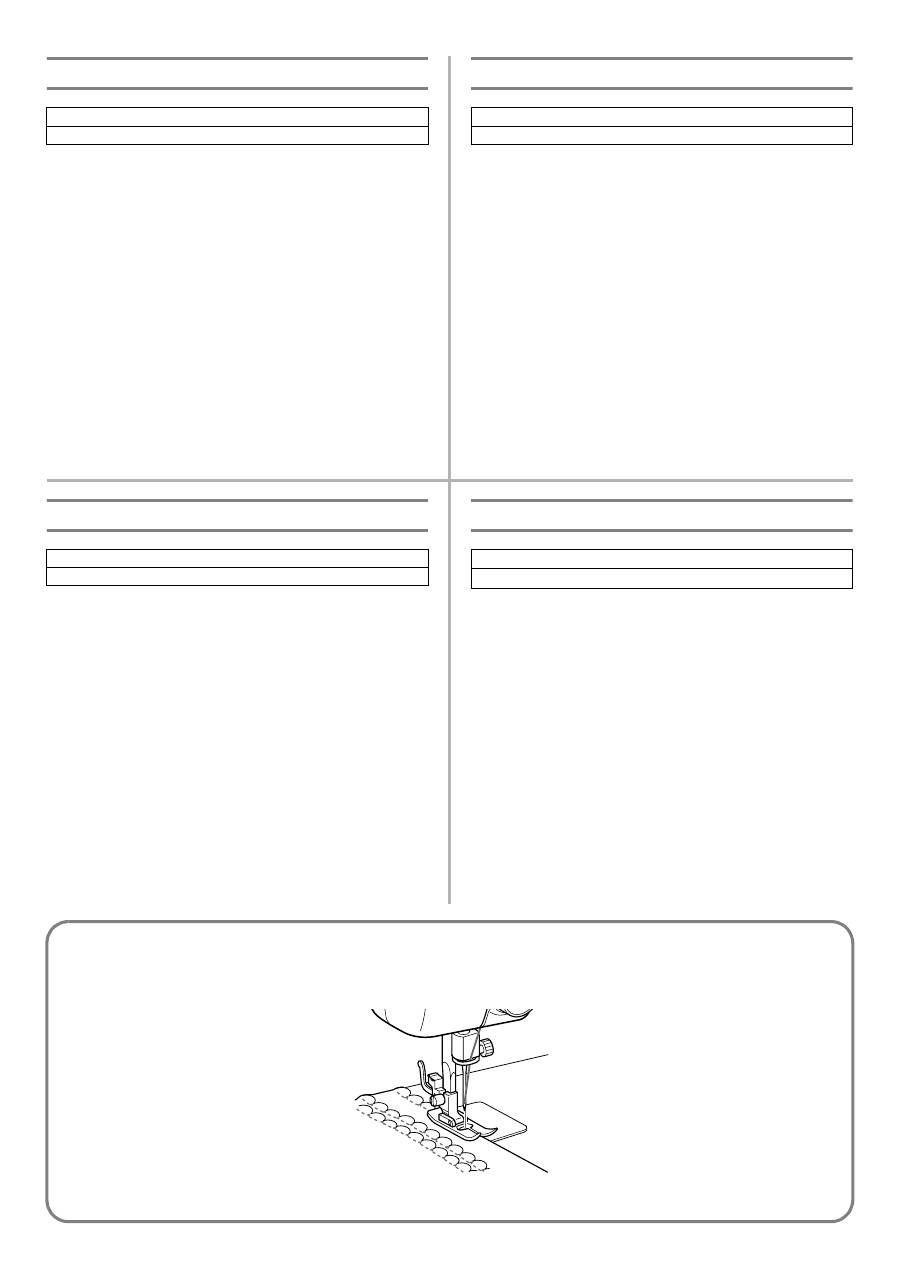
29
Shell Tuck Stitching
The Shell Tuck Stitch can be used to sew a picot (lace-like) edge
on a lightweight fabric.
1. Set the pattern selection dial to 13.
2. Use a tighter thread tension than normal.
3. At a slow speed, sew the fabric on the bias, placing it under
the presser foot so that the straight stitches are sewn on the
seamline and the zigzag stitches are sewn slightly over the
folded edge.
Pattern
13
(Shell Tuck Stitch)
Point picot
Utiliser ce point pour réaliser une lisière à picot (semblable à de
la dentelle) sur un tissu léger.
1. Mettre le sélecteur de modèle de point sur 13.
2. La tension du fil supérieur doit être légèrement plus forte que
la normale.
3. Coudre lentement le tissu sur le biais après l’avoir placé sous
le pied-de-biche de sorte que la machine puisse coudre des
points droits sur la ligne de couture et des points zigzag
légèrement au-dessus du bord replié.
Modèle
13
(Point picot)
Puntada ondas
La puntada ondas puede usarse para coser una puntilla (como encaje)
en un tejido fino.
1. Ponga el selector de puntadas en 13.
2. Este trabajo requiere aumentar un poco más la tensión de hilo que
en condiciones normales.
3. Cosa lentamente el tejido en el sesgo, situándolo debajo del
prensatelas de tal forma que las puntadas rectas se cosan en la
línea de la costura y que las puntillas de las puntadas zigzag
sobrepasen ligeramente el borde doblado.
Número de puntada
13
(Puntada ondas)
СтрочкаEракушка
Строчка*ракушка может использоваться для шитья зубчатого
(похожего на кружево) края на тонких тканях.
1. Установите ручку выбора строчки в положение «13».
2. Настройте натяжение нити таким образом, чтобы оно
было несколько сильнее обычного
3. На небольшой скорости шейте ткань, сложенную по
косой, размещая её под прижимной лапкой таким
образом, чтобы прямые стежки были расположенными
вдоль шва, а зигзагообразные стежки слегка заходили за
край сгиба.
Положение ручки выбора вида строчки
13
(Строчка*ракушка)

30
2
1
Making a Buttonhole
NOTE:
1. It is recommended to practice making a buttonhole on a scrap
piece of fabric before attempting it on the actual garment.
2. When making buttonholes on soft fabrics, place stabilizer
material on the underside of the fabric.
Buttonhole-making is a simple process that provides reliable
results.
MAKING A BUTTONHOLE
1. Using tailor’s chalk, mark the position and length of the
buttonhole on the fabric.
2. Attach the buttonhole foot and push the outside frame back
until the sliding insert is in the front.
3. The front bar tack will be sewn first. Place the fabric under the
presser foot so that the middle of the front of the tailor’s chalk
line is directly in the center of the presser foot and aligned
with the two red lines on the insert as shown below.
a
Front of chalk mark
b
Red lines
Pattern
Foot
1(b ac d)
Buttonhole foot
Création d’une boutonnière
REMARQUE:
1. Il est vivement conseillé de s’entraîner au préalable sur une
chute de tissu avant de faire la boutonnière sur l’ouvrage
souhaité.
2. Lors de la réalisation de boutonnières sur des tissus doux et
légers, placer une pièce de renfort à l’envers du tissu.
Facile à réaliser, la couture automatique de boutonnières à la
machine donne des résultats très fiables.
POUR FAIRE UNE BOUTONNIERE
1. A l’aide d’une craie de tailleur, marquer sur le tissu
l’emplacement et la longueur désirée de la boutonnière.
2. Installer le pied pour boutonnière et pousser le cadre extérieur vers
l’arrière, jusqu’à.ce que l’insertion à glissière se trouve devant.
3. La partie avant de la bride d’arrêt doit être cousue en premier.
Placer le tissu sous le pied-de-biche de telle manière que le
milieu de la ligne de craie avant se trouve au centre du pied-
de- biche, alignée avec les deux lignes rouges, comme le
montre la
fig. A.
a
Partie avant de la marque à la craie
b
Lignes rouges
Modèle
Pied-de-biche
1(b ac d)
Pied pour boutonnières
Para coser ojales
NOTA:
1. Se recomienda probar los ojales en un pedazo de tejido antes de
hacerlo realmente en las prendas.
2. Para hacer ojales en telidos muy finos, coloque entretela debajo
del tejido.
La función que le permite coser ojales es un proceso simple que
ofrece increíbles resultados.
COSIDO DEL OJAL
1. Con jaboncillo, marque la posición y el largo del ojal en el tejido.
2. Instale el prensatelas para ojales y vuelva a empujar el marco
exterior hasta que la inserción corredera se encuentre delante.
3. Primero, se cose el remate de la parte delantera del ojal. Coloque
el tejido debajo del prensatelas de tal manera que la marca del
centro de la línea de jaboncillo esté directamente en el centro del
prensatelas y quede alineada con las dos líneas rojas de la
inserción, tal como se ilustra.
a
Parte delantera de la marca con jaboncillo.
b
Líneas rojas
Pattern
Foot
1(b ac d)
Buttonhole foot
Выметывание петель
ПРИМЕЧАНИЕ:
1. Перед выметыванием петель на реальном изделии
рекомендуется сначала попрактиковаться на кусочке
ткани.
2. При выметывании петель на мягких тканях подложите под
ткань стабилизирующий материал.
Выметывание петель – простой процесс, обеспечивающий
надежный результат.
ВЫПОЛНЕНИЕ ВЫМЕТЫВАНИЯ ПЕТЕЛЬ
1. При помощи портновского мелка обозначьте
расположение и длину петли на ткани.
2. Установите лапку для вымётывания петель и нажимайте на
её внешнюю рамку по направлению назад до тех пор, пока
сдвижная вставка не окажется спереди.
3. Вначале выполняется передняя закрепка петли. Поместите
ткань под прижимной лапкой таким образом, чтобы
середина меловой отметки, соответствующей переднему
краю петли, оказалась прямо по центру лапки и была
совмещена с двумя красными рисками на вставке, как
показано ниже.
a
Передняя часть метки, нанесенной мелком на ткань
b
Красные риски
Положение ручки выбора строчки
Лапка
1 (b ac d)
Лапка для выметывания петель
A

31
MAKING A BUTTONHOLE
Step
Sewn Portion
Pattern
How to Sew
Step a
(Front end of
buttonhole)
1. Set the pattern selection dial to a.
2. Lower the presser foot and sew 5 to 6 stitches.
3. Stop the machine when the needle is at the left side of the stitches and
raise the needle from the fabric.
Step b
(Left side)
1. Turn the pattern selection dial to b.
2. Sew the predetermined length of the tailor’s chalk line.
3. Stop the machine when the needle is at the left side of the stitch and
raise the needle.
Step c
(Back end of but-
tonhole)
1. Turn the pattern selection dial to c (same as a).
2. Lower the presser foot and sew 5 to 6 stitches.
3. Stop the machine when the needle is at the right side of the stitch and
raise the needle from the fabric.
Step d
(Right side)
1. Set the pattern selection dial to d.
2. Sew the right side until the needle reaches the stitches formed in step a.
a
ac
a
c
b
b
c
ac
a
c
d
d
MARCHE A SUIVRE POUR FAIRE UNE BOUTONNIERE
Step
Sewn Portion
Pattern
Comment coudre
1er temps
(barre d’arrêt
avant de la
boutonnière)
1. Mettre le sélecteur de modèle sur a.
2. Abaisser le pied-de-biche et coudre 5 ou 6 points.
3. Arrêter la machine lorsque l’aiguille se trouve à gauche des points et
relever l’aiguille du tissu.
2ème temps
(côté gauch)
1. Mettre le sélecteur de modèle sur b.
2. Coudre la longueur de la ligne pré-définie à la craie.
3. Arrêter la machine lorsque l’aiguille se trouve à gauche des points et
lever l’aiguille.
3ème temps
(barre d’arrêt
arrière de la
boutonnière)
1. Mettre le sélecteur de modèle sur c (même position que pour a).
2. Abaisser le pied-de-biche et coudre 5 à 6 points.
3. Arrêter la machine lorsque l’aiguille se trouve à droite des points et lever
l’aiguille du tissu.
4ème temps
(côté droit)
1. Mettre le sélecteur de modèle sur d.
2. Coudre la lèvre droite jusqu’à ce que l’aiguille atteigne les points formés
à la phase a.
a
ac
a
c
b
b
c
ac
a
c
d
d
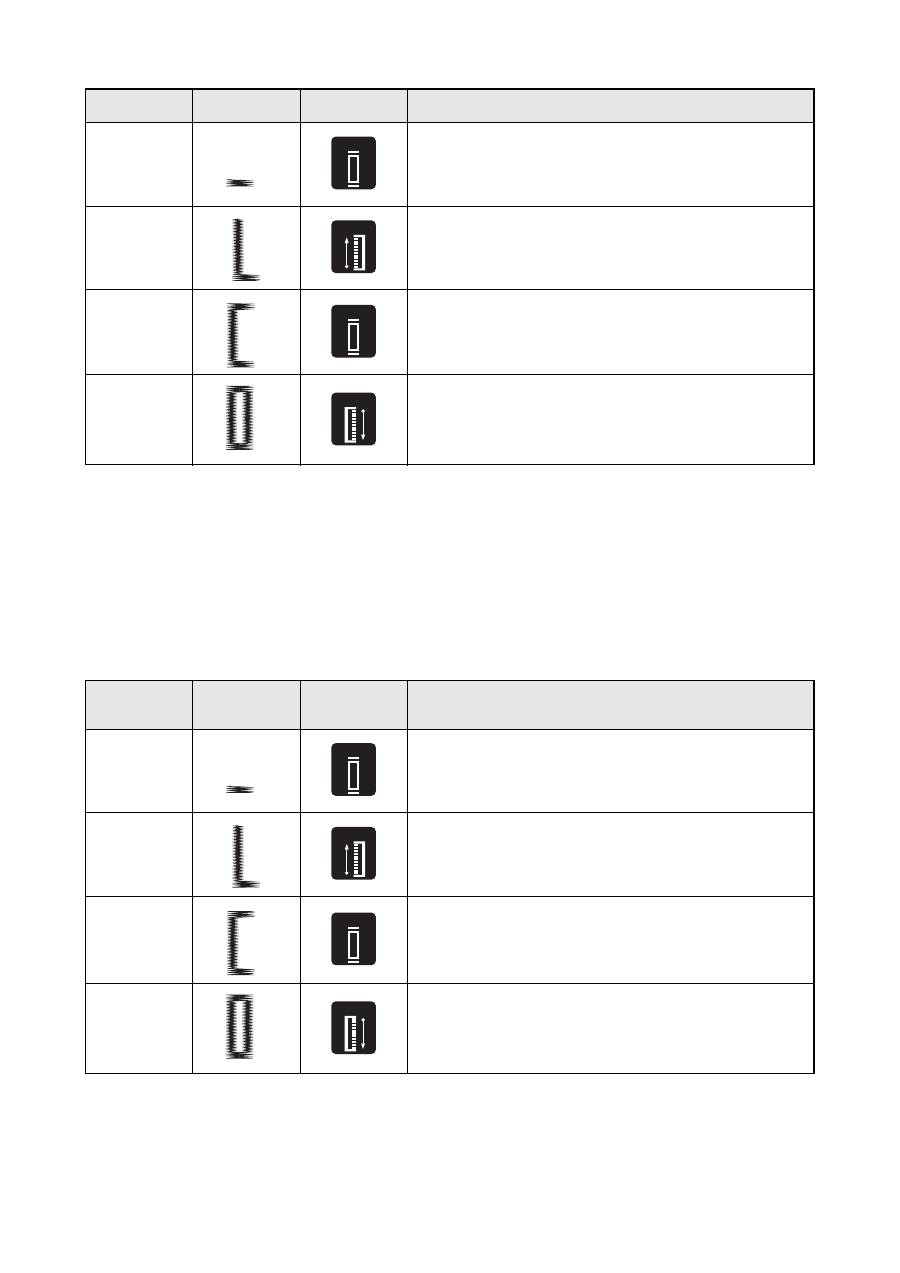
32
COSIDO DE UN OJAL
Pasos
Zona de cosido
Diseño
Como coser
Paso a
(remate de la
parte delantera
del ojal)
1. Ponga el selector de diseño en a.
2. Baje el prensatelas y cosa 5 ó 6 puntadas.
3. Pare la máquina cuando la aguja se encuentre a la izquierda de las puntadas
y levante la aguja del tejido.
Paso b
(lado izquierdo)
1. Ponga el selector de diseño en b.
2. Cosa el largo pre-definido de la línea con jaboncillo.
3. Pare la máquina cuando la aguja se encuentre a la izquierda de la puntada y
levántela.
Paso c
(remate de la
parte atrás del
ojal)
1. Ponga el selector de diseño en c (como para a).
2. Baje el prensatelas y cosa 5 ó 6 puntadas.
3. Pare la máquina cuando la aguja se encuentre a la derecha de las puntadas y
levántela del tejido.
Paso d
(lado derecho)
1. Ponga el selector de diseño en d.
2. Cosa el lado derecho hasta que la aguja alcance las puntadas cosidas en el
primer paso (Paso a).
a
ac
a
c
b
b
c
ac
a
c
d
d
ВЫПОЛНЕНИЕ ВЫМЕТЫВАНИЯ ПЕТЕЛЬ
Шаг
Выполненная
часть
Рисунок
Порядок выполнения
Шаг а
(Передний
конец петли)
1. Установите ручку выбора вида строчки в положение «а».
1. Опустите прижимную лапку и прошейте 5 или 6 стежков.
1. Остановите машину, когда игла будет находиться на левой стороне
строчки, а затем поднимите иглу из ткани.
Шаг b
(Левая
сторона)
1. Поверните ручку выбора вида строчки в положение «b».
1. Прошейте строчку длиной, соответствующей меловой разметке.
1. Остановите машину, когда игла будет находиться на левой стороне
строчки, и поднимите иглу из ткани.
Шаг c
(Задний конец
петли)
1. Переведите ручку выбора строчки в положение «с» (совпадающее
с «а»)
1. Опустите прижимную лапку и прошейте 5 или 6 стежков.
1. Остановите машину, когда игла будет находиться на правой стороне
строчки, а затем поднимите иглу из ткани.
Шаг d
(Правая
сторона)
1. Установите ручку выбора вида строчки в положение «d».
1. Прошейте правую сторону до тех пор, пока игла не достигнет
стежков, выполненных в шаге 1.
a
ac
a
c
b
b
c
ac
a
c
d
d
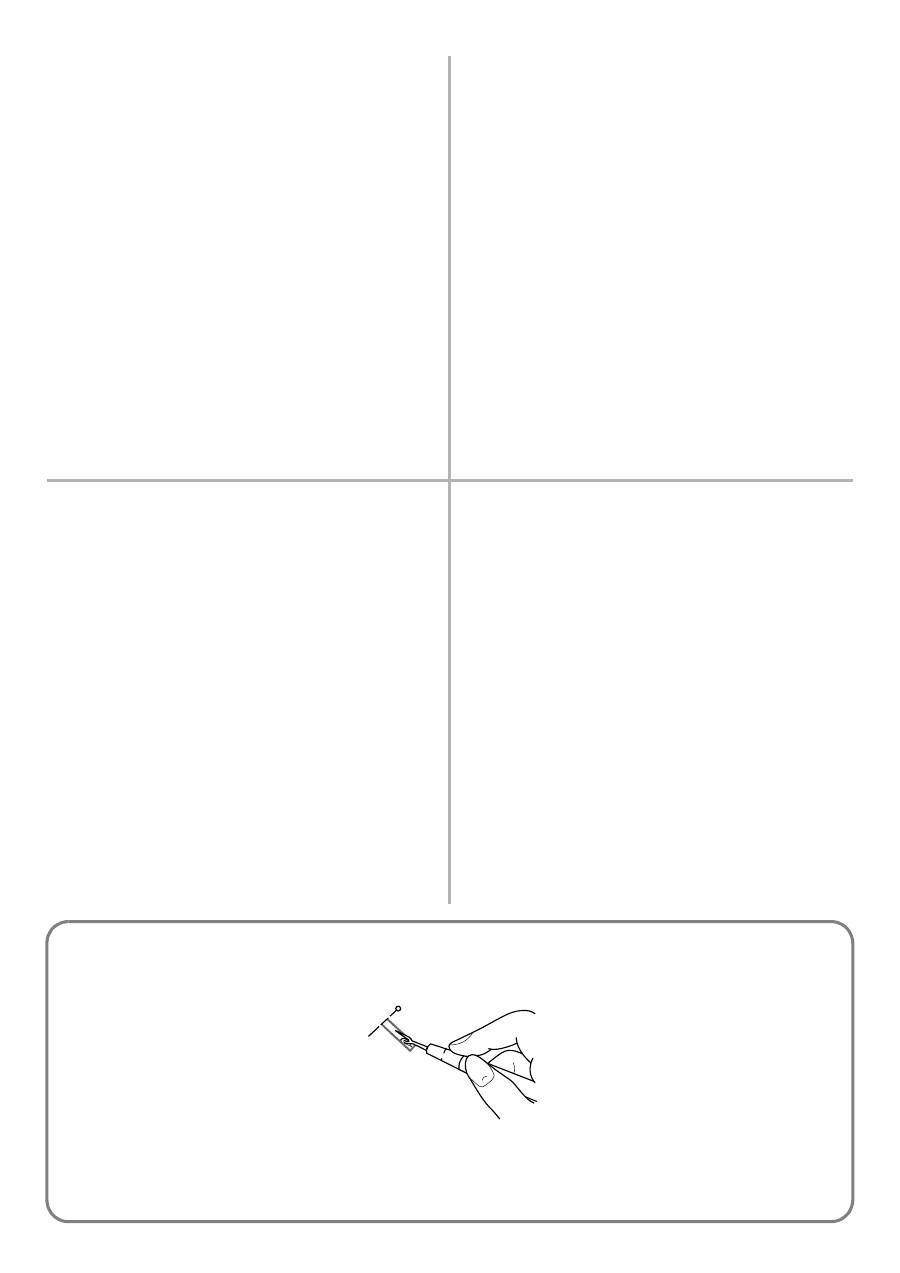
33
SECURING THE STITCHING AND CUTTING THE
BUTTONHOLE
1. To secure the stitching, turn the material 90 degrees
counterclockwise, set the pattern selection dial to the Straight
Stitch (6-10) with the desired length and sew to the edge of the
front bar tack.
2. Remove the fabric from the machine. It is recommended that
pins be placed across both ends of the buttonhole as
protection against cutting the stitches.
3. Cut an opening in the middle of the buttonhole with a seam
ripper tool. Be careful not to cut through any stitches.
COMMENT ARRETER LA COUTURE ET OUVRIR LA
BOUTONNIERE
1. Pour arrêter la couture, tourner le tissu de 90 degrés dans le
sens inverse des aiguilles d’une montre, mettre le sélecteur de
modêle de point sur le point droit (6-10), réglé sur la longueur
souhaitée, et coudre jusqu’au bout de la bride d’arrêt avant.
2. Retirer le tissu de la machine. Il est vivement conseillé de
placer des épingles à chaque extrémité de la boutonnière afin
de ne pas couper les barrettes.
3. Couper une ouverture au milieu de la boutonnière à l’aide du
découd-vite, en veillant bien à ne couper aucune couture.
PARA COMPLETAR LAS PUNTADAS Y CORTAR EL OJAL
1. Para asegurar las puntadas, gire el tejido de 90 grados en el
sentido contrario al de las manecillas de un reloj, coloque el
selector de puntadas en la puntada recta (6-10) del largo deseado
y cosa hasta el final del remate de la parte delantera.
2. Retire el tejido de la máquina. Se recomienda colocar alfileres en
ambos extremos del ojal para evitar el corte de las puntadas.
3. Corte una apertura en el medio del ojal con la cuchilla especial
que sirve para abrir costuras. Tenga cuidado en no cortar ninguna
puntada.
ЗАКРЕПЛЕНИЕ СТРОЧКИ И ПРОРЕЗКА ПЕТЛИ
1. Для закрепления строчки поверните материал на
90 градусов против часовой стрелки, установите ручку
выбора вида строчки на «Прямую строчку» (6*10) в
соответствии с требуемой длиной стежка и прошейте до
конца закрепки переднего края петли.
2. Снимите изделие с машины. Для защиты строчки от
прорезания рекомендуется вставить по булавке поперёк
обоих концов петли.
3. С помощью приспособления для вспарывания петель
прорежьте отверстие посередине петли.
Будьте осторожны – не прорежьте стежки.
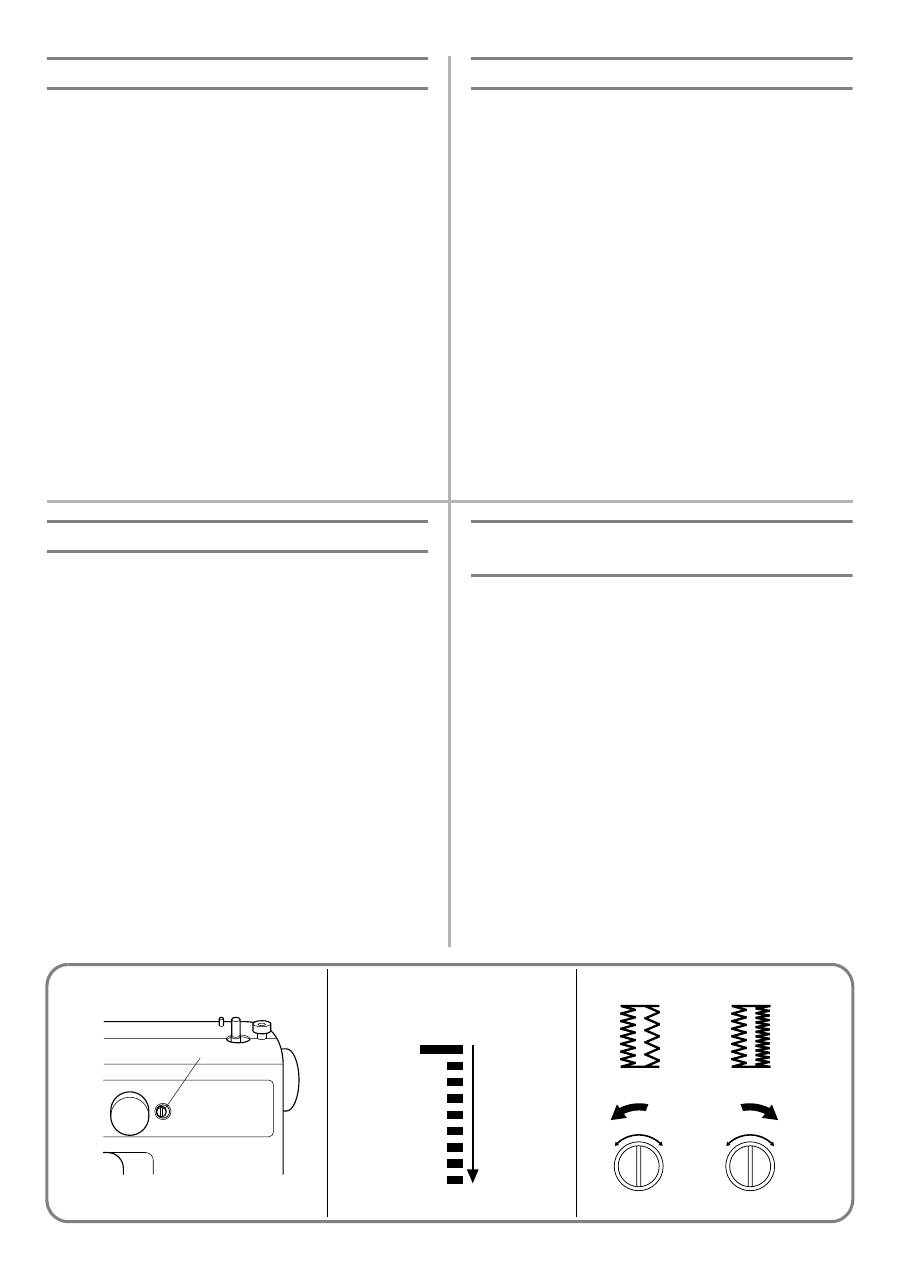
34
1
2
+
–
3
4
+
–
Buttonhole Fine Adjustment
If the stitching on the two sides of the buttonhole do not appear
uniform, the following adjustments can be made.
1. After sewing the left side of the buttonhole, stitch the right side
and observe the feeding.
2. If the right side is too coarse or fine compared to the left side,
adjust the buttonhole fine-adjusting screw as described
below.
If the right side is too coarse, turn the buttonhole fine-adjusting
screw with the enclosed large screwdriver in the – direction.
If the right side is too fine, turn the buttonhole fine-adjusting
screw with the enclosed large screwdriver in the + direction.
This adjustment allows both sides of the buttonhole to appear
uniform.
a
Buttonhole fine-adjusting screw
b
Right row
c
Too coarse
d
Too fine
Equilibrage des boutonnières
Si les points de chaque côté de la boutonnière sont
dissemblables, procéder aux réglages suivants:
1. Lorsque l’on obtient un entraînement satisfaisant pour la lèvre
gauche, coudre la lèvre droite de la boutonnière et observer
l’entraînement.
2. Si la lèvre droite est trop dense ou trop espacée par rapport à
la lèvre gauche, régler la vis d’équilibrage des boutonnières,
comme indiqué ci-dessous.
Si le côté droit est trop dense, à l’aide du grand tournevis fourni,
tourner la vis d’équilibrage des boutonnières dans le sens du -.
Si le côté droit est trop fin, à l’aide du grand tournevis fourni,
tourner la vis d’équilibrage des boutonnières dans le sens du +.
Ce réglage rend les deux lèvres de la boutonnière uniformes.
a
Vis d’équilibrage des boutonnières
b
Lèvre droite
c
Trop dense
d
Trop fin
Ajuste fino de los ojales
Si las puntadas en ambos lados del ojal no parecen ser uniformes, se
pueden hacer los siguientes ajustes.
1. Después de coser la parte izquierda del ojal, cosa la parte derecha
y mire la alimentación del tejido.
2. Si la parte derecha del ojal es demasiada gruesa o fina con
relación a la parte izquierda, apriete o suelte el tornillo para
ajuste fino del ojal tal como se describe a continuación.
Si la parte derecha es demasiada gruesa, con el destornillador que se
incluye, gire el tornillo en el sentido del -.
Si la parte derecha es demasiada fina, con el grande destornillador
incluido, gire dicho tornillo en el sentido del +.
Este ajuste permite que ambos lados del ojal parezcan uniformes.
a
Tornillo de ajuste fino de ojal
b
Lado derecho
c
Demasiado grueso
d
Demasiado fino
Точная настройка при выметывании
петель
Если строчка на двух сторонах петли выглядит неодинаково,
может быть произведена следующая регулировка:
1. После вымётывания левой части петли начинайте
выметывание правой части и наблюдайте за подачей
ткани.
2. Если правая сторона слишком рыхлая или слишком
плотная по сравнению с левой, выполните регулировку с
помощью винта точной настройки, как описано ниже.
Если правая сторона слишком рыхлая, то большой отверткой
поверните винт точной настройки выметывания петель в
направлении «–».
Если правая сторона слишком плотная, то большой отверткой
поверните винт точной настройки выметывания петель в
направлении «+».
Эта регулировка позволяет добиться того, чтобы обе стороны
петли выглядели одинаково.
a
Винт точной настройки выметывания петель
b
Правый ряд
c
Слишком рыхло
d
Слишком плотно
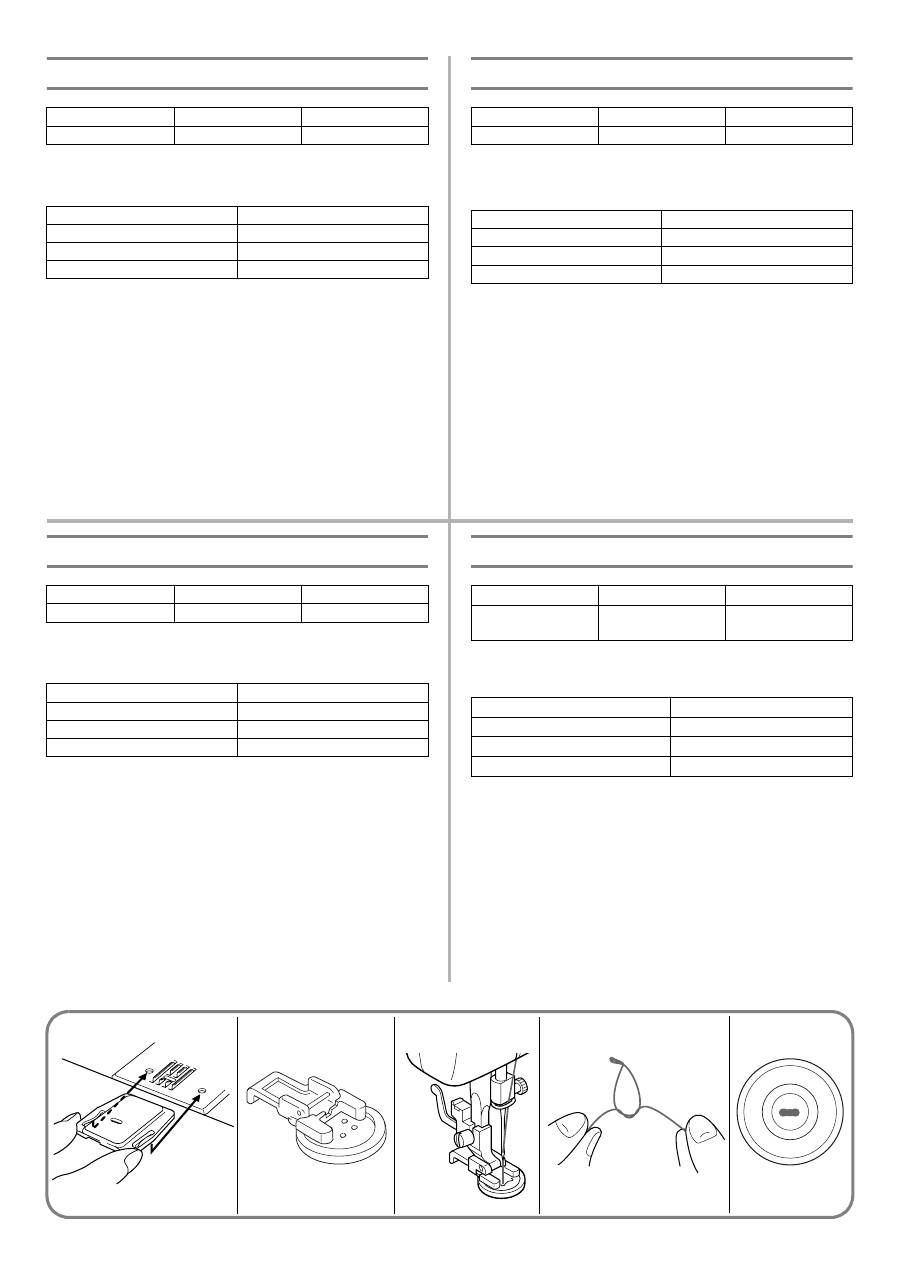
35
Button Sewing
1. Measure the distance between the buttonholes and set the
pattern selection dial to the Zigzag Stitch (2, 3 or 4) with the
desired width.
2. Attach the button sewing foot.
3. Place the darning plate on the needle plate as shown in
fig. A
.
4. Place a button between the foot and the fabric, turn the
balance wheel and make sure that the needle enters the holes
without hitting the button. If it hits, see step 1.
5. At a slow speed, sew approximately 10 stitches.
6. Remove the material from the machine. Cut the upper and
lower threads leaving 15cm (6") lengthes. Use a hand-sewing
needle to draw the upper thread to the back of the material.
Tie the two threads together to secure.
Pattern
Foot
Other
2, 3 or 4
Button Sewing Foot
Darning Plate
Distance between holes
Pattern
1.6mm (1/16")
2
3.2 mm (1/8")
3
4.8 mm (3/16")
4
Pour coudre un bouton
1. Mesurer la distance entre les orifices et régler le sélecteur de
modèle de point sur le point zigzag (2,3 ou 4) ayant la largeur
appropriée.
2. Fixer le pied pour boutons.
3. Placer la plaque à repriser sur la plaque à aiguille comme le
montre la
fig. A
.
4. Placer un bouton entre le pied et le tissu, tourner le volant et
veiller à ce que l’aiguille pique dans les trous sans heurter le
bouton. Si jamais elle heurte le bouton, veuillez vous reporter
au point 1.
5. Coudre environ 10 points à faible vitesse.
6. Retirer le tissu de la machine. Couper les fils inférieur et
supérieur en laissant à chacun une longueur de 15 cm.
Utiliser une aiguille à coudre normale pour faire passer le fil
supérieur à l’envers du tissu. Nouer les deux fils pour éviter
que la couture ne se défasse.
Modèle
Pied-de-biche
Autre
2, 3 ou 4
Pied pour boutons
Plaque à repriser
Distance entre les orifices
Modèle
1,6 mm
2
3,2 mm
3
4,8 mm
4
Coser botones
1. Mida la distancia entre los distintos agujeros del botón y ponga el
selector de puntadas en la puntada zigzag (2, 3 ó 4) con el ancho
deseado.
2. Instalar el prensatelas para botones.
3. Instale la placa de zurcir sobre la placa de agujas tal como se
ilustra en la
fig. A
.
4. Coloque un botón entre el prensatelas y el tejido, gire la ruedecilla
y asegúrese de que la aguja pase por los agujeros sin picar el
botón. Si golpea el botón, véase el punto 1.
5. Cosa unas 10 puntadas a baja velocidad.
6. Retire el tejido de la máquina. Corte los hilos inferior y superior
dejando unos 15 cm de hilos sueltos. Utilice una aguja de coser
normal para pasar el hilo superior en el revés del tejido y haga un
nudo con ambos hilos para asegurar la costura.
Número de puntada
Prensatelas
Otros
2, 3 ó 4
Prensatelas para botones
Placa de zurcir
Distancia entre los agujeros
Número de puntada
1,6mm
2
3,2 mm
3
4,8 mm
4
Пришивание пуговиц
1. Измерьте расстояние между отверстиями пуговицы и
установите ручку выбора вида строчки в положение Строчка
«зигзаг» (2, 3 или 4) в соответствии с требуемой шириной.
2. Установите лапку для пришивания пуговиц.
3. Поместите штопальную пластину на игольную пластину
как показано на
рис. A
.
4. Положите пуговицу между лапкой и тканью; вращая
маховик машины, убедитесь, что игла при шитье точно
входит в отверстия и не попадает по пуговице. Если игла
ударяет по пуговице, повторите шаг 1.
5. Прошейте приблизительно 10 стежков на небольшой скорости.
6. Снимите материал с машины. Обрежьте верхнюю и
нижнюю нити, оставляя концы длиной 15 см. Используйте
иглу для ручного шитья, чтобы протащить верхнюю нить
на изнаночную сторону материала. Свяжите обе нитки для
закрепления.
Вид строчки
Лапка
Прочее
2, 3 или 4
Лапка для
пришивания пуговиц
Штопальная
пластина
Расстояние между отверстиями
Вид строчки
1,6 мм
2
3,2 мм
3
4,8 мм
4

36
Zipper Insertion
The zipper foot is used to sew on various types of zippers and can
easily be positioned to the right or left side of the needle.
When sewing the right side of the zipper, attach the shank to the
left pin of the zipper foot. When sewing the left side of the zipper,
attach the shank to the right pin of the zipper foot. See
fig. A
.
1. Set the pattern selection dial to the Straight Stitch (6-10) with
the desired length.
2. Lower the presser foot lever and attach either the left or right
pin of the zipper foot onto the shank.
3. Fold the edge of the fabric 2 cm (3/4") back and place the
zipper under the folded portion.
4. Lower the needle into the notch located on the side of the
zipper foot.
5. Sew from the bottom of the zipper toward the top on both
sides. The needle should be positioned on the zipper side of
the foot for best results. See
fig. B
. Sew through the fabric
close to the edge of the zipper guiding the zipper foot along
the zipper teeth.
6. To sew the opposite side of the zipper, release the foot by
raising the lever located at the back of the presser foot holder
assembly, install the zipper foot on the other side of the zipper
and continue sewing using the other side notch.
a
Zipper foot
b
Right pin for sewing the left side of the zipper
c
Left pin for sewing the right side of the zipper
d
Lower the needle into the notch
Pattern
6-10
(Straight Stitch)
Insertion de fermeture à glissière
Le pied à semelle étroite permet de coudre de nombreux types de fermetures
à glissière et peut aisément être installé à droite ou à gauche de l’aiguille.
Lors de la couture de la partie droite de la fermeture à glissière, fixer la
semelle à la partie gauche du pied approprié. Lors de la couture du côté
droit, installer la semelle à la partie droite du pied. Voir
fig. A
.
1. Mettre le sélecteur de modèle sur le point droit (6-10) avec la
longueur souhaitée.
2. Abaisser le levier du pied-de-biche et fixer la partie gauche ou
droite du pied pour fermetures à glissière dans l’encoche.
3. Plier le bord du tissu à 2 cm et placer la fermeture à glissière
sous la partie pliée.
4. Abaisser l’aiguille et la faire passer dans l’encoche située sur
le côté du pied pour fermetures à glissière.
5. Coudre la fermeture à glissière de bas en haut, des deux côtés.
Pour obtenir les meilleurs résultats, il est recommandé de placer
l’aiguille du côté de la fermeture à glissière par rapport au pied.
Voir
fig. B
. Coudre le tissu près du bord de la fermeture en guidant
le pied-de-biche pour fermetures le long des dents de la fermeture.
6. Pour coudre le côté opposé de la fermeture à glissière, libérer le
pied en relevant le levier situé à l’arrière du support, installer le
pied pour fermeture à glissière de l’autre côté de la fermeture et
continuer à coudre en faisant passer l’aiguille par l’autre encoche.
a
Pied pour fermetures à glissière
b
Axe de droite pour coudre le côté gauche de la fermeture à glissière.
c
Axe de gauche pour coudre le côté droit de la fermeture à glissière.
d
Abaisser l’aiguille et la faire glisser dans l’encoche.
Modèle
6-10 (Point
droit)
Poner de cremalleras
La pata de cremalleras sirve para coser varios tipos de cremalleras y
puede colocarse fácilmente hacia la izquierda o derecha de la aguja.
Cuando la cremallera se cose por el lado derecho, instale la pata
deslizándola hacia la izquierda. Cuando se cose la cremallera por el
lado izquierdo, instale la pata deslizándola hacia la derecha, tal como
lo muestra la
fig. A
.
1. Ponga el selector de puntadas en la puntada recta (6-10) con el
largo deseado.
2. Baje la palanca del prensatelas y coloque el eje izquierdo o
derecho de la pata de cremalleras en el soporte.
3. Doble la orilla del tejido a 2 cm (3/4") y coloque la cremallera
debajo de la parte doblada.
4. Baje la aguja en la hendidura situada en el lado de la pata de
cremalleras.
5. Cosa a partir de la parte inferior de la cremallera hacia la parte
superior, por ambos lados. Para mejores resultados, se debe colocar
la aguja del lado de la pata y de la cremallera. Véase
fig. B
para
mayores detalles. Cosa el tejido cerca de la orilla de la cremallera,
guiando la pata a lo largo de los dientes de la cremallera.
6. Para coser el lado opuesto de la cremallera, suelte la pata al subir
la palanca situada en la parte posterior del soporte, instale la pata
en el otro lado de la cremallera y siga cosiendo, pasando la aguja
por la hendidura del otro lado.
a
Pata de cremalleras
b
Eje derecho para coser la parte izquierda de la cremallera
c
Eje izquierdo para coser la parte derecha de la cremallera.
d
Baje la aguja dentro de la ranura.
Número de puntada
6-10
(Puntada recta)
Вшивание застежки «молния»
Лапка для «молний» применяется при вшивании различных видов
застёжек*«молний» и может быть легко позиционирована как к
правостороннему, так и к левостороннему положению иглы.
При вшивании правой стороны застежки «молния» следует
присоединить к адаптеру прижимной лапки левый стерженек
лапки для вшивания застежки «молния». При вшивании
левой стороны застежки «молния» следует присоединить к
адаптеру прижимной лапки правый стерженек лапки для
вшивания застежки «молния». См.
рис. A
..
1. Установите ручку выбора вида строчки на «Прямую
строчку» (6*10 или 11) с желаемой длиной стежка.
2. Опустите рычаг прижимной лапки и зафиксируйте либо
левый, либо правый стерженек лапки для вшивания
застежки «молния» в адаптере.
3. Подверните край материала шириной 2 см и положите
застежку «молния» под загнутую кромку.
4. Опустите иглу в паз, расположенный сбоку лапки для
вшивания застежки «молния».
5. Прошейте обе стороны застежки «молния» в направлении
снизу вверх. Для получения наилучшего результата, игла
должна располагаться по ту же сторону от лапки, по
которую находится и застежка «молния». См.
рис. B
.
Ведите шов по ткани близко к кромке «молнии»,
направляя лапку вдоль зубцов застёжки.
6. Для пришивания противоположной стороны застежки
«молния» отсоедините лапку, подняв рычаг, расположен*
ный на задней стороне адаптера прижимной лапки,
разместите лапку на другой стороне «молнии» и
продолжите вшивание, используя паз на другой стороне.
a
Лапка для вшивания застежки «молния»
b
Правый стерженек для вшивания левой стороны застежки «молния»
c
Левый стерженек для вшивания правой стороны застежки «молния»
d
Вхождение иглы в паз.
Вид строчки
6*10
(Прямая строчка)

37
1
2
3
4
4
Gathering
1. Set the pattern selection dial to the Straight Stitch (6-10) with
the desired length.
2. Loosen the tension of the upper thread (to about 2) so that the
lower thread lies on the underside of the fabric.
3. Sew a single row or evenly-spaced multiple rows of Straight
Stitches.
4. Pull the lower thread(s) to gather the fabric.
Pattern
6-10
(Straight Stitch)
Pour froncer un tissu
1. Mettre le sélecteur de modèle sur le point droit (6-10) avec la
longueur souhaitée.
2. Relâcher la tension du fil supérieur (mettre sur 2 environ) afin
que le fil inférieur reste tendu à l’envers du tissu.
3. Faire une seule ligne ou plusieurs lignes de points droits à
intervalles égaux.
4. Tirer sur le ou les fils inférieurs pour froncer le tissu.
Modèle
6-10 (Point
droit)
Fruncido
1. Ponga el selector de puntadas en la puntada recta (6-10) con el
largo deseado.
2. Suelte la tensión del hilo superior (hasta alrededor de 2) para que
el hilo inferior se encuentre tirante en el revés del tejido.
3. Cosa una sola línea de puntadas rectas o distintas líneas a igual
distancia las unas de las otras.
4. Tire del o de los hilos inferiores para fruncir el tejido.
Número de puntada
6-10
(Puntada recta)
Выполнение сборок
1. Установите ручку выбора вида строчки на «Прямую
строчку» (6*10) с желаемой длиной стежка.
2. Ослабьте натяжение верхней нити (ориентировочно до
значения 2), чтобы нижняя нить оставалась на нижней
стороне материала.
3. Прострочите один ряд или несколько равномерно
расположенных рядов Прямой строчкой.
4. Подтяните нижнюю нить (нижние нити), чтобы создать
сборки на материале.
Вид строчки
6*10 (Прямая
строчка)
A
B
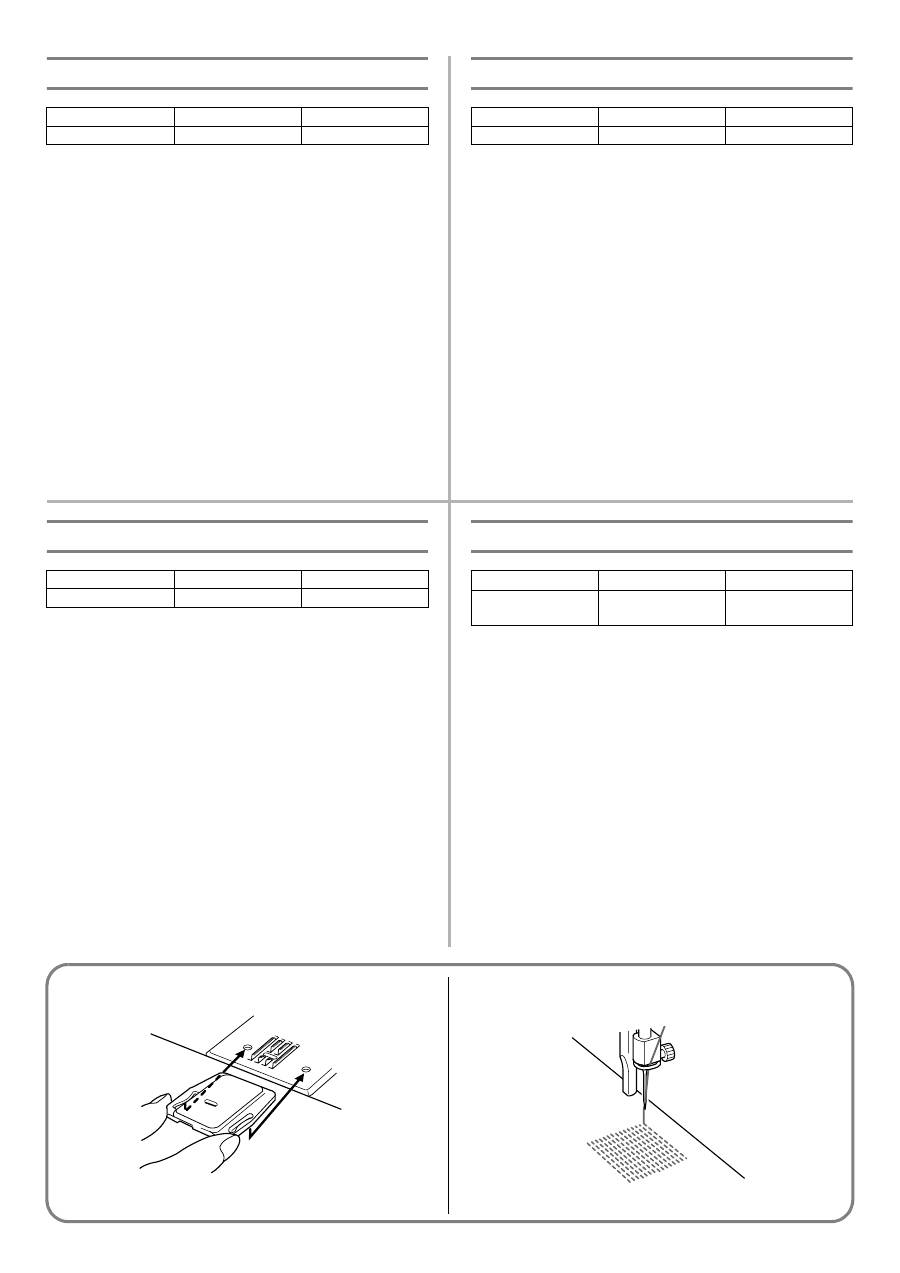
38
Darning
1. Place the darning plate on the needle plate as shown in
fig. A
.
2. Set the pattern selection dial to the Straight Stitch (6-10) with
the desired length.
3. Place the portion to be darned under the presser foot together
with a fabric underlay for reinforcement.
4. Either remove both the presser foot and presser foot holder
assembly or use an embroidering presser foot (sold
separately).
5. Begin sewing alternating between gently drawing the work
away from you and pulling it toward you. With the darning
plate on the machine, the feed dogs will not move the fabric.
You control the fabric movement with your hands.
6. Repeat this motion until the portion to be darned is filled with
parallel lines of stitching. See
fig. B
.
Pattern
Foot
Other
6-10 (Straight Stitch)
None
Darning Plate
Reprisage
1. Placer la plaque à repriser sur la plaque à aiguille comme le
montre la
fig. A
.
2. Mettre le sélecteur de modèle sur le point droit (6-10) avec la
longueur souhaitée.
3. Placer la partie à repriser et la pièce de renfort sous le pied-
de-biche.
4. Soit retirer le pied-de-biche et son support ou utiliser un pied
pour broderies (non fourni)
5. Commencer à coudre en donnant au tissu un mouvement de
va-et-vient (en le poussant et en le tirant doucement). Lorsque
la plaque à repriser est installée sur la machine, les griffes
d’entraînement n’ont plus d’effet sur le tissu. Le tissu est
déplacé manuellement.
6. Répéter l’opération jusqu’à ce que l’ensemble de la partie à
repriser soit couverte de lignes de piqûres parallèles. Voir
fig.
B
.
Modèle
Pied-de-biche
Autre
6-10 (Point droit)
Sans pied
Plaque à repriser
Zurcido
1. Instale la placa de zurcir sobre la placa de agujas tal como se
ilustra en la
fig. A
.
2. Ponga el selector de puntadas en la puntada recta (6-10) con el
largo deseado.
3. Ponga el tejido a zurcir debajo del prensatelas con una pieza de
tela de refuerzo debajo.
4. Quite el prensatelas y su soporte o use un prensatelas para
bordados (que se vende aparte).
5. Empiece a coser empujando y tirando alternativamente del tejido.
Cuando la placa de zurcir está puesta en la máquina, los
alimentadores no tienen ningún efecto sobre el tejido. Su
movimiento se controla únicamente con las manos.
6. Repita la operación hasta que se haya completado el zurcido
cosiendo unas cuantas pasadas de puntadas paralelas. Véase
fig.
B
.
Número de puntada
Prensatelas
Otros
6-10 (Puntada recta)
Quitarlo, sin prensatelas
Placa de zurcir
Штопка
1. Поместите штопальную пластину на игольную пластину
как показано на
рис. A
.
2. Установите ручку выбора вида строчки на «Прямую
строчку» (6*10) с желаемой длиной стежка.
3. Разместите участок ткани, который собираетесь штопать,
вместе с усилительной подложкой из ткани под
прижимной лапкой.
4. Либо снимите прижимную лапку вместе с адаптером, либо
используйте лапку для вышивания (продаётся отдельно).
5. Начните шить, осторожно подтягивая изделие поочередно
от себя и к себе. При установленной на машине
штопальной пластине гребёнка транспортёра не
протягивает ткань. Вы управляете перемещением ткани
вручную.
6. Повторяйте это движение до тех пор, пока область штопки
не будет полностью покрыта параллельными линиями
строчек. См.
рис. B
.
Вид строчки
Лапка
Прочее
6*10 (Прямая
строчка)
Не применяется
Штопальная
пластина
A
B
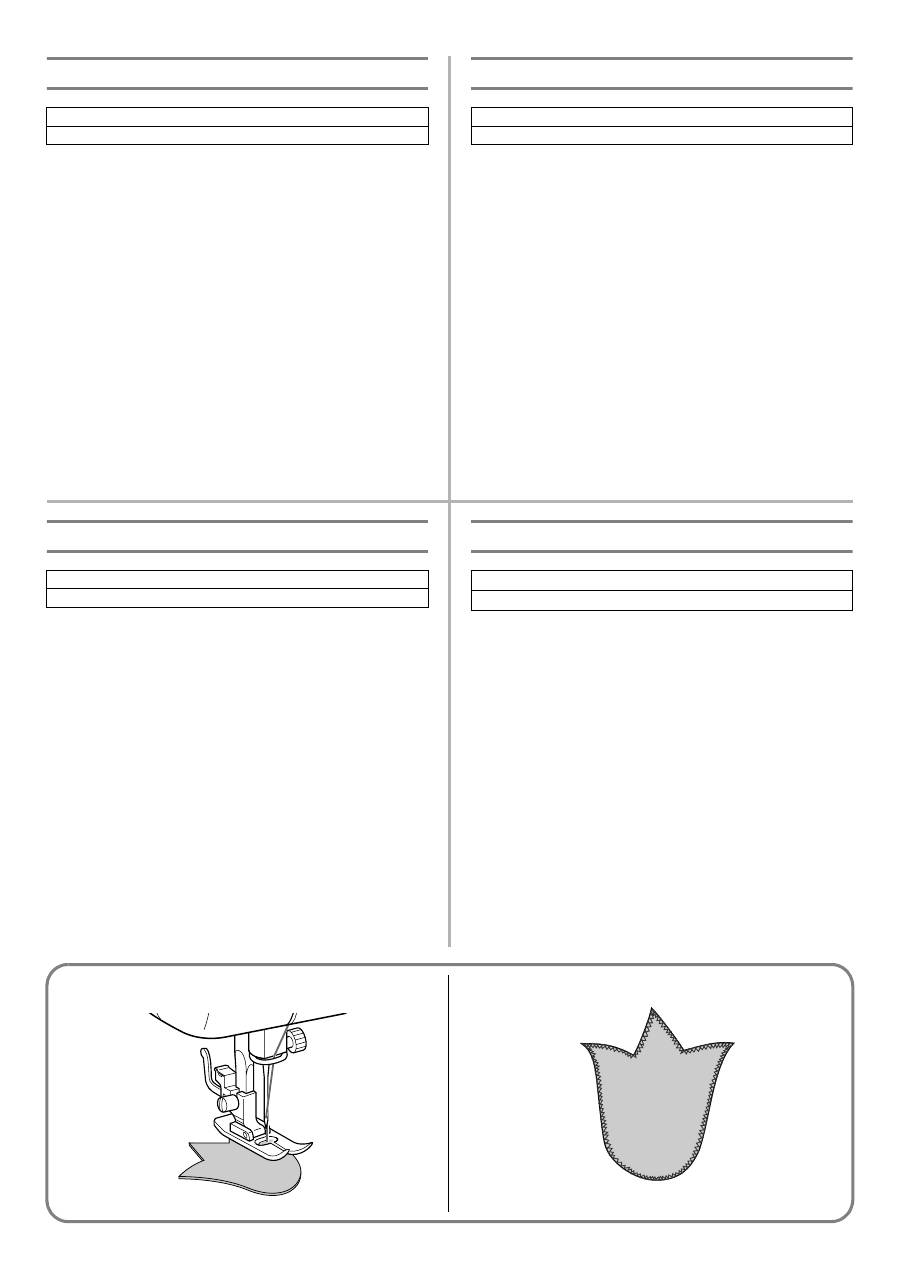
39
Appliques
An applique is created by cutting a contrasting piece of fabric
into a shape to be used as a decoration on a garment or project.
1. Baste the cut design to the fabric in the desired location where
desired.
2. Carefully sew around the edge of the cutout design with the
appropriate Zigzag Stitch (2, 3, 4 or 5).
3. Cut away the surplus fabric outside of the stitching.
4. Remove the basting, if necessary.
NOTE:
Make reinforcing Straight Stitches at the beginning and end of the
stitching to secure your work.
Pattern
2, 3, 4, 5
(Zigzag Stitch)
Appliques
Pour créer une applique, il suffit de découper un morceau d’un
tissu contrastant et de lui donner la forme d’une décoration à
appliquer sur un vêtement ou sur un ouvrage.
1. Faufiler le motif découpé à l’endroit souhaité.
2. Coudre soigneusement le contour du motif avec le point
zigzag approprié (2,3,4 ou 5).
3. Couper la partie de tissu dépassant de la couture.
4. Défaufiler, si nécessaire.
REMARQUE:
Faire quelques points droits à chaque extrémité pour renforcer la
couture.
Modèle
2, 3, 4, 5
(Point zigzag)
Aplicaciones
Si queremos colocar un aplique de piel etc. que haga contraste, para
utilizarla como decoración en una prenda.
1. Hilvane la aplicación recortada al tejido, en donde desee ponerla.
2. Cosa cuidadosamente los bordes del diseño con la puntada zigzag
(2, 3, 4 ó 5) apropiada.
3. Recorte el tejido sobrante que quede fuera del pespunte.
4. Quite los hilvanes, si fuera necesario.
NOTA:
Cosa unas puntadas rectas como refuerzo al principio y al final de las
puntadas para que no puedan deshacerse.
Número de puntada
2, 3, 4, 5
(Puntada zigzag)
Аппликации
Аппликация создаётся путём вырезания различных форм из
ткани контрастного цвета для использования в качестве
украшения швейного изделия.
1. Приметайте вырезанный рисунок на полотно другой ткани
в требуемом положении.
2. Аккуратно пристрочите по контуру вырезанный рисунок,
используя подходящий шов «зигзаг» (2, 3, 4 или 5).
3. Обрежьте излишки ткани с внешней стороны шва.
4. При необходимости удалите наметку.
ПРИМЕЧАНИЕ:
В начале и в конце строчки прошейте усилительные прямые
стежки для закрепления Вашей работы.
Вид строчки
2, 3, 4, 5
(Строчка «зигзаг»)
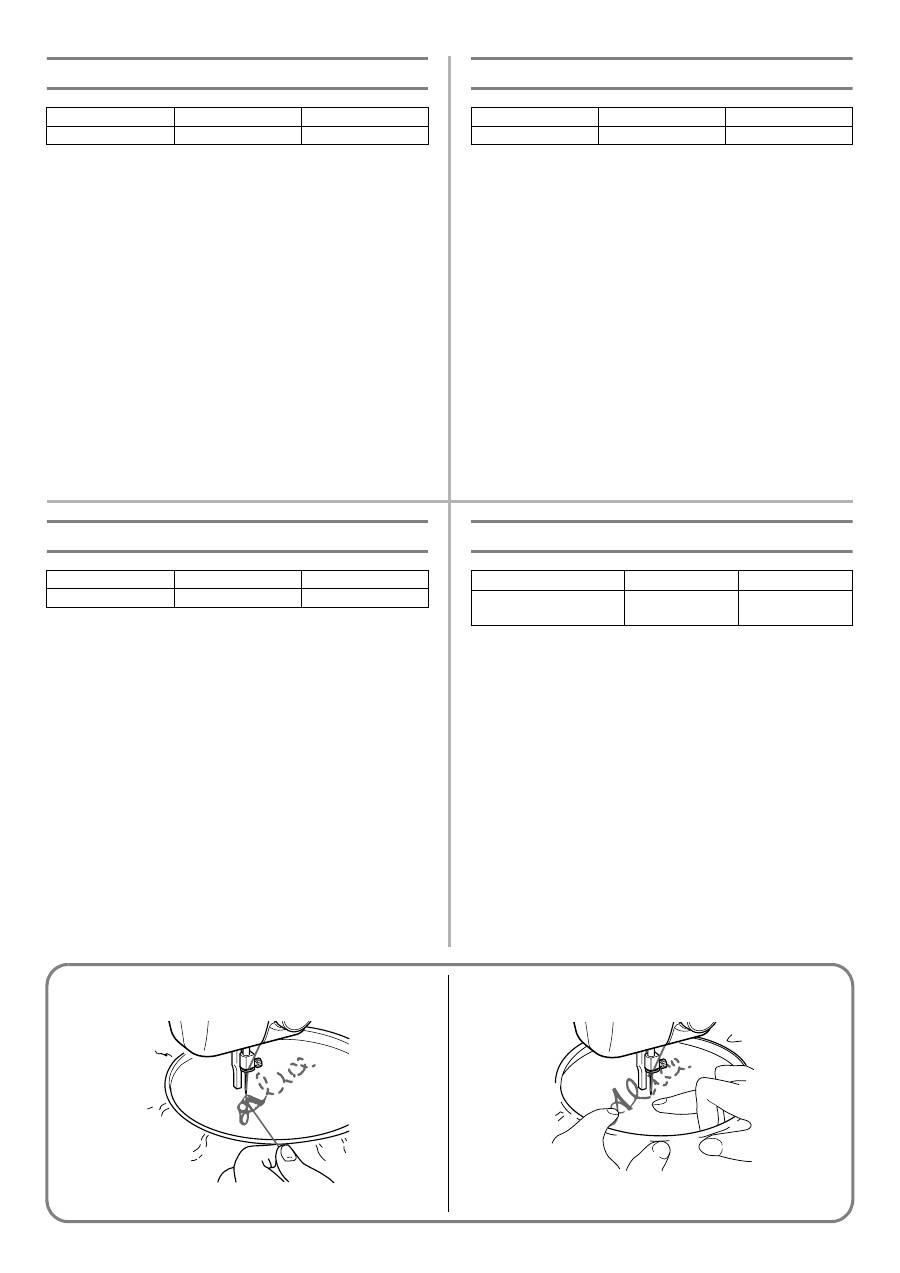
40
Monogramming and Embroidering
PREPARING FOR MONOGRAMMING AND EMBROIDERING
1. Place the darning plate on the needle plate.
2. Set the pattern selection dial to the appropriate Zigzag Stitch
(2, 3, 4 or 5).
3. Draw the lettering (for monogramming) or design (for
embroidering) on the surface of the fabric.
4. Stretch the fabric in an embroidery hoops as firmly as possible
with the underside of the fabric on the bottom of the inside
hoop.
5. Place the work under the needle and lower the presser bar
with both the presser foot and presser foot holder assembly
removed.
6. Pull the lower thread up through the work at the starting
position by turning the balance wheel to make a few stitches
to hold the end of the thread.
7. Grip the hoop with the thumb and forefingers of both hands
while pressing the fabric with the middle and third fingers and
supporting the outside of the hoop with your smaller fingers.
Pattern
Foot
Other
2, 3, 4, 5 (Zigzag Stitch)
None
Darning Plate
Monogrammes et broderies
PREPARATION AVANT DE FAIRE DES MONOGRAMMES OU
DES BRODERIES
1. Placer la plaque à repriser sur la plaque à aiguille.
2. Mettre le sélecteur de modèle sur le numéro de point zigzag
adéquat (2,3,4 ou 5).
3. Dessiner les lettres (monogrammes) ou le motif (broderies) sur
l’endroit du tissu.
4. Tendre au maximum l’ouvrage sur le tambour, en maintenant
l’envers du tissu dans le fond du cercle intérieur.
5. Placer l’ouvrage sous l’aiguille et abaisser la barre du pied-de-
biche, sans pied et sans support.
6. Tirer le fil inférieur vers le haut à travers l’ouvrage à la
position de départ en tournant le volant et faire quelques
points de maintien.
7. Saisir le tambour des deux mains, avec le pouce et l’index,
tout en appuyant sur le tissu avec le majeur et l’annulaire de
chaque main. Les auriculaires serviront à tenir l’extérieur du
tambour.
Modèle
Pied-de-biche
Autre
2, 3, 4, 5 (Point zigzag)
Sans pied
Plaque à repriser
Monogramas y bordados
PREPARACIÓN PARA MONOGRAMAS Y BORDADOS
1. Instale la placa de zurcir sobre la placa de agujas.
2. Ponga el selector de puntadas en la puntada zigzag apropiada
(2,3,4 ó 5).
3. Dibuje las letras (para monogramas) o el diseño (para bordados)
en el derecho del tejido.
4. Estire el tejido en el bastidor tanto como pueda y si es posible con
el revés abajo del círculo interior.
5. Coloque la tela debajo de la aguja y baje la barra del prensatelas,
aunque no haya ningún prensatelas o soporte puesto.
6. Girando la ruedecilla, pase el hilo inferior por el tejido donde
quiera empezar y cosa unas puntadas para asegurar el extremo del
hilo.
7. Sujete el bastidor con el pulgar e índice de cada mano, presione el
tejido con los dedos medios y anulares y aguante los exteriores del
bastidor con los meñiques.
Número de puntada
Prensatelas
Otros
2, 3, 4, 5 (Puntada zigzag)
Quitarlo, sin prensatelas
Placa de zurcir
Выстрачивание монограмм и вышивание
ПОДГОТОВКА К ВЫСТРАЧИВАНИЮ МОНОГРАММ И
ВЫШИВАНИЮ
1. Установите штопальную пластину на игольную пластину.
2. Установите ручку выбора вида строчки на Строчку «зигзаг» с
учетом Ваших потребностей (2, 3, 4 или 5).
3. Напишите буквы (для выстрачивания монограмм) или
начертите узор (для вышивания) на поверхности ткани.
4. Натяните ткань на пяльцы для вышивания настолько туго,
насколько это возможно, причем нижняя сторона ткани должна
быть обращена к нижней стороне внутреннего кольца пялец.
5. Разместите пяльцы под иглой и стержнем прижимной лапки
(и прижимная лапка, и адаптер прижимной лапки должны
быть сняты).
6. Вытяните нижнюю нить через ткань в том месте, откуда
начнёте вышивание, путём поворота маховика машины и
выполните несколько стежков для закрепления конца нити.
7. Зажмите пяльцы большим и указательным пальцами обеих
рук, одновременно прижимая ткань средними и
безымянными пальцами и поддерживая внешнюю
поверхность пялец мизинцами.
Вид строчки
Лапка
Прочее
2, 3, 4, 5 (Строчка «зигзаг»)
Не применяется
Штопальная
пластина

41
MONOGRAMMING (fig. A)
1. Sew moving the hoop slowly along the lettering at a constant
speed.
2. To secure the stitching, set the pattern selection dial to the
Straight Stitch (6-10) with the desired length and sew a few
stitches at the end of the last letter.
EMBROIDERING (fig. B)
1. Stitch the outline of the design by moving the embroidery
hoop.
2. Fill in the design alternating from the outline of the design to
the inside and from the inside to the outline until the design is
completely filled in. Keep the stitching close together.
NOTE:
A long stitch is made by moving the embroidery hoop rapidly and
a short stitch is made by moving it slowly.
3. To secure the stitching, set the pattern selection dial to the
Straight Stitch (6-10) with the desired length and sew a few
stitches at the end of the design.
CAUTION:
Keep fingers away from moving parts, especially needles.
MONOGRAMMES (fig. A)
1. Coudre à une vitesse constante en déplaçant lentement le
tambour le long des lettres.
2. Pour arrêter la couture, régler le sélecteur de modèle de point
sur le point droit (6-10) avec la longueur souhaitée et coudre
quelques points à la fin de la dernière lettre.
BRODERIES (fig. B)
1. Piquer le contour du motif en déplaçant le tambour au fur et à
mesure.
2. Remplir le motif en piquant alternativement à point serrés du
contour vers le centre et du centre vers le bord jusqu’à ce que
le dessin soit entièrement recouvert de points. Veiller à bien
rapprocher les rangées de points.
REMARQUE:
Pour obtenir de grands points, déplacer rapidement le tambour.
Pour faire un petit point, le déplacer lentement.
3. Pour arrêter la couture, régler le sélecteur de modèle de point
sur le point droit (6-10) avec la longueur souhaitée et coudre
quelques points droits à la fin du motif.
PRECAUTION:
Tenir les doigts à l’écart de tout élément mobile, en particulier
les aiguilles.
MONOGRAMAS (fig. A)
1. Cosa moviendo el bastidor lentamente por las letras, a una
velocidad constante.
2. Para asegurar las puntadas, ponga el selector de puntadas en la
puntada recta (6-10) con el largo deseado y cosa unas puntadas al
final de la última letra.
BORDADO (fig. B)
1. Remarque el contorno del diseño, moviendo el bastidor de acuerdo
con el dibujo.
2. Rellene el dibujo de puntadas adelantando alternativamente del
contorno hacia el interior y del interior hacia el exterior hasta que
el dibujo quede completamente cubierto de puntadas, teniendo
siempre cuidado en mantener las puntadas muy juntas.
NOTA:
Se pueden realizar puntadas largas al mover el bastidor rápidamente
y puntadas cortas al moverlo lentamente.
3. Para asegurar las puntadas, ponga el selector de puntadas en la
puntada recta (6-10) con el largo deseado y cosa unas puntadas
rectas al final del dibujo.
ATENCIÓN:
Mantenga los dedos alejados de las piezas móviles, especialmente de
las de agujas.
ВЫСТРАЧИВАНИЕ МОНОГРАММ (рис. A.)
1. Выполните выстрачивание, медленно, с постоянной
скоростью перемещая пяльцы вдоль заранее написанных
букв.
2. В конце последней буквы для закрепления строчки
выполните несколько прямых стежков, установив ручку
выбора вида строчки на Прямую строчку (6*10).
ВЫШИВАНИЕ (См. рис. B).
1. Перемещая пяльцы для вышивания, прошейте контур
узора.
2. Заполняйте узор стежками, поочередно перемещаясь от
контура узора внутрь рисунка и от середины рисунка к
краю контура до тех пор, пока узор не будет вышит
полностью. Следите, чтобы строчки ложились вплотную
друг к другу.
ПРИМЕЧАНИЕ:
При быстром перемещении пялец для вышивания
получаются длинные стежки, а при медленном – короткие.
1. В конце рисунка выполните несколько закрепляющих
стежков, установив ручку выбора вида строчки на Прямую
строчку с требуемой длиной стежка (6*10).
ВНИМАНИЕ:
Держите пальцы вдали от движущихся частей машины, особенно
от иглы
.
A
B
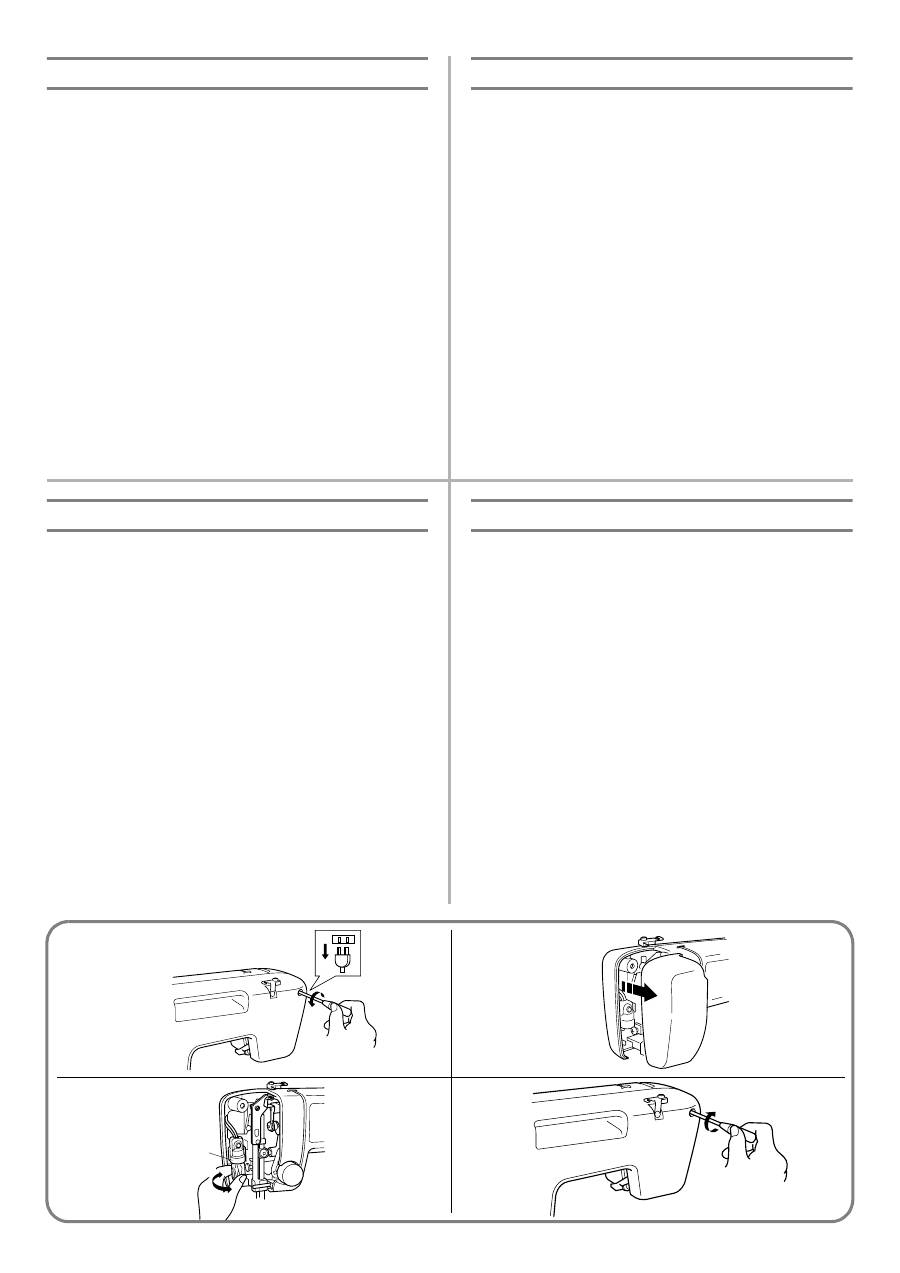
42
1
3
2
Changing the Bulb
1. Remove the power supply plug from the electrical outlet.
2. Loosen the face plate screw as shown in
fig. A
.
3. Remove the face plate from the machine as illustrated in
fig.
B
.
4. Replace the sewing light bulb. See
fig. C
.
a
Bulb
b
Loosen
c
Tighten
5. Reattach the face plate and fasten the screw as shown in
fig.
D
.
Remplacement de l’ampoule
1. Retirer la fiche d’alimentation de la prise de courant.
2. Desserrer la vis du capot de la machine comme indiqué à la
fig. A
.
3. Retirer le capot comme le montre la
fig. B
.
4. Remplacer l’ampoule de la lampe. Voir
fig. C
.
a
Ampoule
b
Desserrer
c
Visser
5. Rattacher le capot et resserrer la vis comme l’indique la
fig. D
.
Cambio de la bombilla
1. Quite el enchufe de la máquina de la toma de corriente.
2. Afloje el tornillo de la cubierta de la máquina tal como se indica
en la
fig. A
.
3. Retire la cubierta de la máquina tal como se indica en la
fig. B
.
4. Cambie la bombilla tal como se muestra en la
fig. C
.
a
Bombilla
b
Aflojar
c
Apretar
5. Vuelva a colocar la cubierta y apriete el tornillo tal como indica la
fig. D
.
Замена лампочки подсветки
1. Выньте вилку сетевого шнура из электрической розетки.
2. Отверните винт фронтальной крышки машины, как
показано на
рис. A
.
3. Снимите фронтальную крышку с машины, как показано
на
рис. B
.
4. Замените лампочку подсветки. См.
рис. С
.
a
Лампочка
b
Вывёртывание
c
Завёртывание
5. Заново установите фронтальную крышку и закрепите её
винтом как показано на
рис. D
.
A
B
C
D

43
Oiling
1. Remove the power supply plug from the outlet.
2. Put 2 to 3 drops of oil at each of the points indicated in
fig. A
.
3. After oiling, run the machine at a fast speed without thread
installed for a short time.
4. Be sure to wipe any excess oil off the machine.
NOTE:
The machine should be oiled once a week if it is used more than
one hour a day. If the machine is used more often, oil every day.
Sewing machine oil is available from your local sewing machine
dealer or service center.
Do not apply too much oil as it may get on your thread and
fabric.
Cleaning
Removing the Shuttle Hook
1. Remove the needle.
2. Remove the extension table and open the shuttle cover on the
front of the free arm.
3. Take out the bobbin case by opening its latch and pulling it
out from the shuttle race.
4. Slide the latch levers out from the retaining ring to remove the
retaining ring. See
fig. A
.
5. Remove the hook by grasping its center post of the hook and
pulling it out as shown in
fig. B
.
Graissage
1. Retirer la fiche d’alimentation de la prise de courant.
2. Mettre 2 ou 3 gouttes d’huile sur chacun des points indiqués
sur la
fig. A
.
3. Après le graissage, faire fonctionner la machine à grande
vitesse, sans fil, pendant un court instant.
4. Essuyer tout excédent d’huile.
REMARQUE:
Si la machine sert environ une heure par jour, elle doit être huilée
une fois par semaine. Si elle sert plus souvent, elle doit être huilée
chaque jour.
Vous trouverez de l’huile pour machine à coudre chez votre
revendeur ou dans un centre technique.
Ne pad verser trop d’huile car celle-ci pourrait couler sur les dils
ou sur le tissu.
Nettoyage
Comment retirer le crochet de la navette
1. Retirer l’aiguille.
2. Retirer la table d’extension et ouvrir le couvercle de la
navette, devant le bras libre.
3. Sortir le boîtier de la canette en tirant sur la languette
métallique pour le sortir de la coursière.
4. Retirer les pattes de blocage de l’anneau de maintien pour
l’ôter. Voir
fig. A
.
5. Sortir le crochet en le saisissant par son axe central et en
tirant, comme l’indique la
fig. B
.
Engrasado
1. Desenchufe la máquina de la toma de corriente.
2. Ponga 2 ó 3 gotas de aceite en cada uno de los puntos señalados
en la
fig. A
.
3. Después de lubricar la máquina, hágala funcionar rápidamente
un instante y sin hilo.
4. Asegúrese de limpiar cualquier exceso de aceite de la máquina.
NOTA:
Lubricar la máquina una vez por semana si se usa más de una hora
diaria. Si se usa más a menudo, engrasarla cada día. Puede comprar
aceite para máquina de coser a su representante o en el centro técnico
local. No conviene aplicar demasiada aceite ya que podrîa correr por
el hilo y el tejido.
Смазка
1. Выньте вилку сетевого шнура из электрической розетки.
2. Капните по 2–3 капли масла в каждую из точек,
отмеченных на
рис. A
.
3. После смазывания запустите машину на большой скорости
на короткое время; нити при этом не должны быть
заправлены.
4. Сотрите излишки масла с машины.
ПРИМЕЧАНИЕ:
Машину нужно смазывать раз в неделю, если она используется
более одного часа в день. При более интенсивном
использовании смазывайте машину каждый день.
Смазочное масло для швейной машины можно приобрести у
региональных дилеров швейных машин или в сервисных
центрах.
Избегайте излишнего смазывания, поскольку масло может
попасть как на нить, так и на изделие.
A
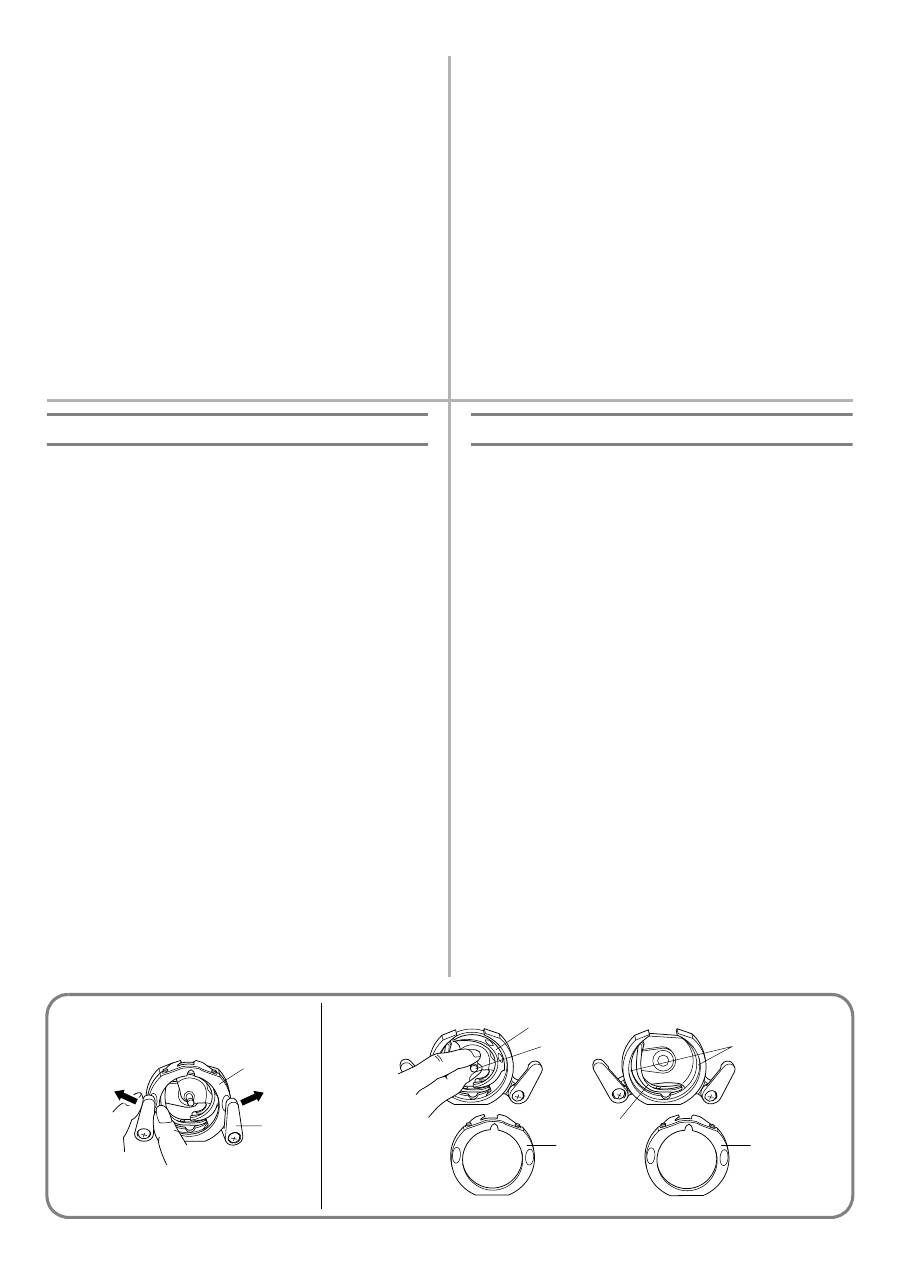
44
1
2
6
1
5
1
3
4
NOTE:
When the needle is lowered, the shuttle hook cannot be
removed.
Cleaning the Shuttle Race
1. Remove any accumulated lint and thread with a brush from
the retaining ring, hook, driver and race body.
2. A cloth dampened with machine oil should be used to wipe
the shuttle race clean of lint.
3. Clean the lint from the shuttle hook in the same manner as
described in step 2.
4. Reassemble the hook with the notch at the top and push the
latch levers back to their positions to hold the retaining ring in
place.
a
Retaining ring
b
Latch lever
c
Hook
d
Hook center post
e
Driver
f
Race body
REMARQUE:
Il est impossible de retirer le crochet de la navette lorsque
l’aiguille est abaissée.
Nettoyage de la coursière de la navette
1. A l’aide d’une petite brosse, enlever la bourre et le fil qui se
sont accumulés dans l’anneau de maintien, sur le crochet,
dans l’entraînement et sur la coursière.
2. Nettoyer la coursière avec un chiffon imbibé d’huile pour machine.
3. Nettoyer la bourre du crochet de la navette comme indiqué
au point 2.
4. Remonter le crochet avec l’encoche vers le haut et repousser
les pattes de blocage en place, pour qu’elles maintiennent
l’anneau en place.
a
Anneau de maintien
b
Patte de blocage
c
Crochet
d
Axe central du crochet
e
Entraînement
f
Coursière
Limpieza
Para sacar el garfio de la lanzadera
1. Quite la aguja.
2. Retire el soporte de los accesorios y abra la cubierta de la
lanzadera, enfrente del brazo libre.
3. Saque el portacanilla, abriendo su uñeta metálica (pestillo) y
retirándolo de la pista de la lanzadera.
4. Retire las palancas que sujetan el anillo retenedor y saque dicho
anillo. Véase
fig. A
.
5. Retire el garfio cogiéndolo de la barra central y sacándolo tal
como ilustra la
fig. B
.
NOTA:
No puede quitarse el garfio cuando la aguja está abajo.
Limpieza de la pista de la lanzadera
1. Quite los hilos y polvo acumulados en el anillo retenedor, garfio,
impulsor y pista con un cepillo.
2. Limpie el polvo de la lanzadera con un trapo impregnado de aceite
de máquina.
3. Limpie los hilos y polvo del garfio tal como indicado en el punto 2.
4. Vuelva a juntar el garfio con la hendidura arriba y empuje las
palancas en sus posiciones previas para que mantengan el anillo
retenedor en su sitio.
a
Anillo retenedor
b
Palanca de la uñeta
c
Garfio
d
Eje central del garfio
e
Impulsor
f
Pista de la lanzadera.
Чистка
Извлечение челнока
1. Снимите иглу.
2. Снимите столик*приставку и откройте крышку
челночного устройства в передней части рукавной
платформы.
3. Извлеките шпульный колпачок, открыв его защёлку и
вытащив его из обоймы челнока.
4. Раздвиньте фиксирующие рычажки в стороны от
стопорного кольца, чтобы вынуть его. См.
рис. A
.
5. Извлеките челнок, захватив его за центральный штырь,
как показано на
рис. B
.
ПРИМЕЧАНИЕ:
Когда игла находится в нижнем положении, челнок вынуть
невозможно.
Очистка челночного устройства
1. С помощью щеточки очистите от скопившихся волокон
ткани и нитей стопорное кольцо, челнок, поводок и гнездо
челнока.
2. Для протирки челночного гнезда с целью очистки его от
ворса должна использоваться ветошь, смоченная
машинным маслом.
3. Таким же образом, как описано в шаге 2, очистите от ворса
челнок.
4. Соберите челнок в обратной последовательности и
верните фиксирующие рычажки, удерживающие
стопорное кольцо, в их исходное положение.
a
Стопорное кольцо
b
Фиксирующий рычажок
c
Челнок
d
Центральный штырь челнока
e
Поводок
f
Обойма
A
B
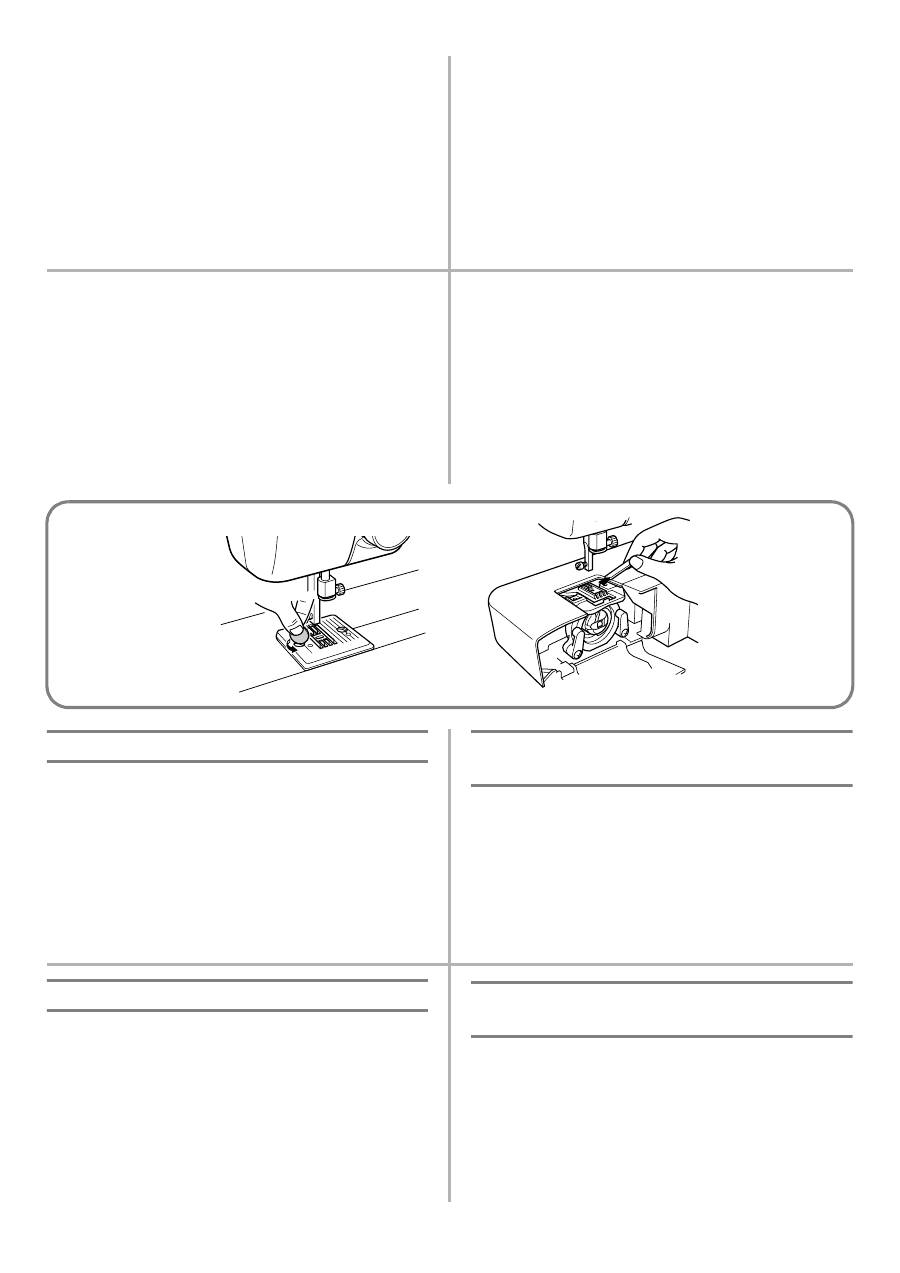
45
Cleaning the Feed Dogs
1. Remove the presser foot holder and the needle.
2. Remove the needle plate using a coin or screwdriver to take
out the screws.
3. Clean the lint from the upper part of the feed dogs and shuttle
race body with a brush.
Performance Checklist
Whenever sewing difficulties are encountered, review the section
in this instruction manual that details the operation you are
performing to make sure you are correctly using the machine. If
the problem continues, the following checklist may help you to
improve the operation.
If you still have difficulties, contact your nearest service center.
Nettoyage des griffes d’entraînement
1. Retirer le support de pied-de-biche et l’aiguille.
2. Retirer la plaque à aiguille avec une pièce de monnaie pour
desserrer les vis.
3. Nettoyer la partie supérieure des griffes d’entraînement et de
la coursière de la navette à l’aide d’une brosse.
Liste de vérification en cas de
défaillances
En cas de problème, consulter d’abord le chapitre voulu dans le
présent manuel pour s’assurer de la bonne utilisation de la
machine. Si le problème persiste, la liste de vérification suivante
peut vous aider à y remédier.
Si vous ne parvenez toujours pas à résoudre le problème, veuillez
contacter le centre technique le plus proche.
Limpieza de los alimentadores
1. Quite el soporte del prensatelas y la aguja.
2. Retire la placa de agujas con una moneda para aflojar los
tornillos.
3. Limpie la parte superior de los dientes y el cuerpo de la lanzadera
con un cepillo.
Listado de posibles incidencias
Cada vez que encuentre dificultades al coser, vuelva a consultar la
parte de este manual de instrucciones que detalla la operación que
está realizando, para comprobar que usa correctamente la máquina.
Si el problema persiste, el siguiente listado le puede ayudar a mejorar
el funcionamiento.
Si a pesar de eso el problema persiste, póngase en contacto con el
servicio técnico más cercano.
Очистка гребенок транспортера
1. Снимите адаптер прижимной лапки и иглу.
2. Снимите игольную пластину, используя монету или
отвёртку для выворачивания винтов.
3. Очистите щеточкой верхнюю часть гребенок транспортера
и обоймы челнока.
Таблица контрольных проверок
технических характеристик
При возникновении каких*либо трудностей при шитье,
сначала просмотрите раздел руководства, касающийся
выполняемой операции, чтобы убедиться, что вы правильно
используете машину. Если проблема остается, приведенная
ниже таблица контрольных проверок может помочь устранить
неисправность.
Если неисправность устранить самостоятельно не удается,
обратитесь в ближайший сервисный центр.
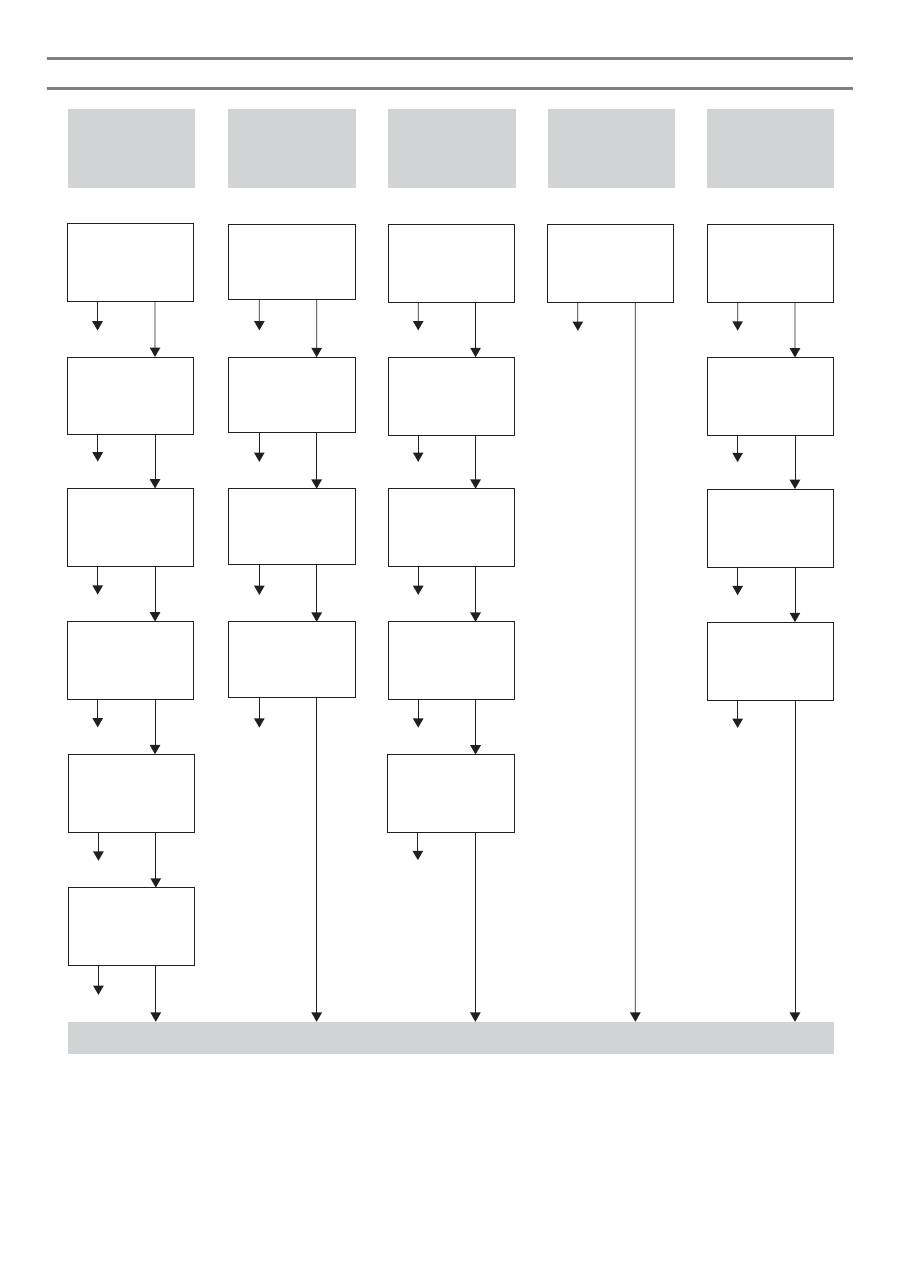
46
PERFORMANCE CHECK LIST
UPPER THREAD
BREAKS
LOWER (BOBBIN)
THREAD BREAKS
Upper thread is
not correctly
installed.
Lint is clinging to
the bottom of the
needle plate.
Spool of thread
is not correctly
installed.
Upper thread
tension is too
tight.
Lower thread
tension is too
tight.
Bobbin is not
threaded
properly in the
shuttle hook.
The combination
of needle size/
thread size/fabric
is incorrect.
The combination
of needle size/
thread size/fabric
is incorrect.
The combination
of needle size/
thread size/fabric
is incorrect.
Needle is
incorrectly
inserted.
Lower (bobbin)
thread is tangled.
Damaged or worn
needle is used.
Threading is not
correct.
Wrong needle is
used.
Upper thread is
tangled.
Threading is not
correct.
Needle is bent
or not sharp.
Lower threading
is not correct.
Thread tension is
incorrect.
Thread tension is
too tight.
Page 17
Page 16
No
No
Pages 20-21
Page 6
No
Pages 20-21
No
Page 14
Page 16
No
No
Page 6
Pages 12-17
No
Page 21
Page 20
No
No
Page 22
Page 6
No
Page 14
Page 12
No
No
Pages 43-45
Page 22
No
Page 6
No
Page 22
No
Page 16
No
No
No
No
No
CONTACT YOUR LOCAL SERVICE CENTER
SKIPPED STITCHES
LOOP IN SEAM
FABRIC PUCKERS
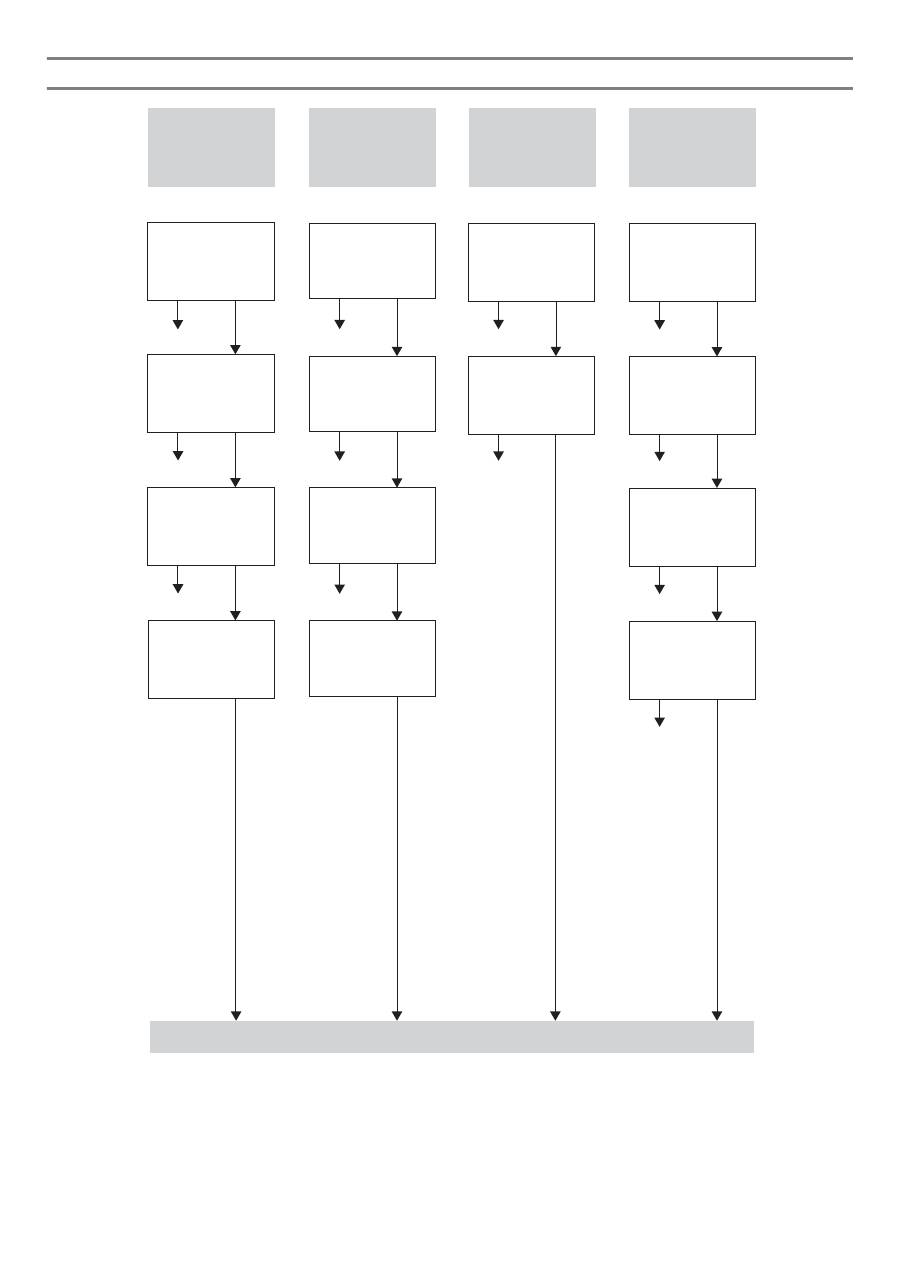
47
PERFORMANCE CHECK LIST
Page 6
No
Pages 43-45
Page 6
No
Page 43
Page 22
No
No
No
No
Page 4
No
Page 5
No
Page 5
No
Page 12
No
Page 22
No
Page 6
No
Pages 12-17
No
No
CONTACT YOUR LOCAL SERVICE CENTER
NEEDLE
BREAKS
FABRIC DOES
NOT FEED
PROPERLY
MACHINE IS
NOISY OR
SLOW
MACHINE
DOES NOT
START
Damaged or worn
needle is used.
Damaged or worn
needle is used.
Needle is not
correctly inserted.
Darning plate is
installed.
Thread is
tangled.
Insufficient
oiling.
The combination
of needle size/
thread size/fabric
is incorrect.
Lint is clinging to
the bottom of the
needle plate.
Main power
switch is turned
off.
Foot controller is
not used
correctly.
Power supply
plug is removed
from outlet.
The combination
of needle size/
thread size/fabric
is incorrect.
The bobbin
winding shaft is
slid toward the
bobbin presser.
Fabric is pulled
excessively. Let the feed
dogs move the fabric.
Do not pull the fabric.
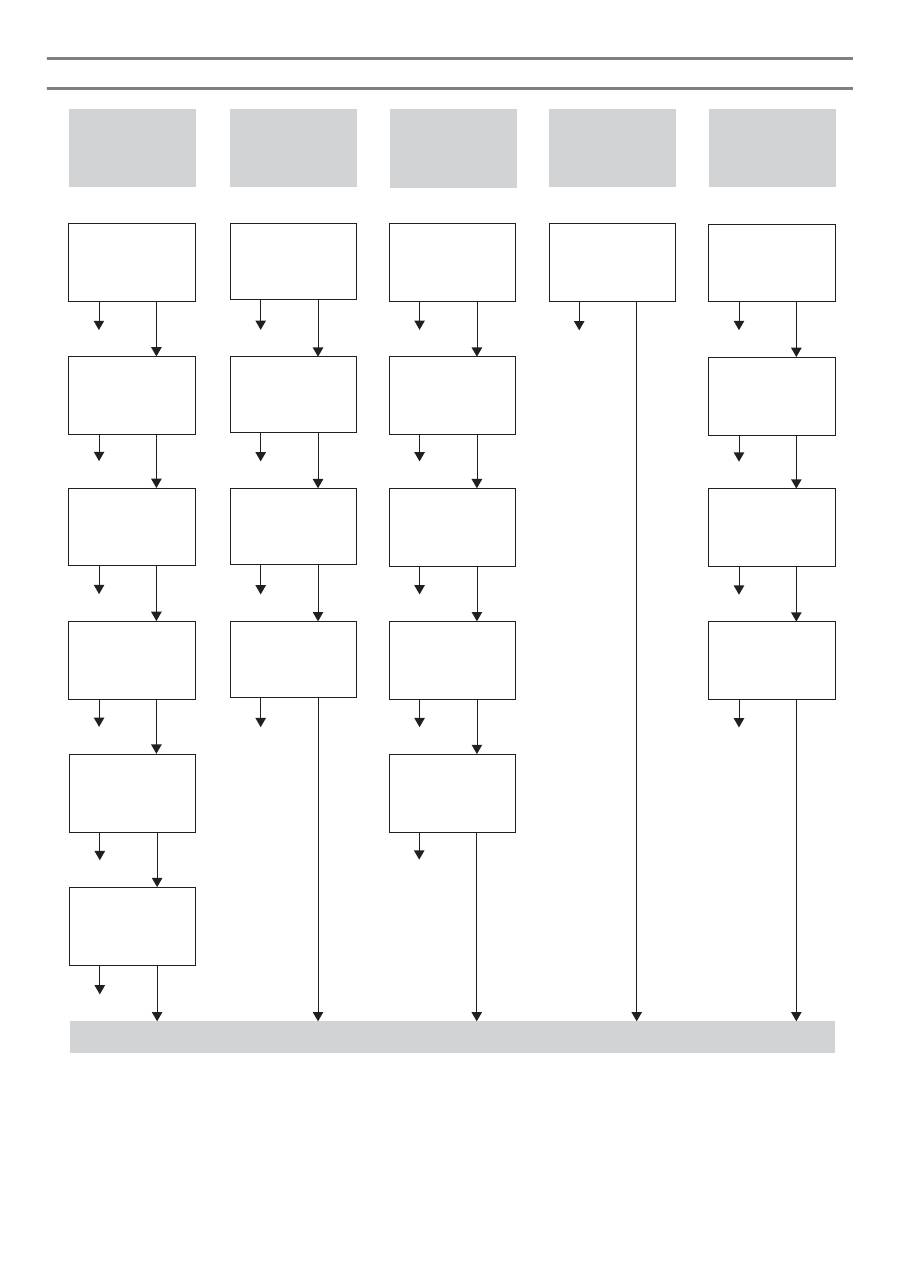
48
LISTE DE VERIFICATION EN CAS DE DEFAILLANCES
RUPTURE DU FIL
SUPERIEUR
LA COUTURE FAIT
DES BOUCLES
RUPTURE DU FIL
INFERIEURÅ (canette)
DES POINTS SAUTENT
LE TISSU FRONCE
Le fil supérieur n’est
pas bien enfilé.
Le fil inférieur (canette)
est emmêlé.
Le fil supérieur est
emmêlé.
Le fil supérieur est trop
tendu.
Le fil inférieur est trop
tendu.
L’enfilage de la canette
est incorrect.
L’enfilage n’est pas
correct.
L’enfilage est mauvais.
Le calibre de l’aiguille
est incorrect.
L’aiguille est tordue ou
trop peu pointue.
La combinaison
aiguille/fil/tissu n’est
pas correcte.
Une aiguille
endommagée ou usée
est utilisée.
La combinaison
aiguille/fil/tissu est
incorrecte.
Des peluches sont
accrochées à la plaque
à aiguille.
La combinaison
aiguille/fil/tissu
n’est pas correcte.
La canette est mal
installée dans le
crochet de la navette.
La bobine de fil est
mal installée.
L’aiguille est mal
installée.
Mauvaise tension des
fils.
Le fil est trop tendu.
CONTACTER LE CENTRE TECHNIQUE LE PLUS PROCHE
Page 16
Non
Page 17
Page 6
Non
Non
Page 6
Non
Page 6
Non
Page 17
Non
Page 21
Non
Page 22
Page 22
Page 43-45
Non
Non
Non
Page 20-21
Non
Page 20-21
Page 12-17
Non
Non
Page 14
Page 16
Non
Non
Page 16
Non
Page 20
Non
Page 12
Non
Page 22
Non
Page 6
Non
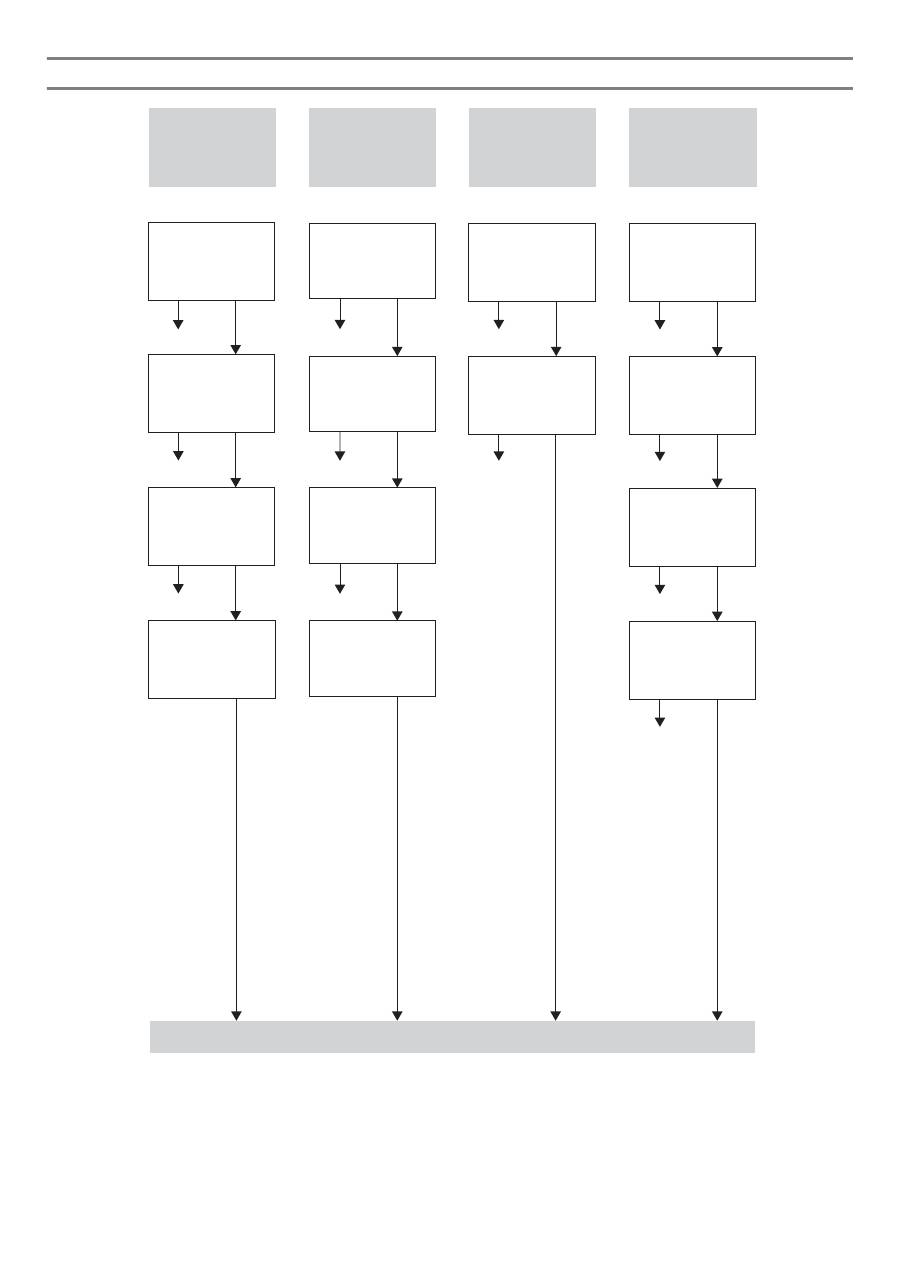
49
LISTE DE VERIFICATION EN CAS DE DEFAILLANCES
CONTACTER LE SERVICE TECHNIQUE LE PLUS PROCHE
L’ENTRAINEMENT DU
TISSU N’EST PAS
CORRECT
LA MACHINE EST
BRUYANTE OU LENTE
LA MACHINE NE
DEMARRE PAS
L’AIGUILLE CASSE
La combinaison
aiguille/fil/tissu est
incorrecte.
Une aiguille
endommagée ou usée
est utilisée.
Des peluches sont
accrochées sous la
plaque à aiguille.
Une aiguille
endommagée ou usée
est utilisée.
La combinaison
aiguille/fil/tissu est
incorrecte.
Le tissu est tiré avec
excès. Laisser les griffes
entraîner le tissu sans le
tirer.
L’axe de bobinage de
la canette est glissé
vers la position de
bobinage.
Le fil est emmêlé.
La plaque à repriser est
installée.
L’aiguille est mal
installée.
La machine manque
d’huile.
La fiche d’alimentation
est retirée de la prise.
L’interrupteur principal
est éteint.
La pédale n’est pas uti-
lisée correctement.
Page 22
Page 22
Page 43
Page 12
Page 5
Page 5
Page 4
Page 12-17
Page 43-45
Page 6
Page 6
Page 6
Non
Non
Non
Non
Non
Non
Non
Non
Non
Non
Non
Non
Non
Non
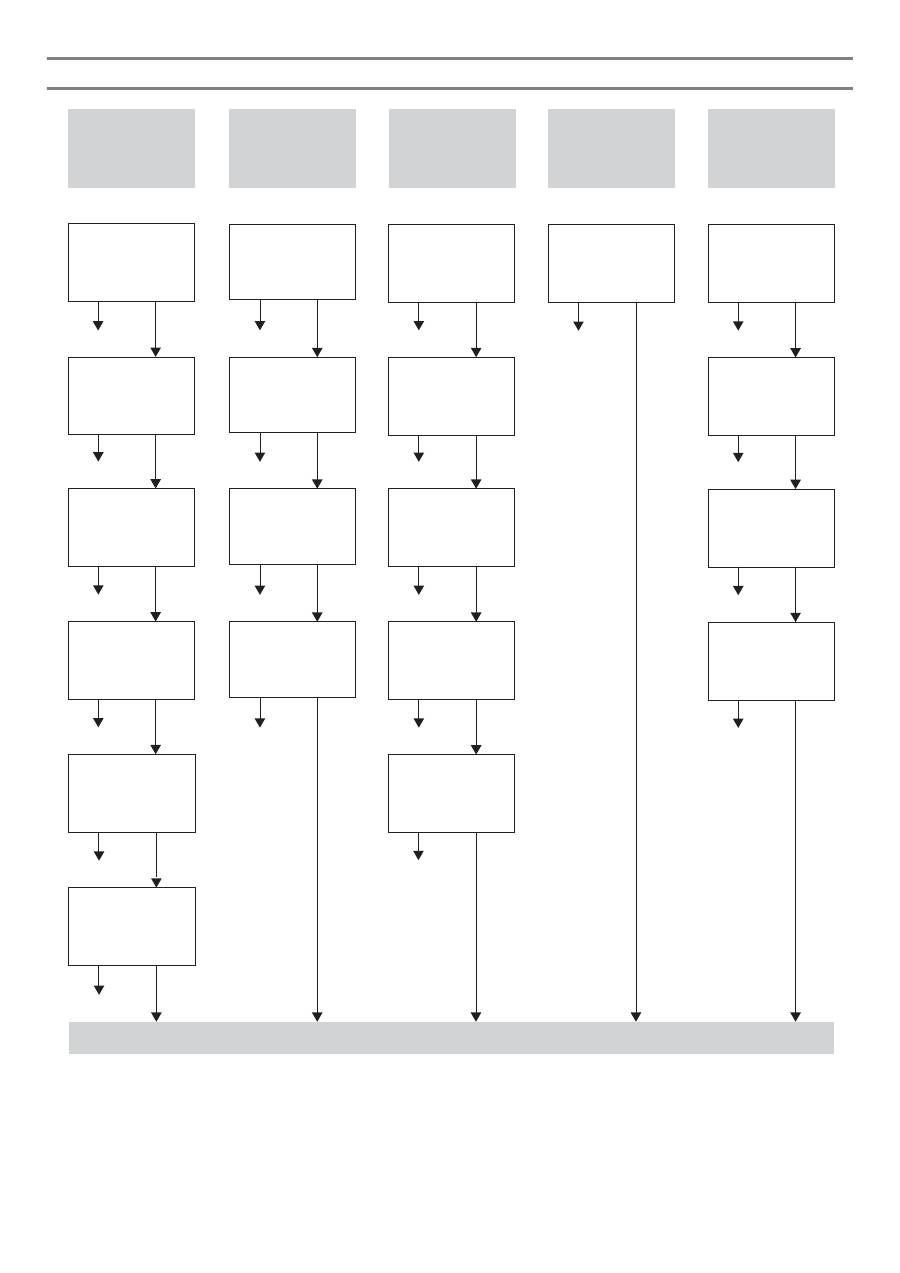
50
LISTADO DE POSIBLES INCIDENCIAS
ROTURA DEL HILO
SUPERIOR
BAGAS EN LAS
PUNTADAS
ARRUGAS EN EL
TEJIDO
SALTO DE
PUNTADAS
ROTURA DEL HILO
INFERIOR
(de la canilla)
ROTURA DEL HILO
SUPERIOR
El hilo superior está
enredado
La canilla no está bien
enhebrada en el garfio
Se está usando una
aguja dañada o gastada.
La aguja está mal
colocada
La tensión de los hilos es
demasiada fuerte
El tamaño de la aguja no
corresponde
Los hilos no están bien
enhebrados
La tensión de los hilos
no es correcta
El hilo inferior es
demasiado tirante
El hilo inferior está mal
enhebrado
Hay polvo en el fondo de
la placa de agujas
El hilo no está bien
enhebrado
El hilo superior es
demasiado tirante
El carrete está mal
colocado
La aguja está doblada o
gastada
La combinación tamaño
de aguja/grueso de hilo/
tejido no es correcta
La combinación tamaño
de aguja/grueso de hilo/
tejido no es correcta
La combinación tamaño
de aguja/grueso de hilo/
tejido no es correcta
El hilo inferior
(de la canilla) está
enredado
Página 17
Página 16
No
No
Página 20-21
Página 6
No
Página 20-21
No
Página 17
Página 16
No
No
Página 6
Página 12-17
No
Página 21
Página 20
No
No
Página 23
Página 6
No
Página 14
Página 12
No
No
Página 43-45
Página 23
No
Página 6
No
Página 23
No
Página 16
No
No
No
No
No
PONGASE EN CONTACTO CON EL SERVICIO TECNICO LOCAL
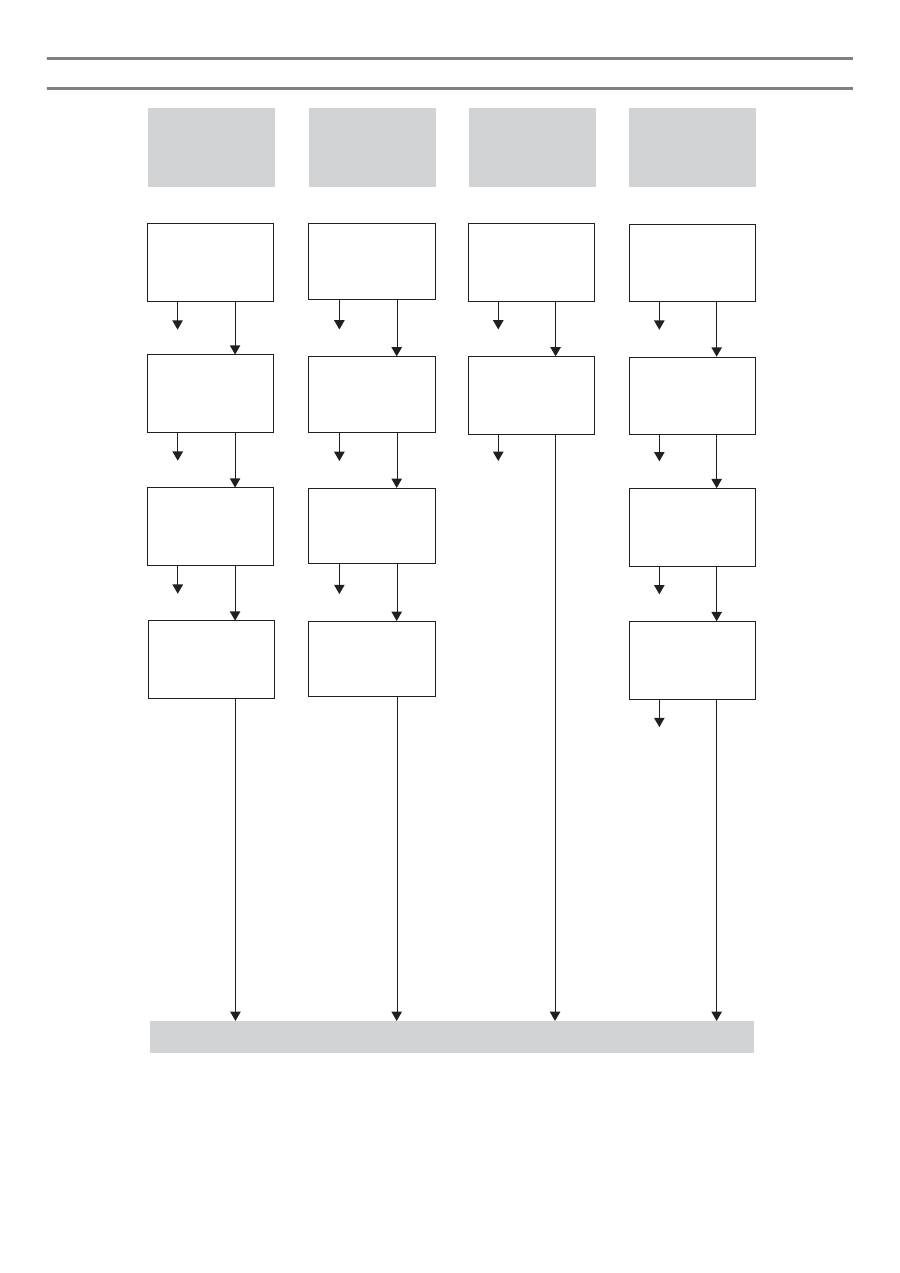
51
LISTADO DE POSIBLES INCIDENCIAS
EL TEJIDO NO
ARRASTRA BIEN
LA MAQUINA NO
ARRANCA
LA MAQUINA ES
RUIDOSA O FUNCIO-
NA MUY DESPACIO
LAAGUJA SE ROMPE
Página 6
No
Página 6
No
Página 43
Página 23
No
No
No
No
Página 4
No
Página 5
No
Página 5
No
Página 12
No
La combinaison
aiguille/fil/tissu est
incorrecte.
La combinación tamaño
de aguja/grueso de hilo/
tejido no es correcta
El enchufe de alimenta-
ción está desconectado
de la toma de corriente.
Se tira del tejido con
demasiada fuerza. Deje
que el arrastre lo aliment
solos. No tire del tejido.
El eje de bobinado de la
canilla se ha deslizado
hacia el presor de la
canilla.
Se está usando una
aguja dañada o gastada.
El hilo está enredado
No se usa bien el pedal
La placa de zurcir está
instalada
La aguja está mal
colocada
Falta de aceite
Hay polvo en la placa
de agujas
Se está usando una aguja
dañada o gastada.
El interruptor principal
está apagado
No
Página 6
No
Página 12-17
No
No
Página 23
Página 43-45
PONGASE EN CONTACTO CON EL SERVICIO TECNICO LOCAL

52
ТАБЛИЦА КОНТРОЛЬНЫХ ПРОВЕРОК ТЕХНИЧЕСКИХ ХАРАКТЕРИСТИК
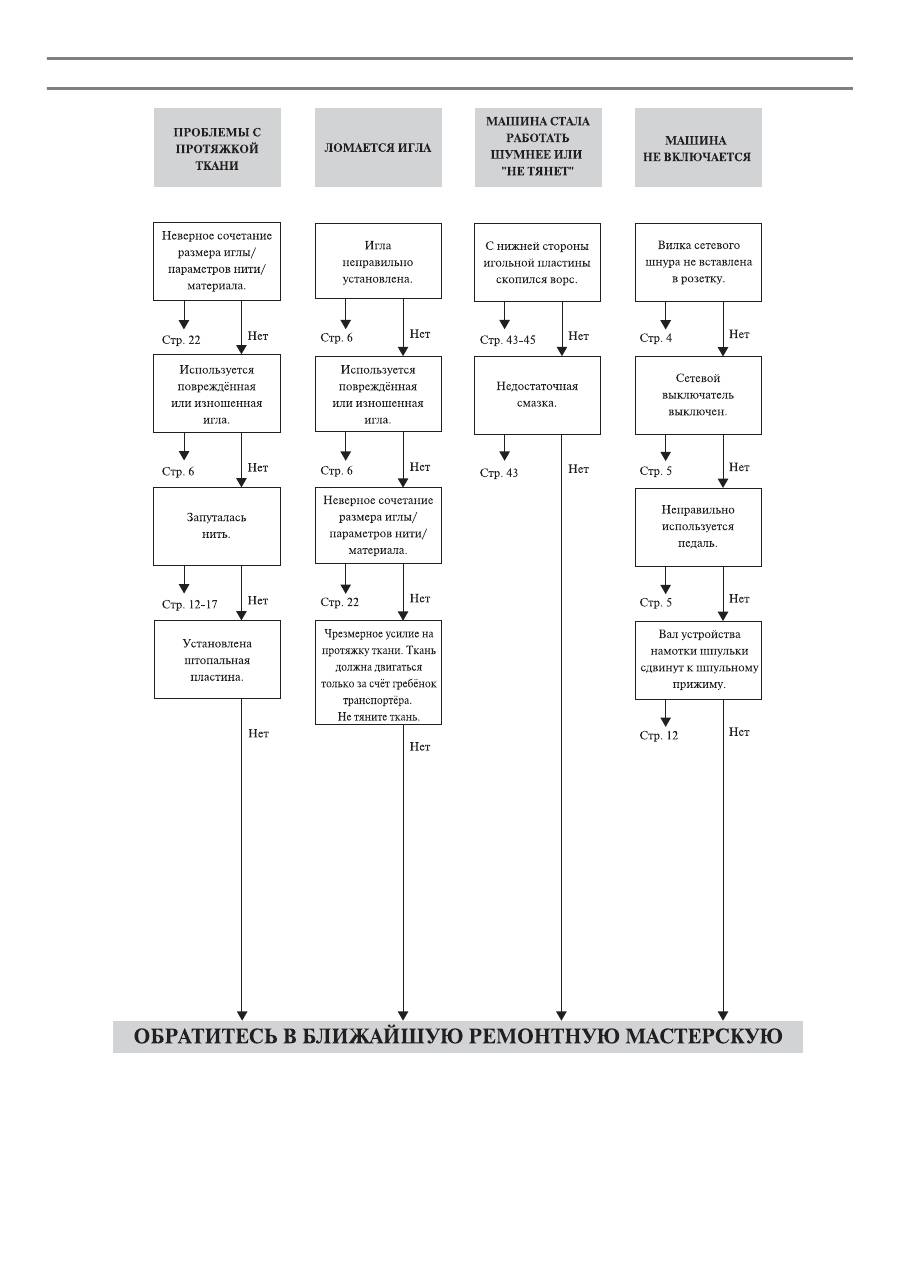
53
ТАБЛИЦА КОНТРОЛЬНЫХ ПРОВЕРОК ТЕХНИЧЕСКИХ ХАРАКТЕРИСТИК
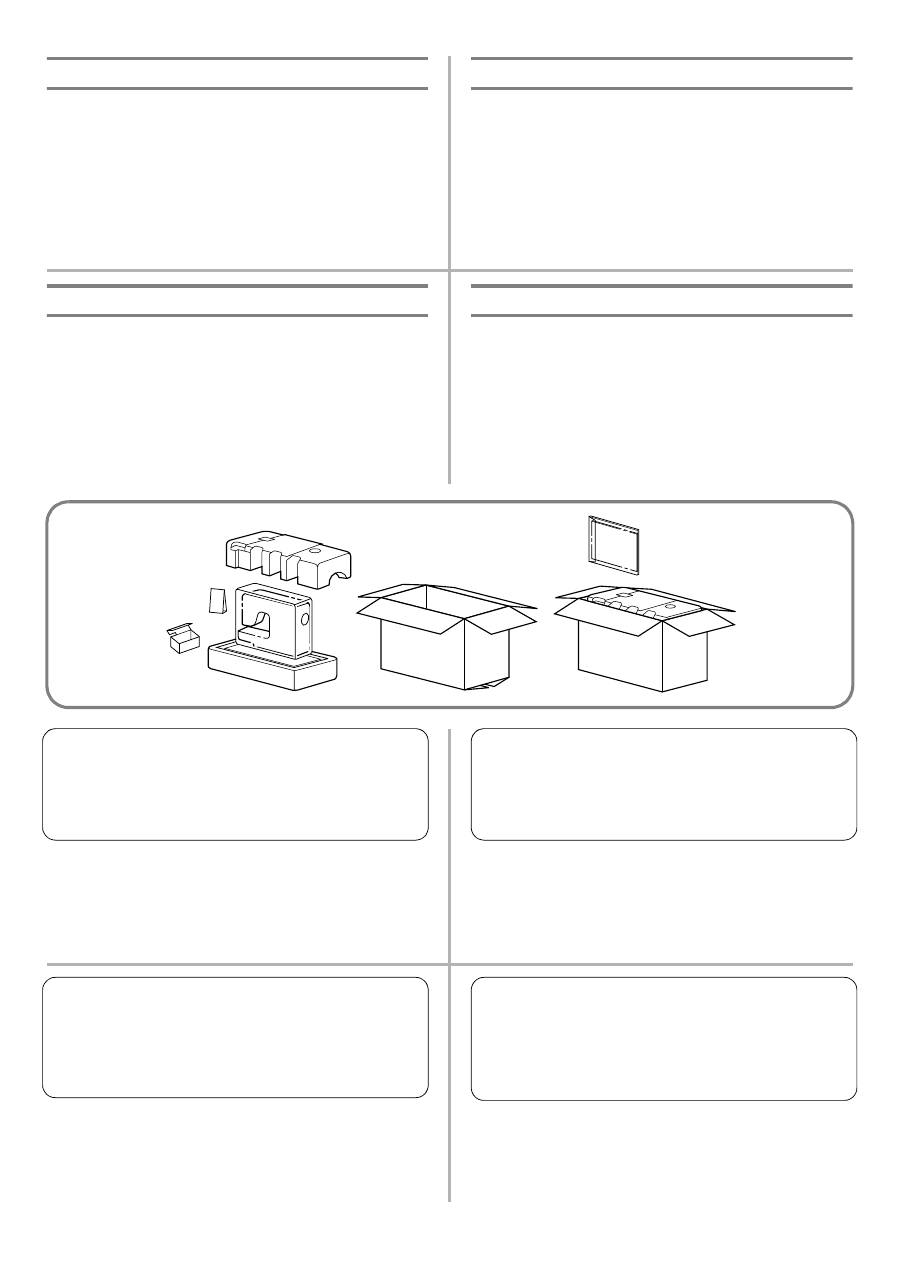
54
Repacking the Machine
Keep the carton and packing materials for future use. It may
become necessary to reship the sewing machine. Improper
packing or improper packing material could result in damage
during shipping. Instructions for repacking the machine are
illustrated below.
IMPORTANT
This packing material is designed to prevent damage in transit.
Save this packing material in the event it is needed to transport
this sewing machine.
Emballage de la machine
Conserver le carton et les matériaux d’emballage pour pouvoir
les réutiliser dans le futur ou pour réexpédier la machine. Un
emballage mal fait ou avec des matériaux inadéquats pourrait
occasionner des dégâts pendant le transport. Voir ci-après les
instructions pour remettre la machine dans son emballage
d’origine.
IMPORTANT
Cet emballage a été conçu pour protéger la machine pendant
le transport. Conservez-le au cas où il serait nécessaire de
déménager la machine.
Embalaje de la máquina
Guarde la caja de cartón y el embalaje por si acaso necesita
transportar la máquina en el futuro. Un embalaje inadecuado o con
materiales inadecuados puede causarle daños a la máquina durante
el transporte. Para embalar la máquina correctamente, sírvase seguir
las instrucciones que se ilustran continuación.
IMPORTANTE
El material de embalaje está diseñado para prevenir daños
durante el transporte. Guárdelo siempre en caso de que tenga que
volver a transportar la máquina.
Повторная упаковка машины
Сохраните коробку и упаковочные материалы для будущего
использования. Это может пригодиться при перевозке
швейной машины. Небрежное упаковывание или
неподходящий упаковочный материал могут стать причиной
повреждений во время транспортировки. Процесс
упаковывания машины изображен на последующих
иллюстрациях.
ВАЖНО
Упаковочные материалы предназначены для
предотвращения повреждения машины во время
перевозки. Сохраняйте их на случай, если потребуется
транспортировка швейной машины.

55
INDEX
Page
A
Accessories ............................................................................... 3
Applique................................................................................... 9
B
Blind Hem Stitching................................................................ 27
Bobbin winding ...................................................................... 12
Buttonhole ................................................................... 30-31, 33
Buttonhole Fine Adjustment .................................................... 34
Button Sewing......................................................................... 35
C
Cleaning ............................................................................ 43-45
Connecting Plugs ...................................................................... 4
D
Darning .................................................................................. 38
Drawing Up Lower Thread ..................................................... 17
E
Elastic Stitching....................................................................... 27
Embroidering ..................................................................... 40-41
F
Feed Dog Cleaning ................................................................. 45
Foot Controller.......................................................................... 5
Free-Arm Style .......................................................................... 8
G
Gathering................................................................................ 37
L
Lower Threading ..................................................................... 14
M
Main Power Switch................................................................... 5
Monogramming ................................................................. 40-41
N
Needle Replacement/inspection................................................ 6
O
Oiling ..................................................................................... 43
P
Pattern Selection Dial ............................................................... 9
Performance Checklist ...................................................... 46, 47
Principal Parts........................................................................ 1-2
R
Relative Chart of Sewing Fabrics, Needles and Threads .......... 22
Repacking............................................................................... 54
Reverse Sewing Lever ............................................................. 12
Page
S
Satin Stitching..........................................................................26
Sewing Light
Light Bulb Replacement .................................................42
Switch..............................................................................5
Shell Tuck Stitching .................................................................29
Shuttle Hook Removal ........................................................43-44
Shuttle Race Cleaning..............................................................44
Straight Stitching......................................................................24
Stretch Blind Stitch ..................................................................27
T
Thread Tension...................................................................20-21
Troubleshooting.................................................................46, 47
Twin-Needle Sewing ...............................................................18
U
Upper Tension Control Dial.....................................................20
Upper Threading ................................................................15-16
W
Winding the Bobbin ................................................................12
Z
Zigzag Stitching .......................................................................26
Zipper Insertion .......................................................................36
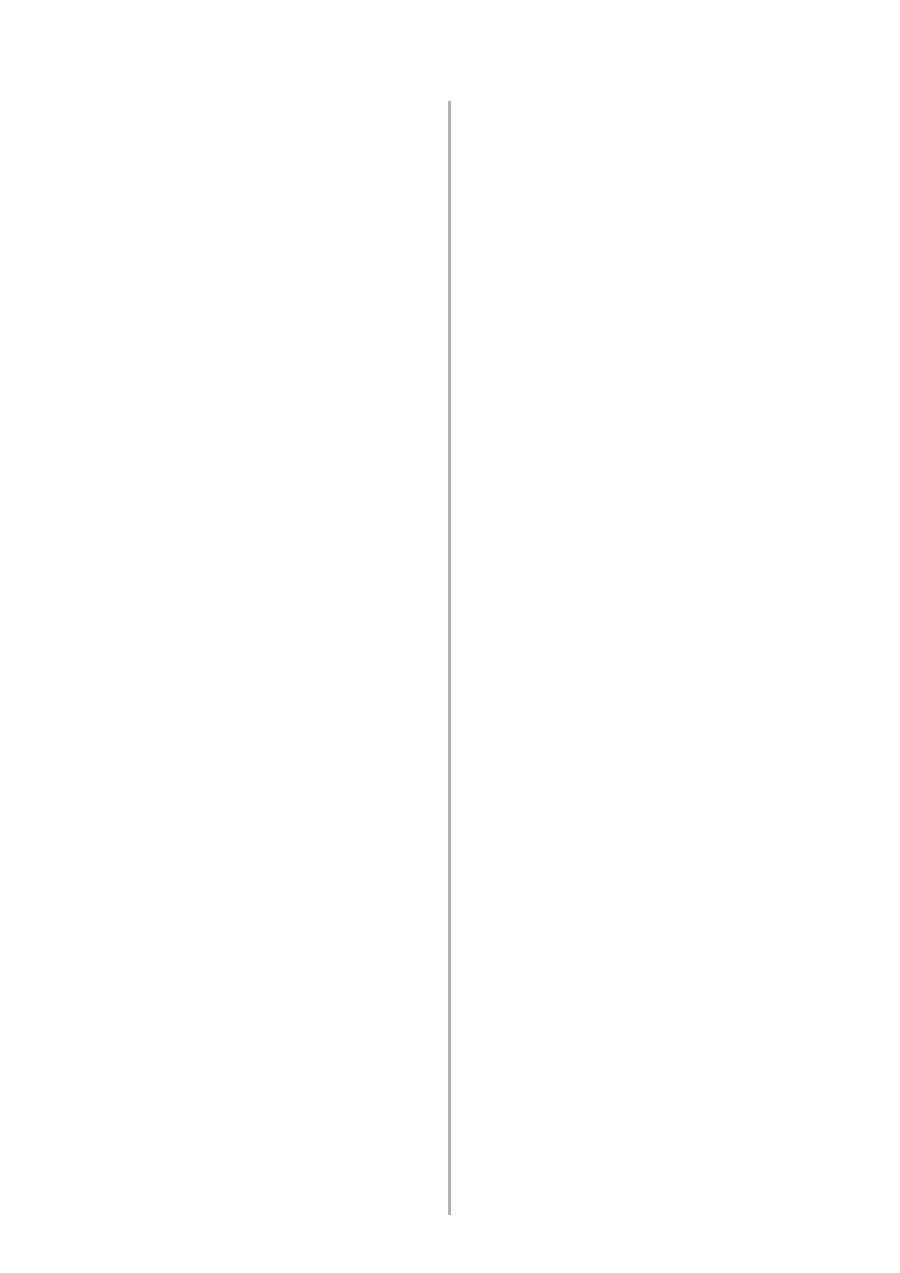
56
INDEX
Page
A
Accessoires ............................................................................... 3
Aiguille
Remplacement/Inspection ............................................... 6
Appliques ............................................................................... 39
B
Boutonnière ................................................................. 30-31, 33
Broderies ........................................................................... 40-41
C
Coudre un bouton................................................................... 35
Couture avec une aiguille jumelée .......................................... 18
E
Emballage ............................................................................... 54
Equilibrage des boutonnières .................................................. 34
F
Fronces ................................................................................... 37
G
Graissage ................................................................................ 43
Guide de dépannage......................................................... 48, 49
I
Insertion de fermeture à glissière............................................. 36
Interrupteur principal ................................................................ 5
L
Lampe de couture
Interrupteur ..................................................................... 5
Remplacement de l’ampoule ......................................... 42
Levier de couture en marche arrière........................................ 12
Liste de vérification des défaillances ................................. 48, 49
M
Mise en place du fil inférieur .................................................. 14
Mise en place du fil ssupérieur........................................... 15-16
Modèle bras libre...................................................................... 8
Monogrammes ................................................................... 40-41
Page
N
Nettoyage...........................................................................43-45
Nettoyage de la coursière de la navette ...................................44
Nettoyage des griffes d’entraînement .......................................45
P
Pédale .......................................................................................5
Pièces principales ..................................................................1, 2
Point de bourdon.....................................................................26
Point droit................................................................................24
Point picot ...............................................................................29
Point élastique .........................................................................28
Point élastique invisible ...........................................................27
Point zigzag.............................................................................26
R
Raccordement ...........................................................................4
Remontée du fil inféfieur .........................................................17
Remplissage de la canette........................................................12
Reprisage.................................................................................38
Retrait du crochet de la navette ..........................................43-44
S
Sélecteur de modèle de point ....................................................9
Sélecteur de tension supérieure ...............................................20
T
Tableau de comparaison tissus/aiguilles/fils .............................22
Tension des fils ...................................................................20-21
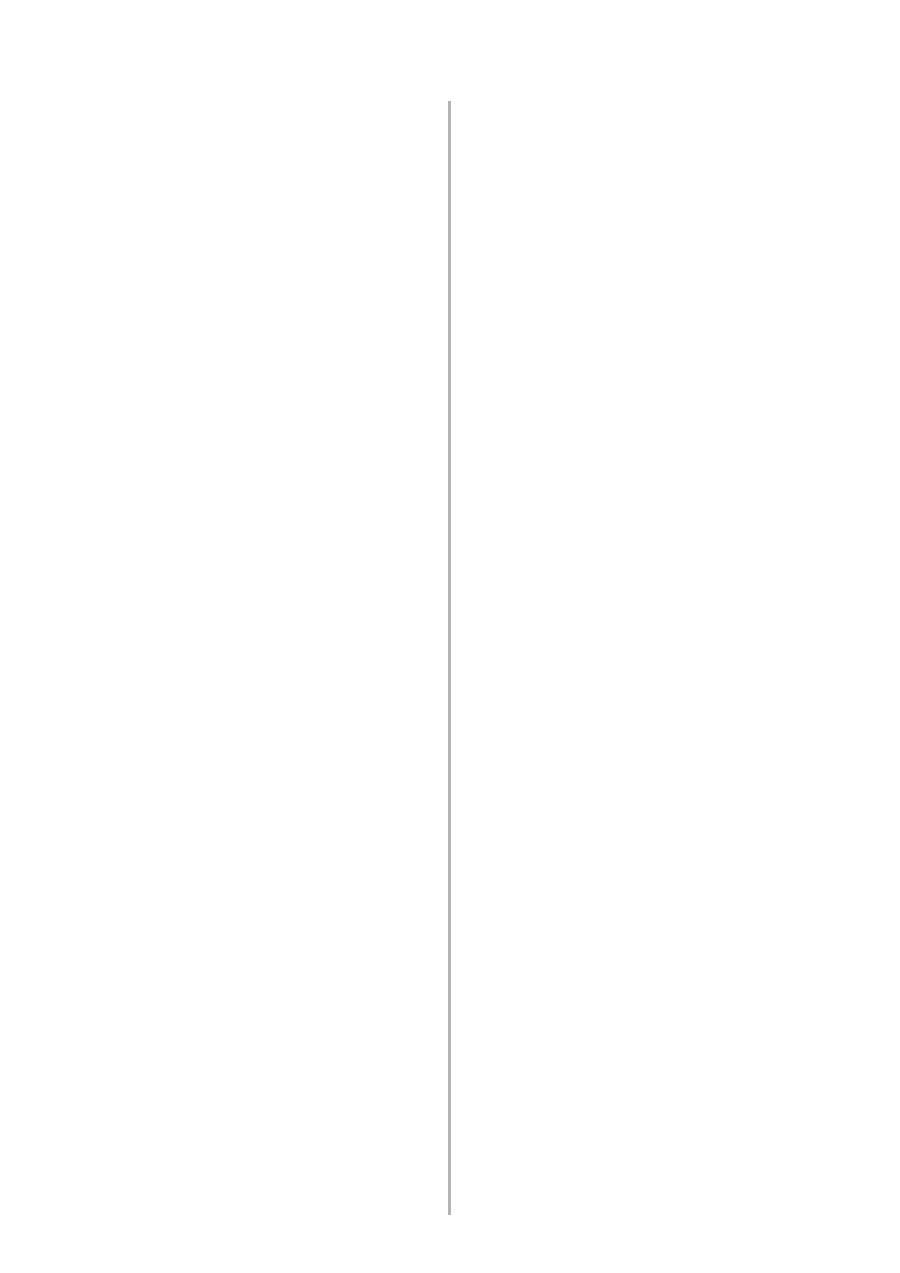
57
INDICE
Página
A
Accesorios .......................................................................................... 3
Aguja
Cambio/Verificación ................................................................. 6
Ajuste fino de los ojales ................................................................... 34
Aplicaciones ...................................................................................... 39
B
Bobinado de la canilla ...................................................................... 13
Bombilla
Cambio de la bombilla ........................................................... 42
Interruptor ............................................................................... 5
Bordado........................................................................................40-41
C
Conexión de los enchufes .................................................................... 4
Costura con dos agujas ..................................................................... 19
Costura de botones............................................................................ 35
D
Disco de tensión del hilo superior ................................................... 20
E
Elementos principales .................................................................... 1, 2
Embalaje ........................................................................................... 54
Engrasado ......................................................................................... 43
Enhebrado inferior ........................................................................... 14
Enhebrado superior ....................................................................15-16
F
Fruncido ............................................................................................ 37
G
Guía de localización de errores .................................................. 50, 51
I
Interruptor principal de la luz ............................................................ 5
L
Limpieza .......................................................................................44-45
Limpieza de la lanzadera .................................................................. 44
Limpieza de los alimentadores.......................................................... 45
Listado de posibles incidencias................................................... 50, 51
Página
M
Modalidad brazo libre......................................................................... 8
Monogramas ................................................................................40-41
O
Ojales .....................................................................................30, 32-33
P
Palanca de retroceso ........................................................................ 12
Pedal ................................................................................................... 5
Poner cremalleras ............................................................................. 36
Puntada elástica................................................................................ 28
Puntada invisible............................................................................... 27
Puntada invisible elástica ................................................................ 27
Puntada de realce.............................................................................. 26
Puntada de unión .............................................................................. 28
Puntada ondas................................................................................... 29
Puntada recta ...............................................................................24-25
Puntada zigzag .................................................................................. 26
S
Sacar el garfio de la lanzadera ......................................................... 44
Sacar el hilo de la canilla ................................................................. 17
Selector de puntadas ........................................................................... 9
T
Tabla de relación entre tejidos, hilos y agujas .................................. 23
Tensión de los hilos ......................................................................20-21
Z
Zurcido .............................................................................................. 38
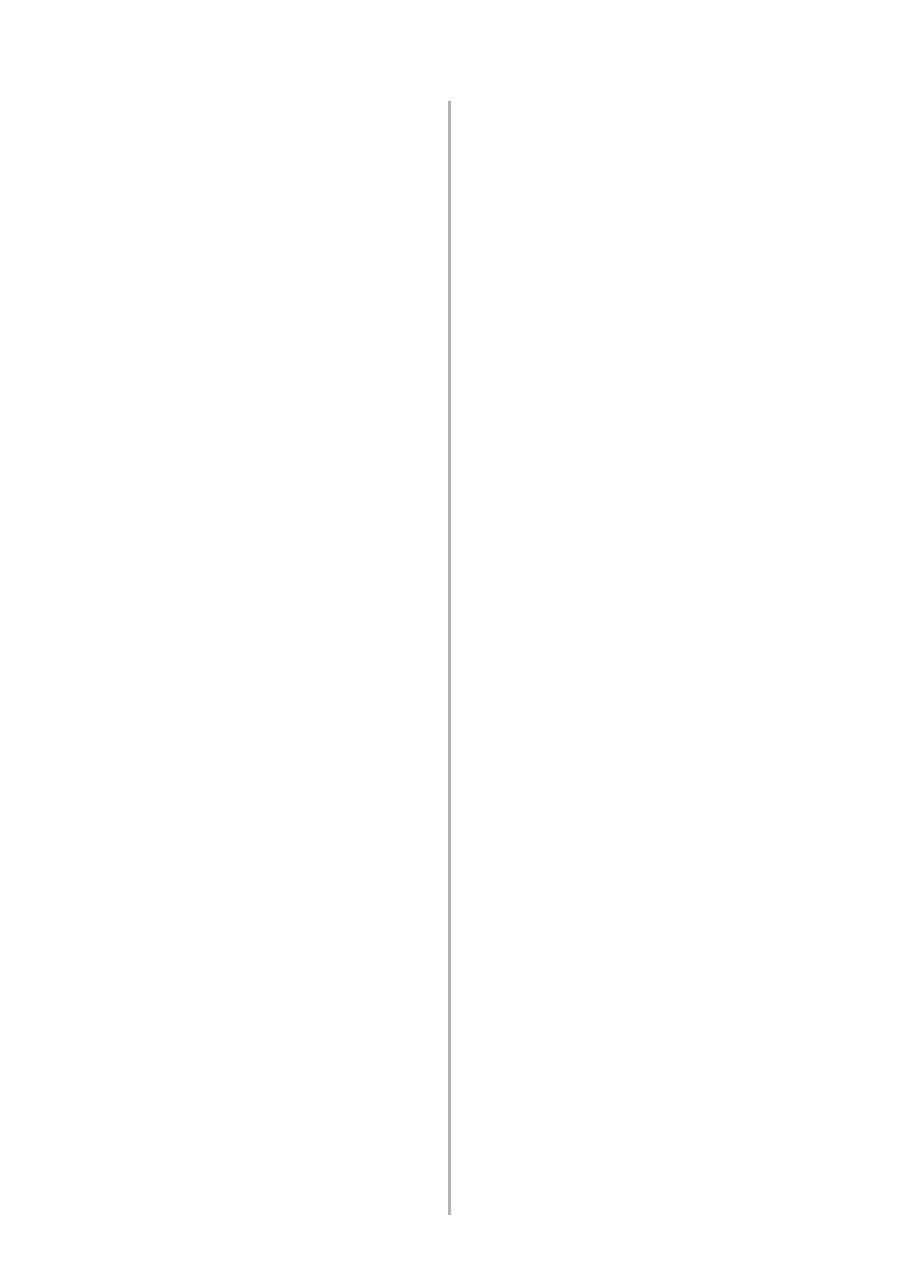
58
УКАЗАТЕЛЬ
Стр.
А
Аппликация .............................................................................. 9
В
Виды строчек
Атласная строчка .......................................................... 26
Потайная строчка*мережка.......................................... 27
Прямая строчка............................................................. 24
Строчка «зигзаг» ........................................................... 26
Строчка*ракушка.......................................................... 29
Эластичная строчка ...................................................... 28
Вшивание застежки «молния» ............................................. 36
Выполнение сборок................................................................ 37
Выстрачивание монограмм............................................... 40*41
Вытягивание нижней нити .................................................... 17
Вышивание ........................................................................ 40*41
Д
Дисковый регулятор натяжения верхней нити ..................... 20
З
Замена/осмотр иглы ................................................................. 6
Заправка верхней нити ...................................................... 15*16
Заправка нижней нити .......................................................... 14
И
Извлечение челнока .......................................................... 43*44
К
Клавиша шитья в обратном направлении ............................. 12
Н
Намотка шпулек ..................................................................... 12
Натяжение нити ................................................................ 20*21
О
Основные части ..................................................................... 1*2
Очистка гребенок транспортера ............................................ 45
Очистка челночного устройства ............................................ 44
П
Педаль ...................................................................................... 5
Переупаковка машины........................................................... 54
Петля.............................................................................30*31, 33
Подключение электропитания ................................................ 4
Подсветка
Замена лампочки подсветки ........................................ 42
Выключатель................................................................... 5
Поиск и устранение неисправностей ...............................53, 54
Принадлежности ...................................................................... 3
Пришивание пуговиц ............................................................ 35
Проверка машины при возникновении проблем ............53, 54
Р
Ручка выбора вида строчки ...................................................... 9
Стр.
С
Сетевой выключатель............................................................... 5
Смазка..................................................................................... 43
Т
Таблица комбинаций тканей, игл и нитей при шитье .......... 22
Точная настройка при выметывании петель ......................... 34
Ф
Функция «свободный рукав» ................................................... 8
Ч
Чистка ................................................................................ 43*45
Ш
Шитье двойной иглой ............................................................ 18
Штопка ................................................................................... 38
Оглавление
- "IMPORTANT SAFETY INSTRUCTIONS"
- “IMPORTANTES CONSIGNES DE SECURITE”
- “IMPORTANTES INSTRUCCIONES DE SEGURIDAD”
- ИНСТРУКЦИИ ПО ТЕХНИКЕ БЕЗОПАСНОСТИ

